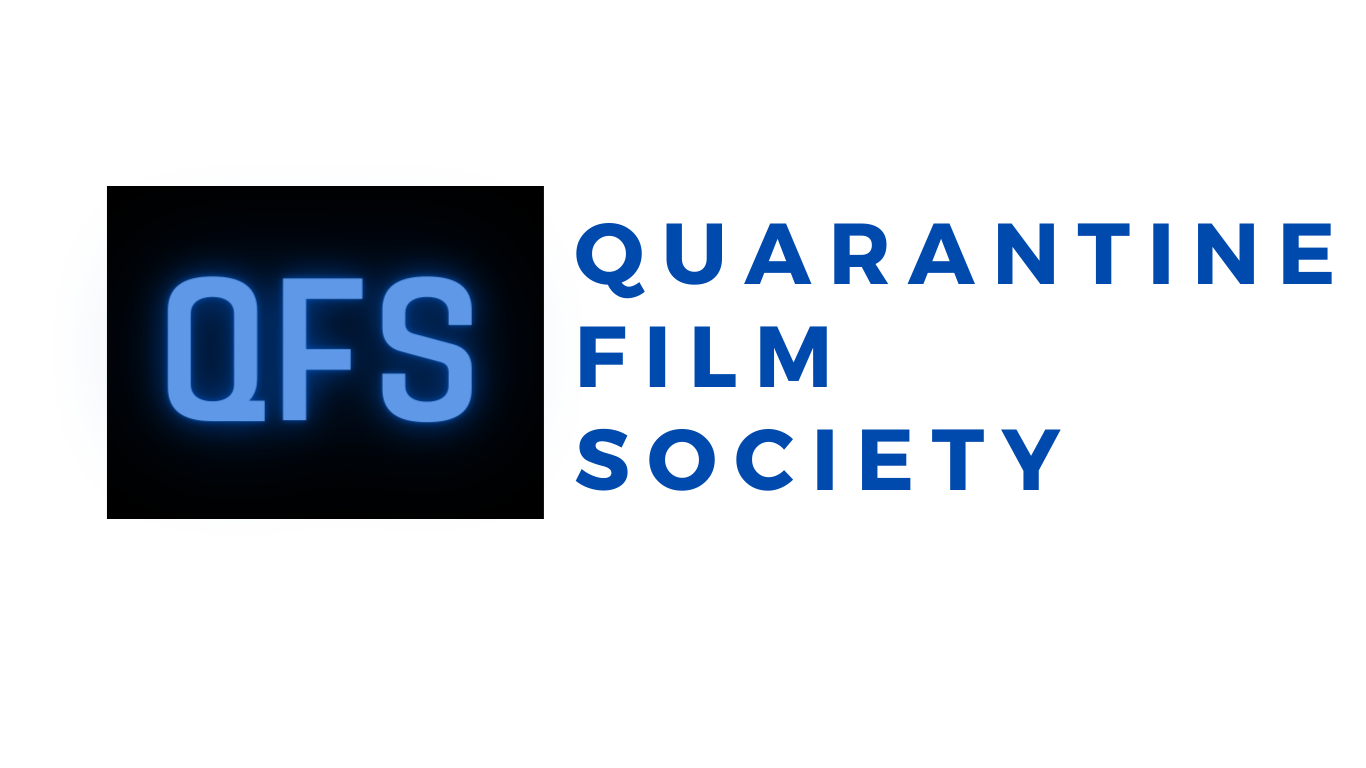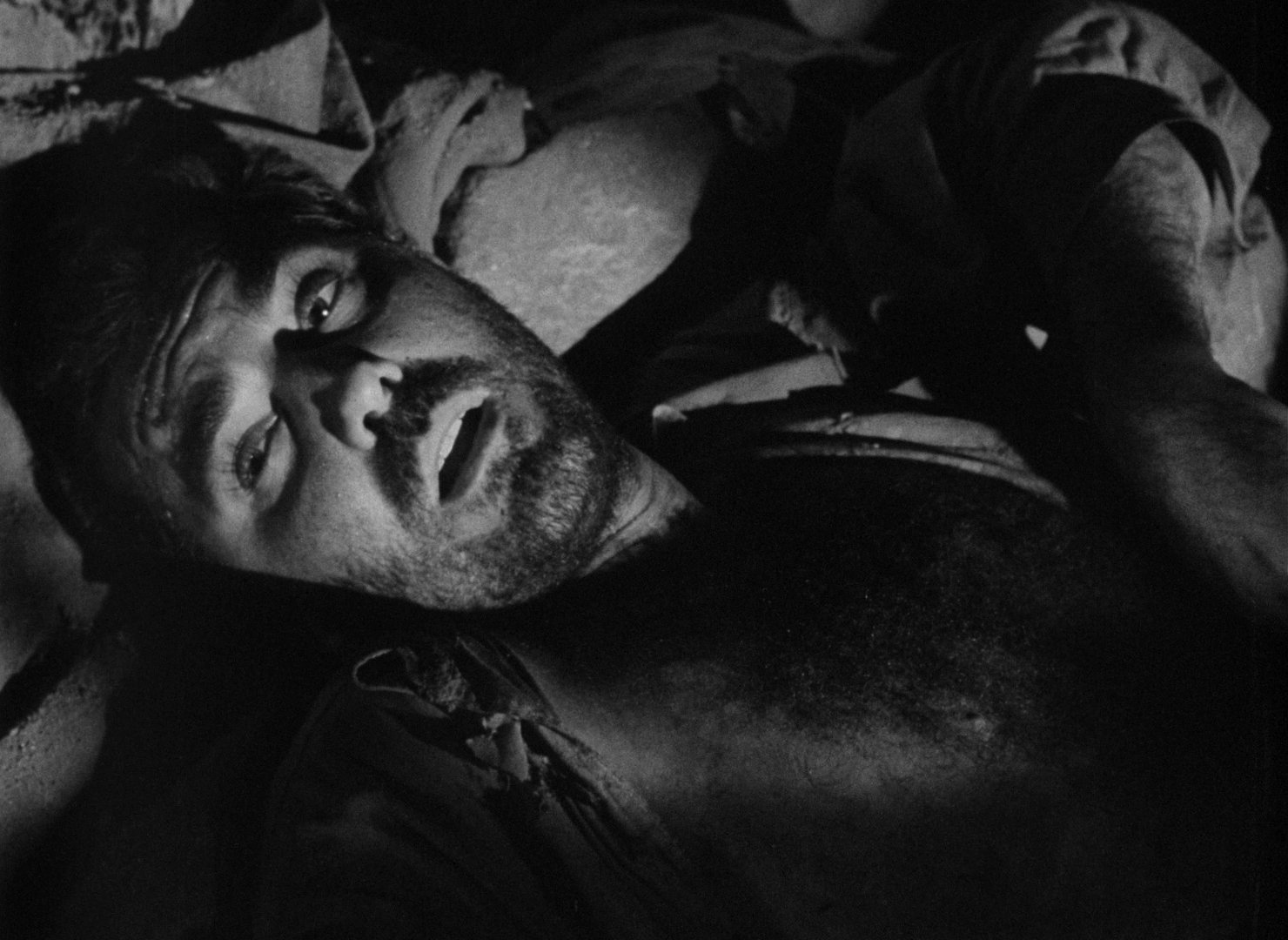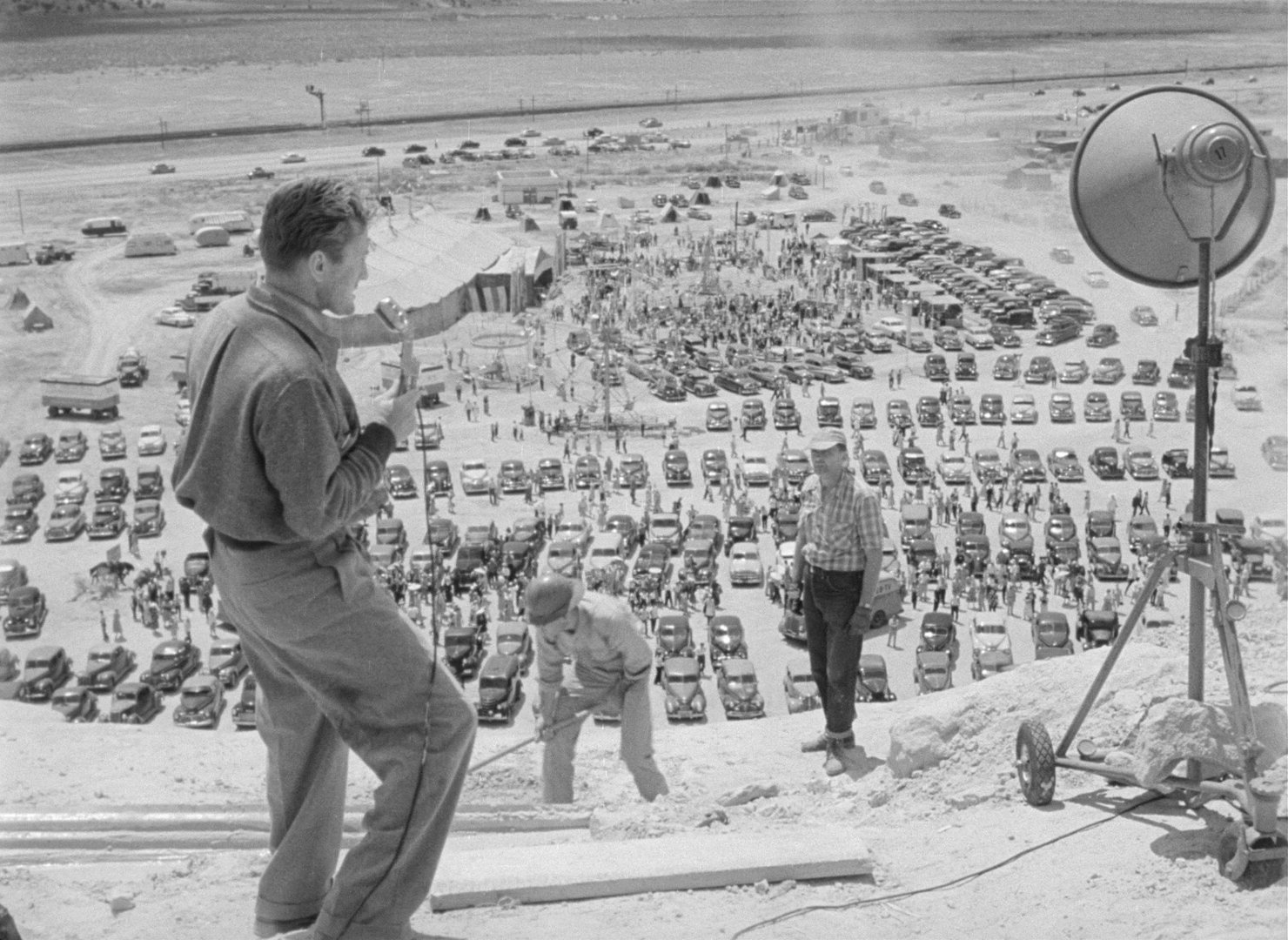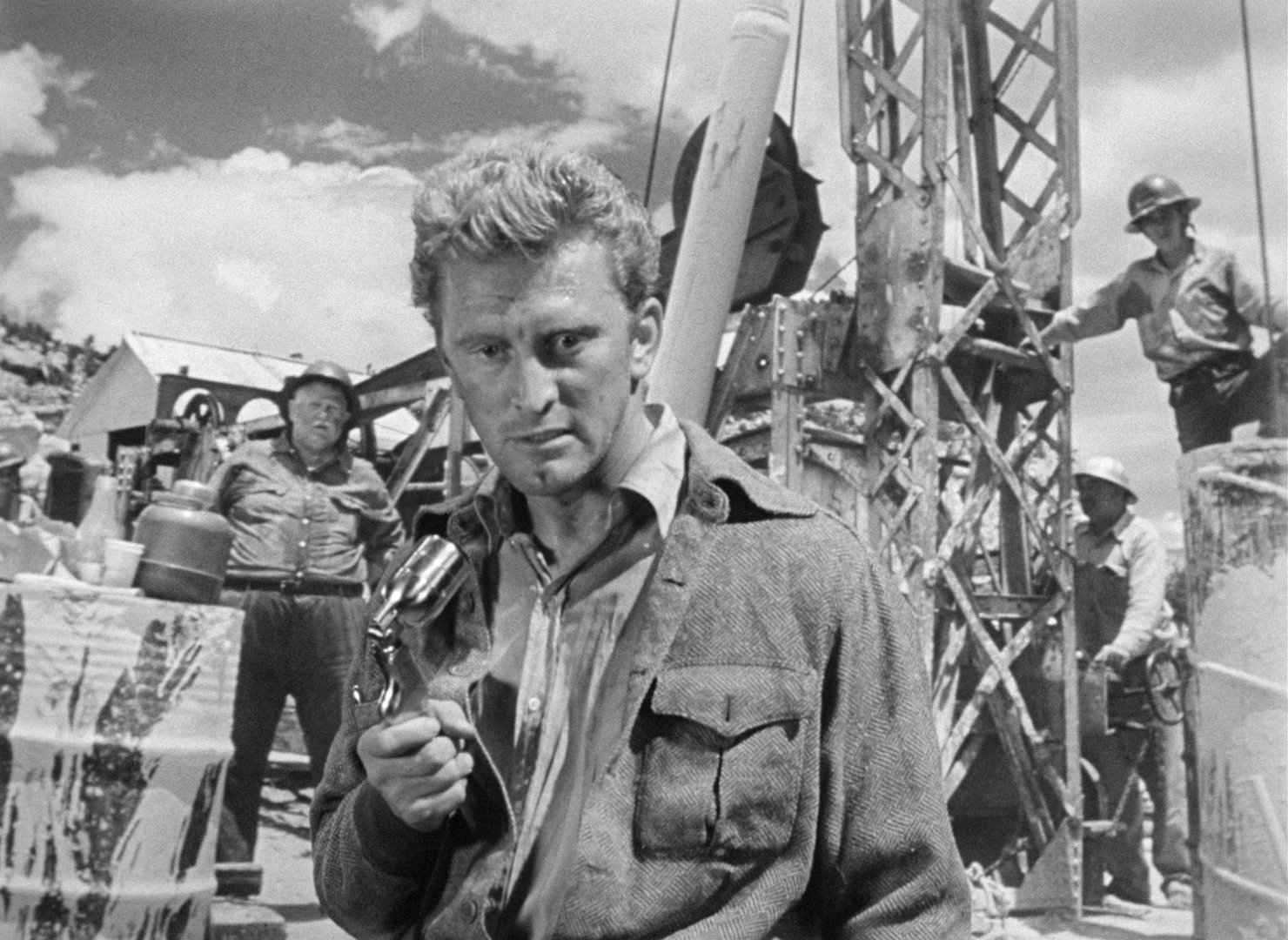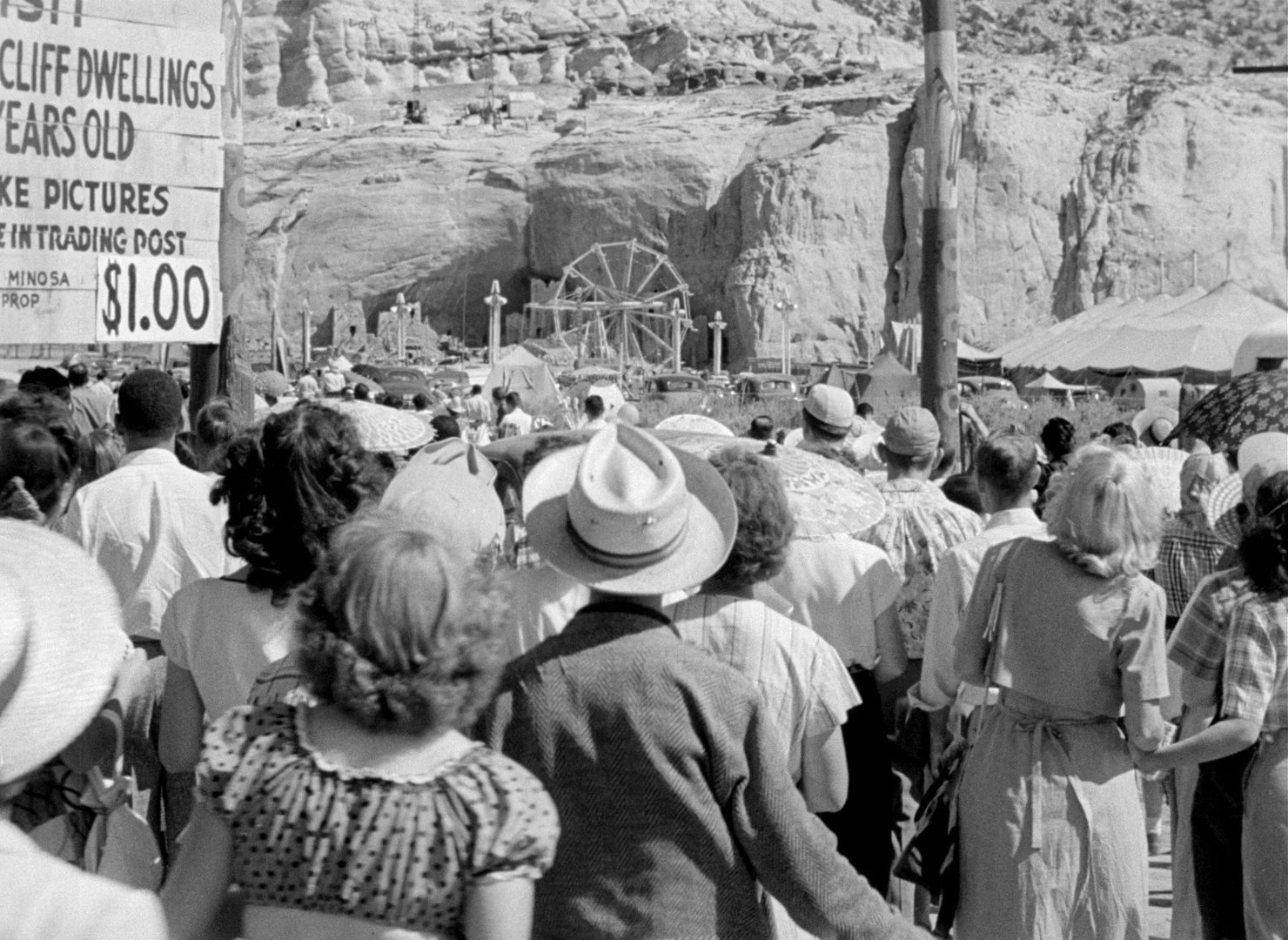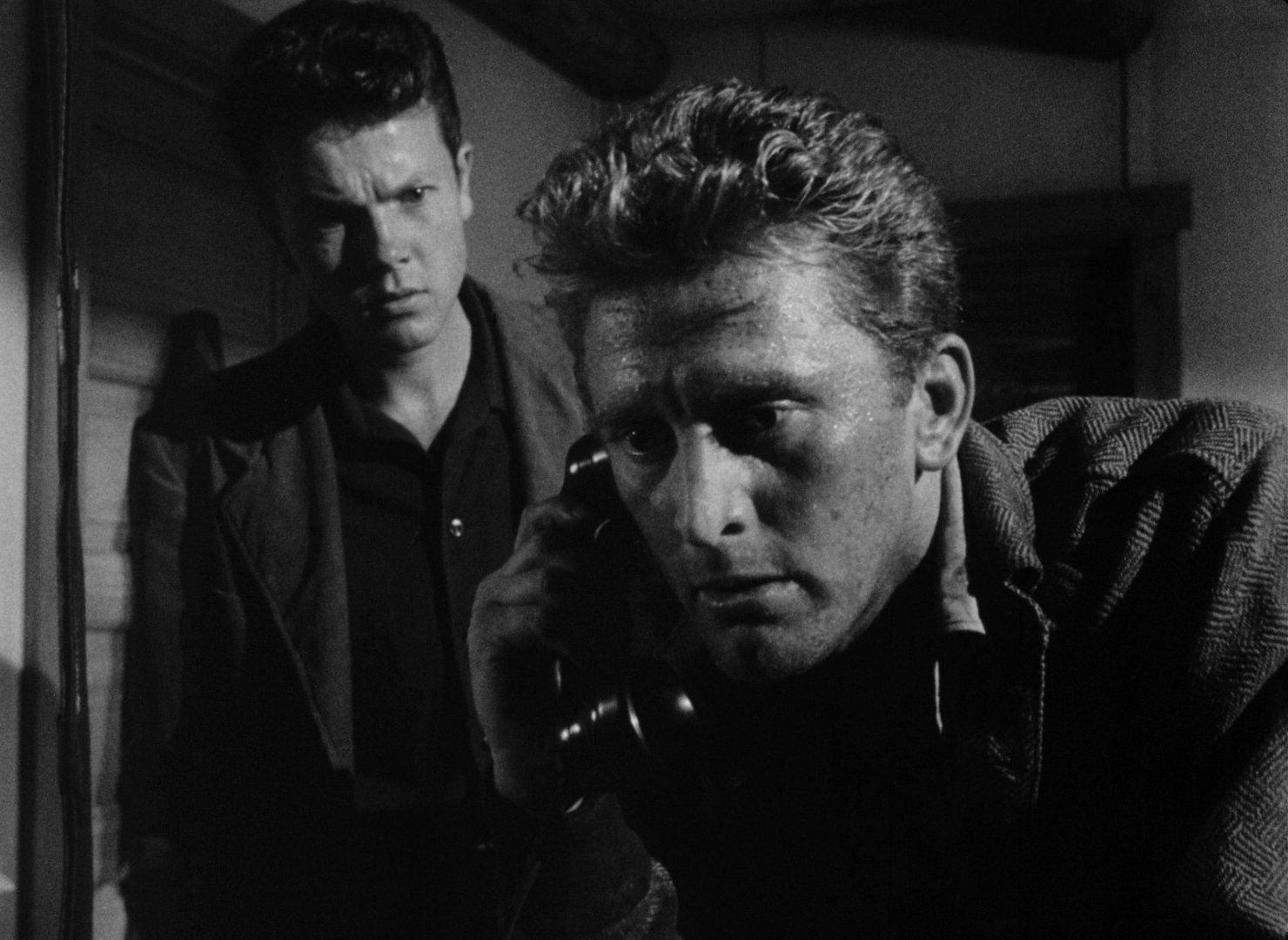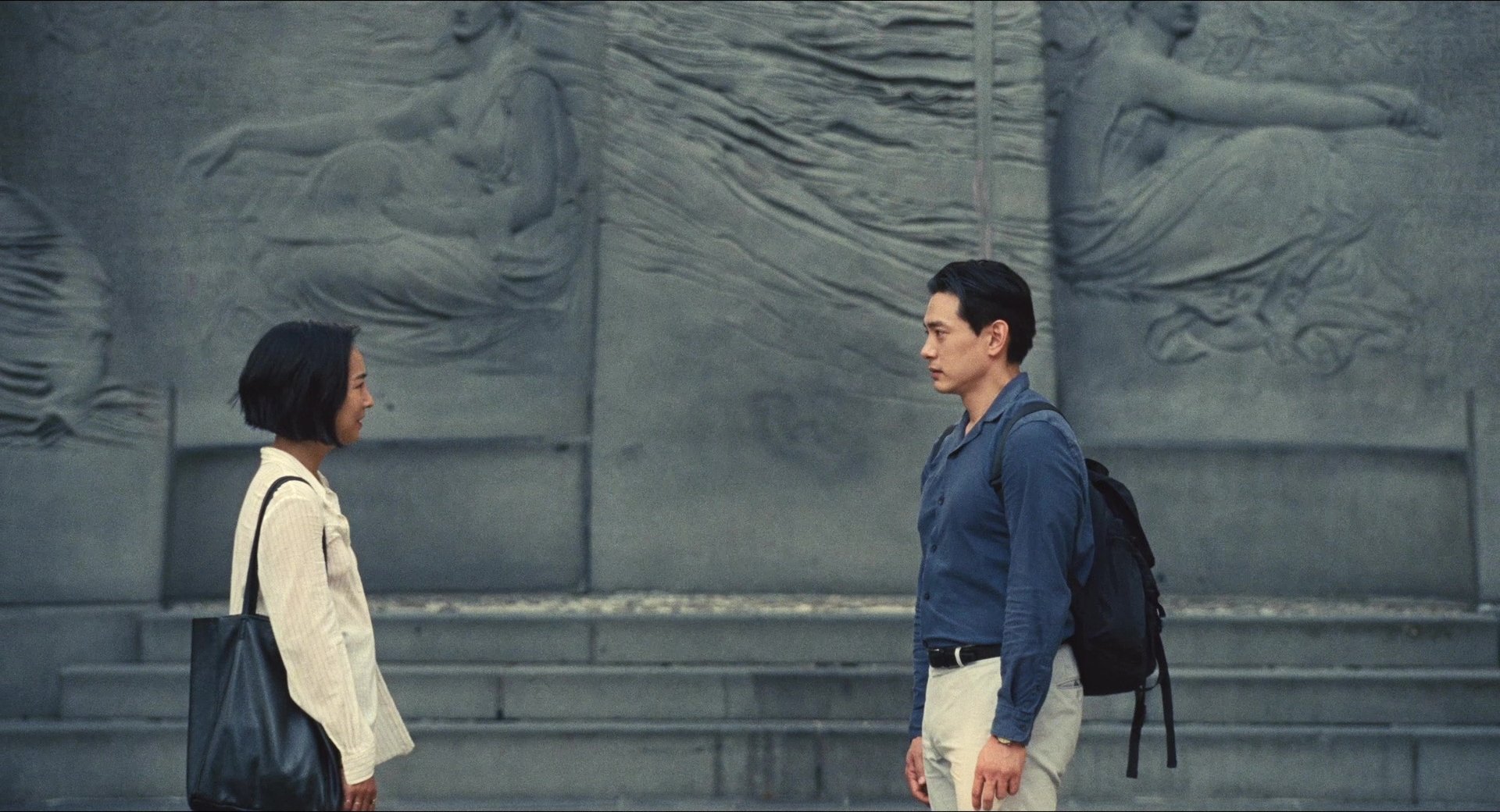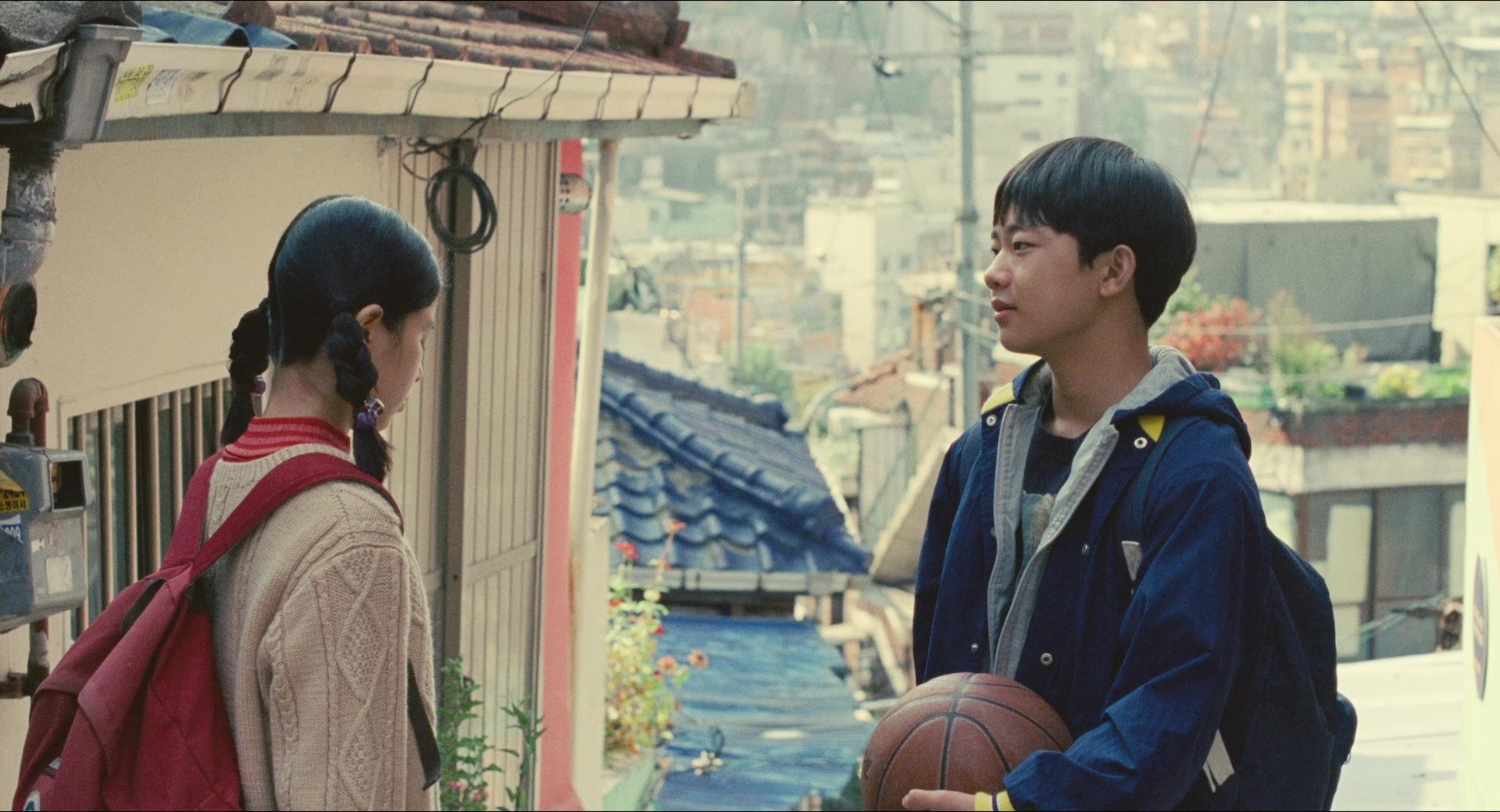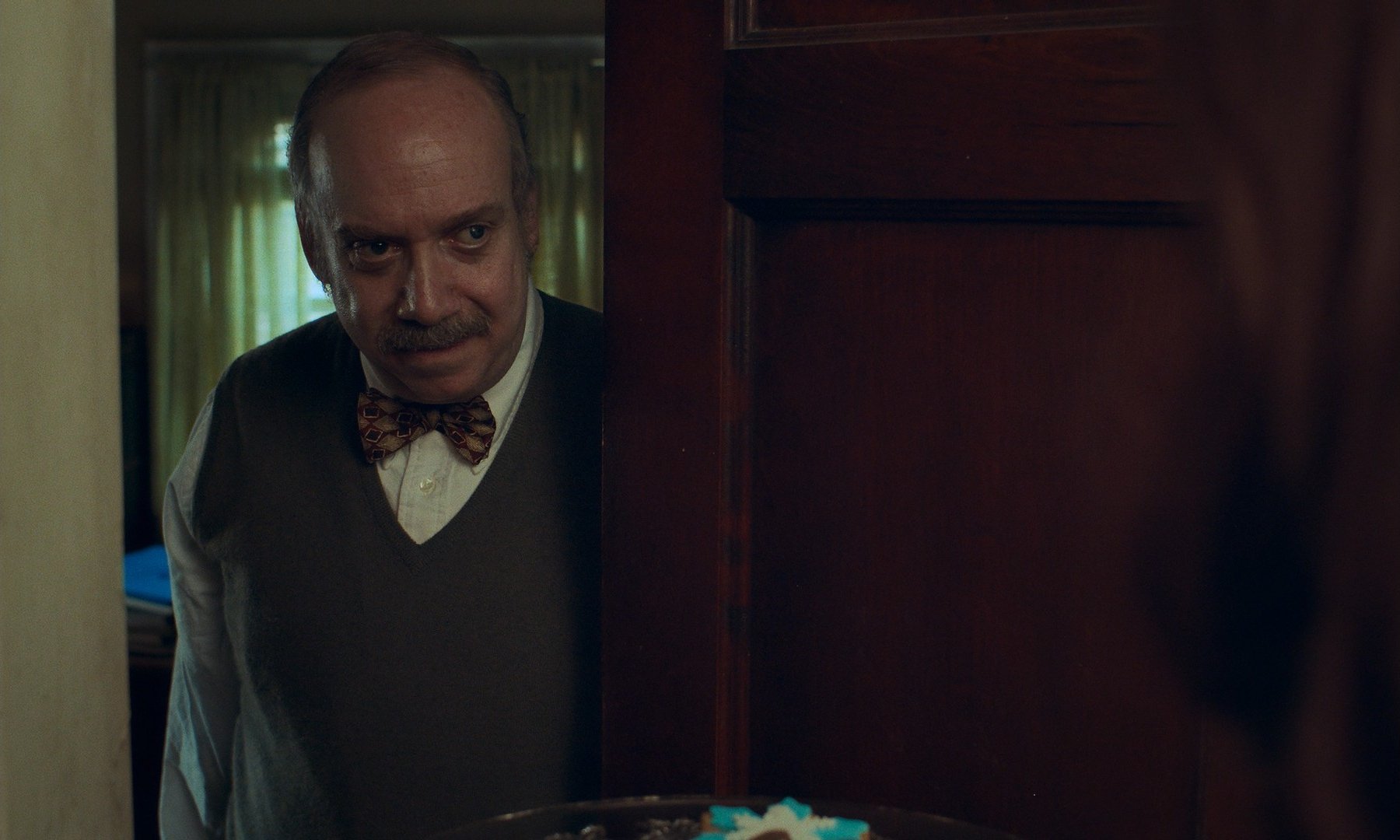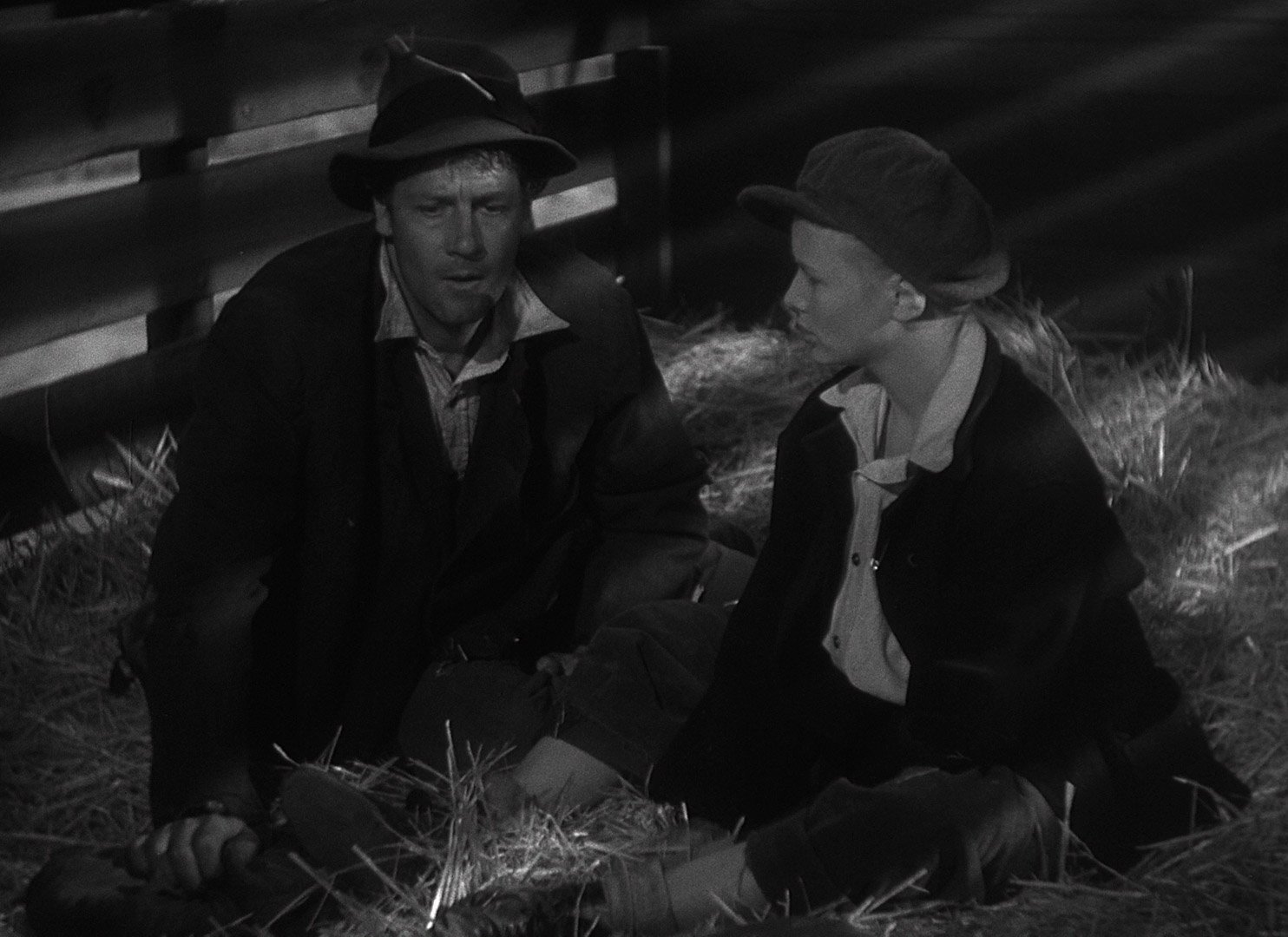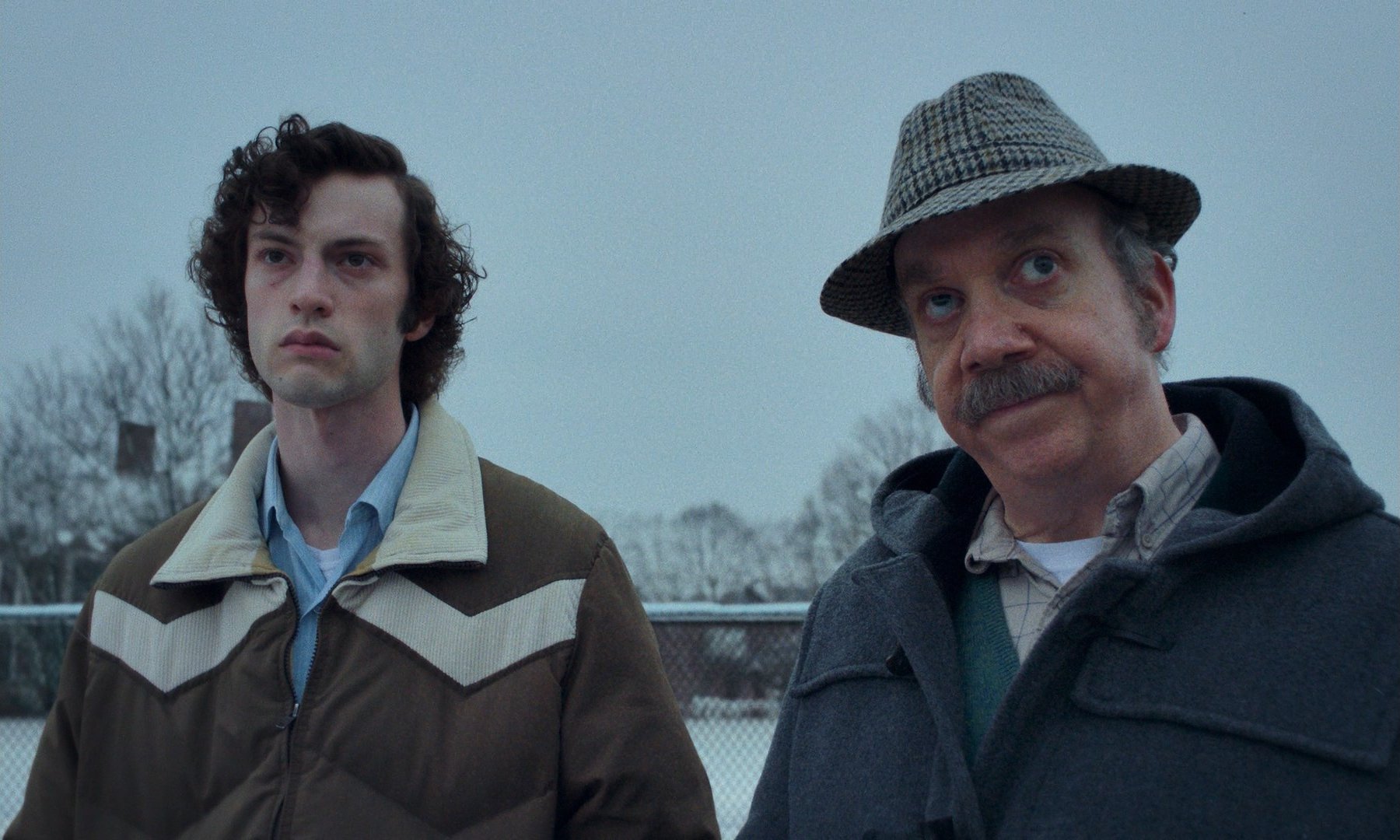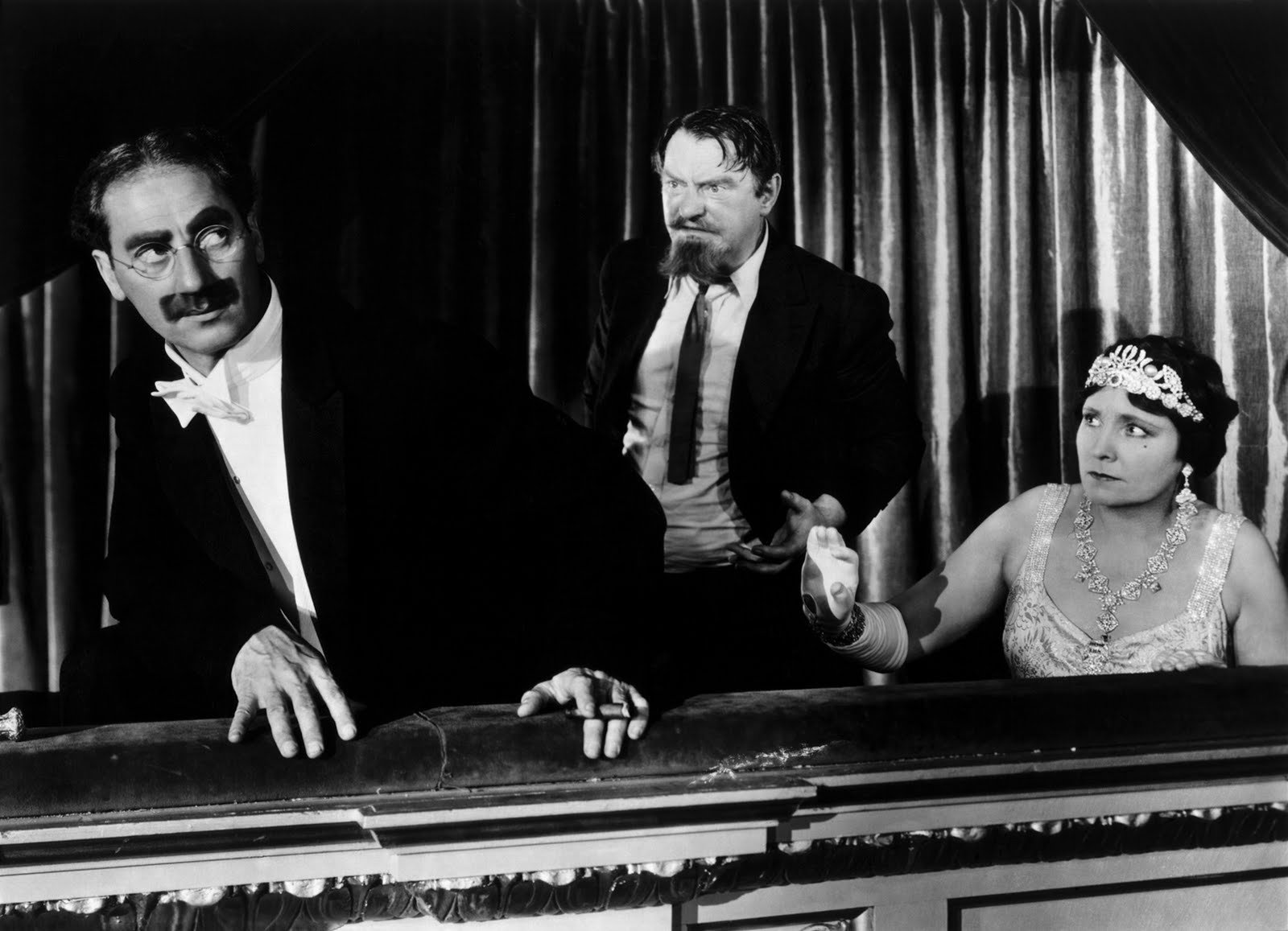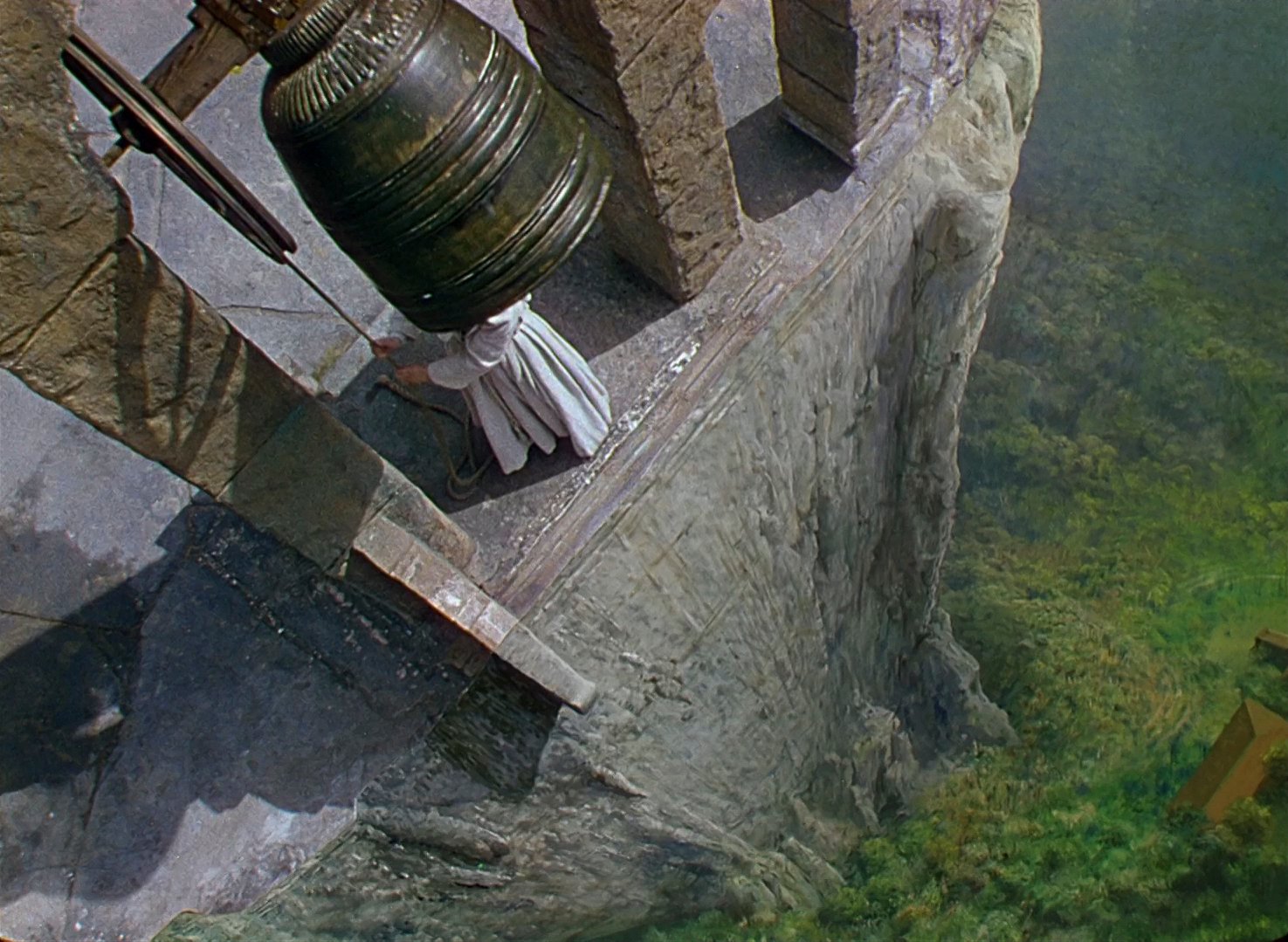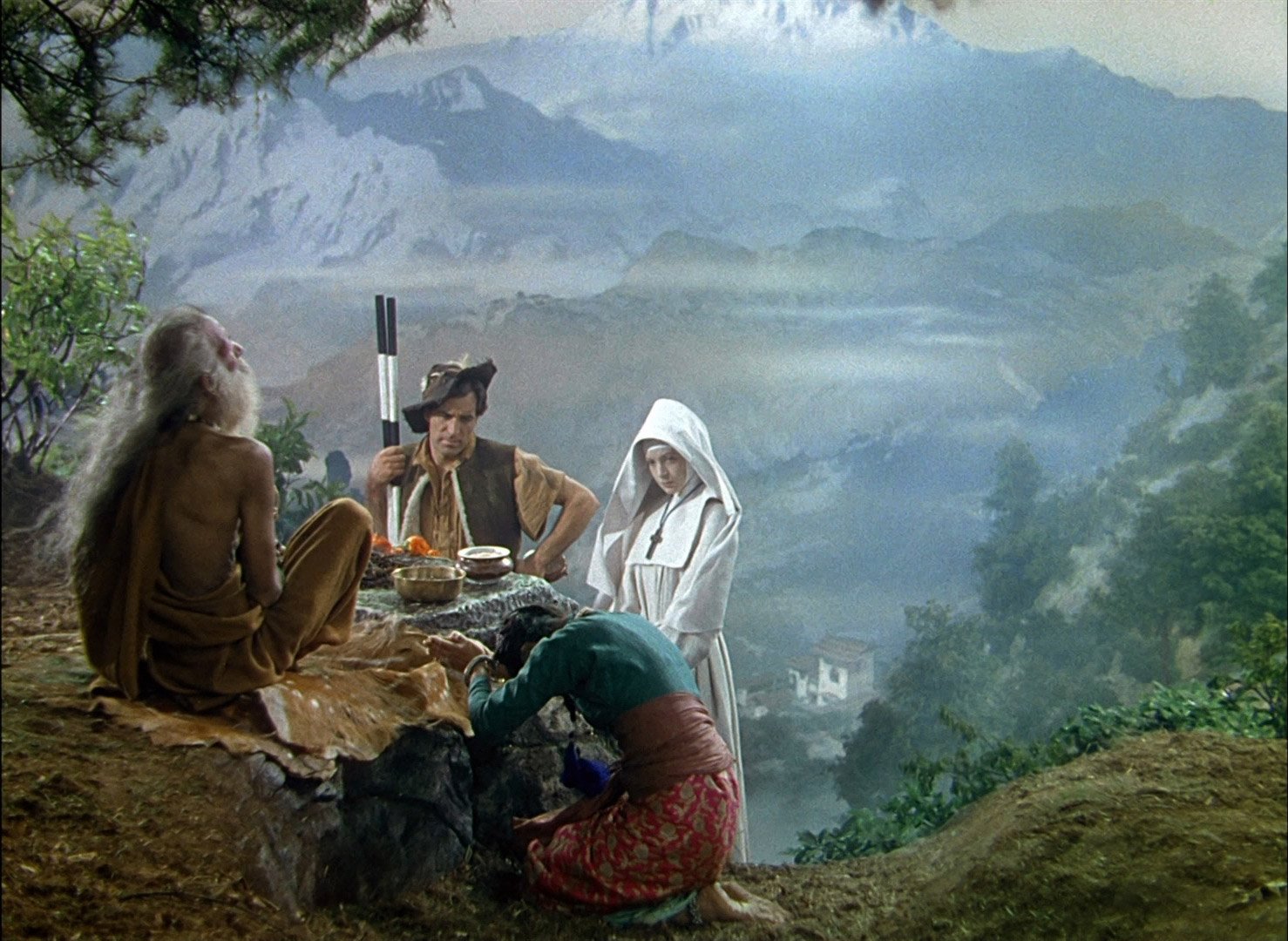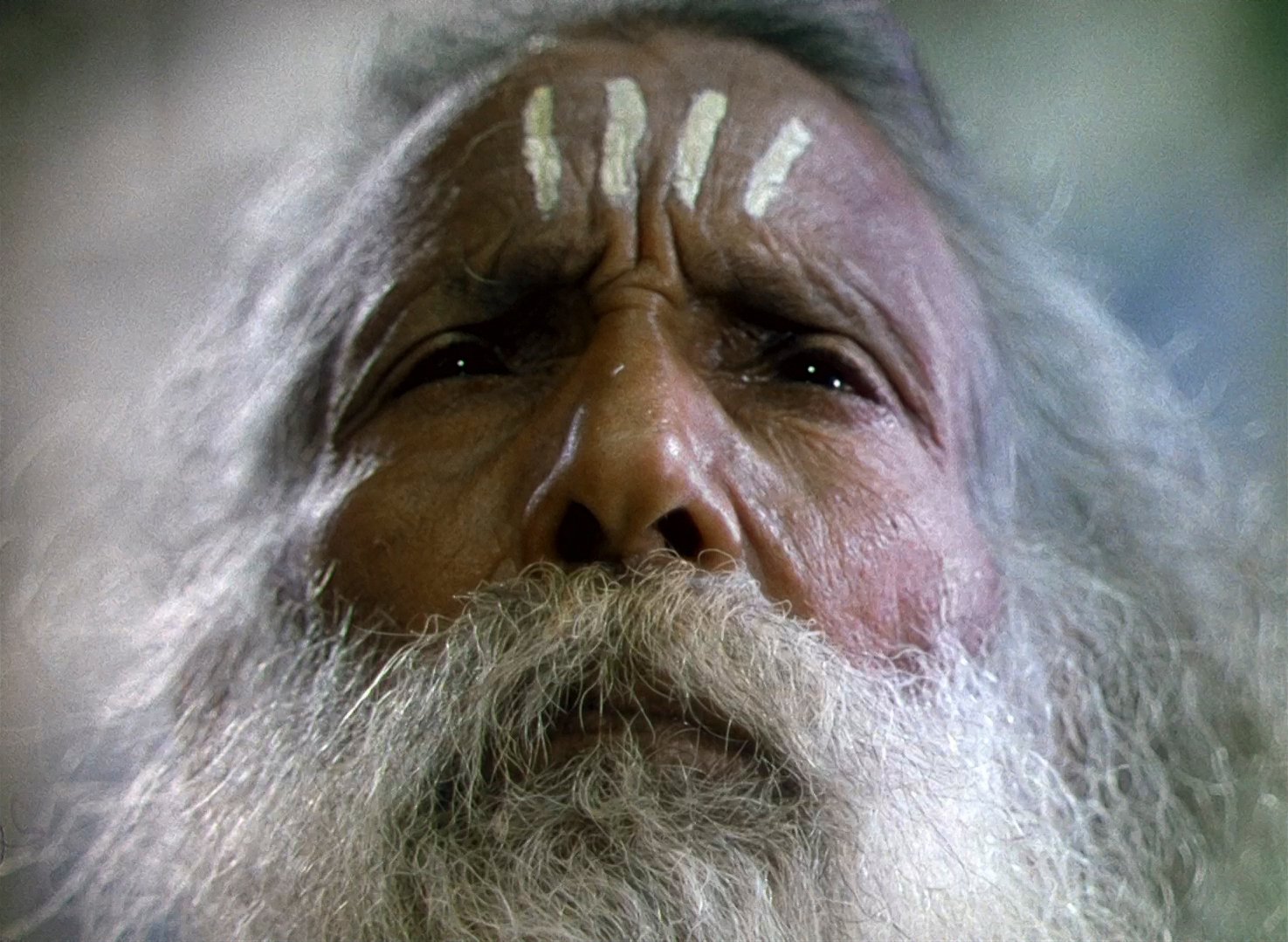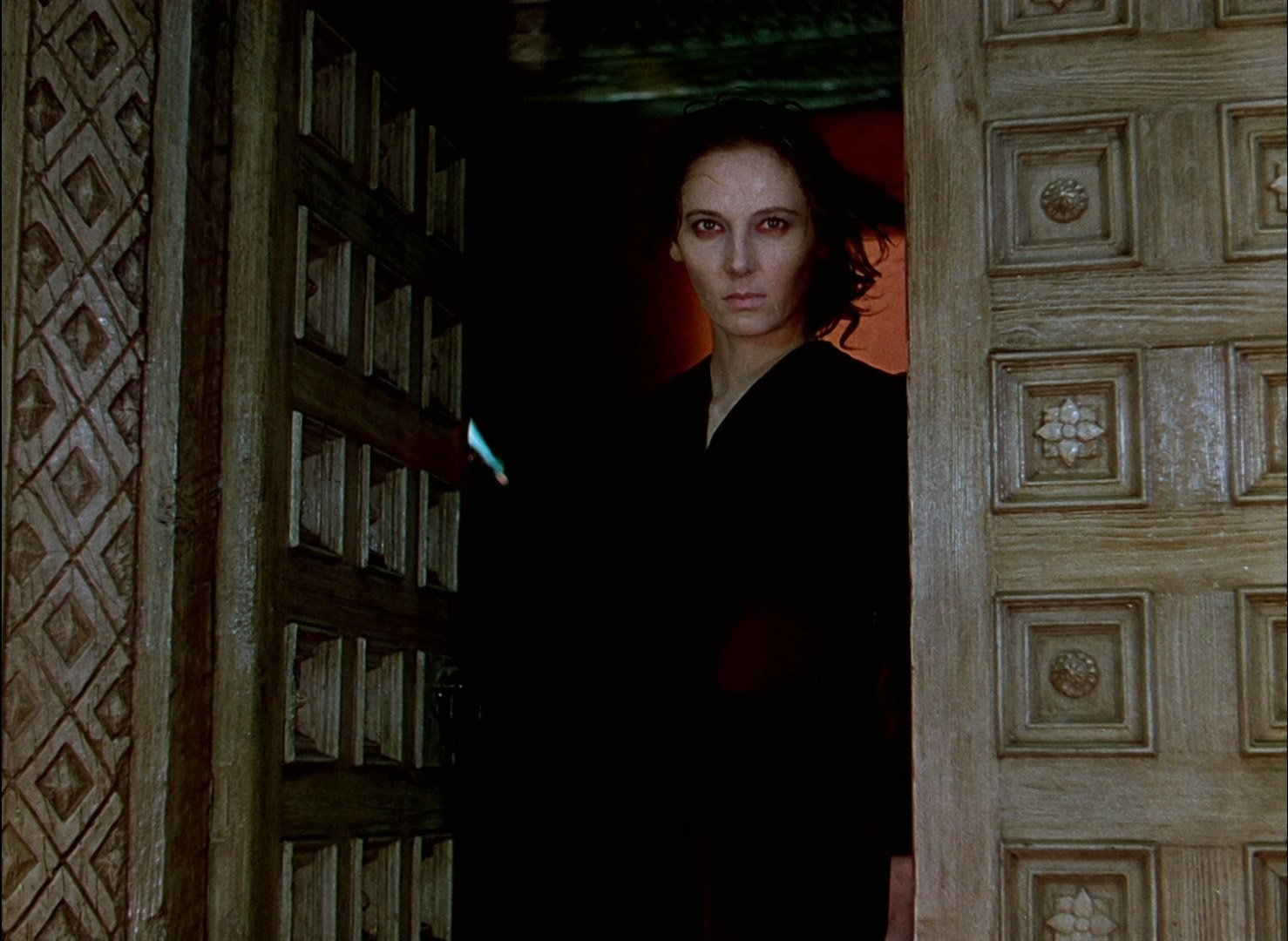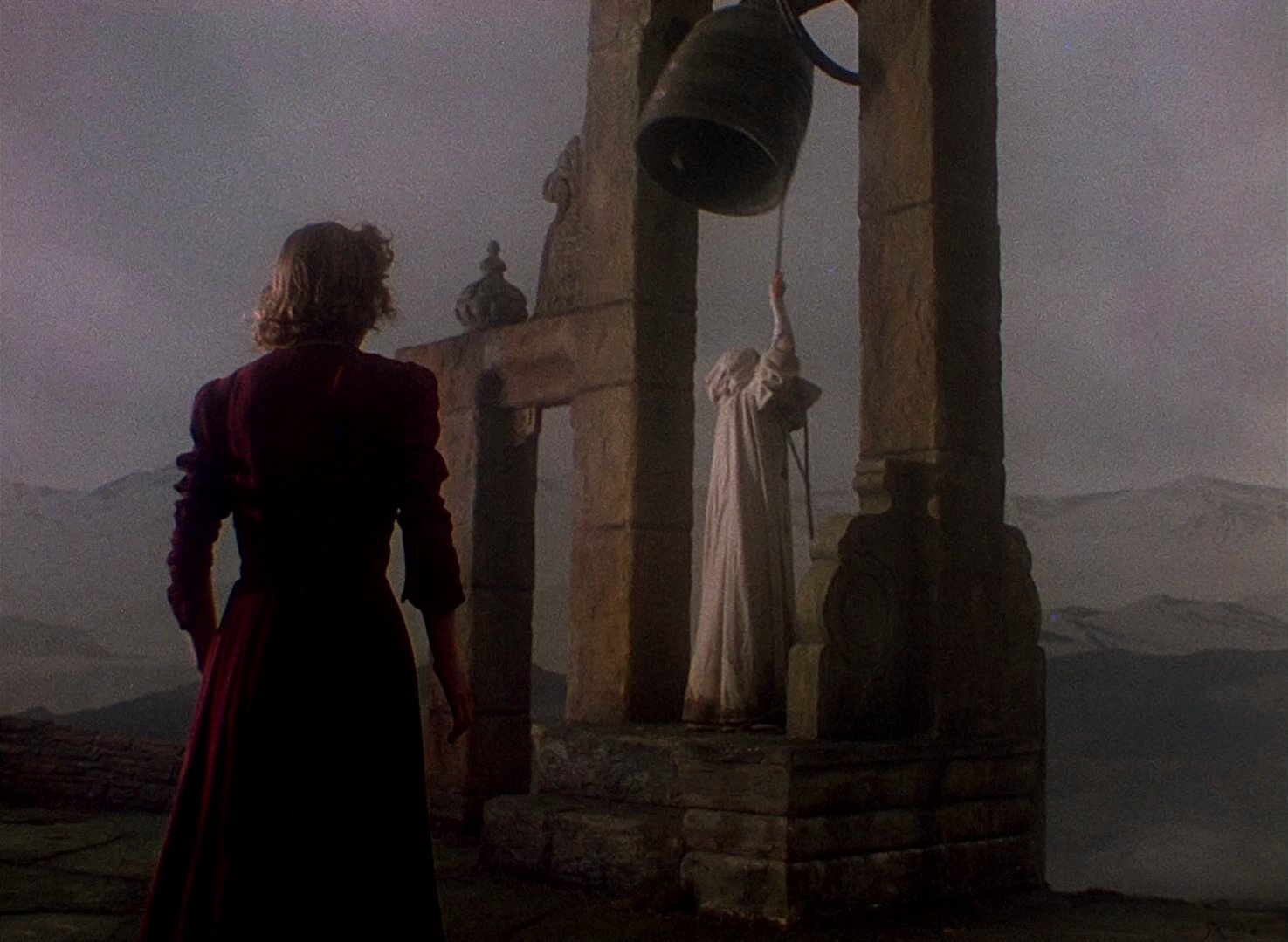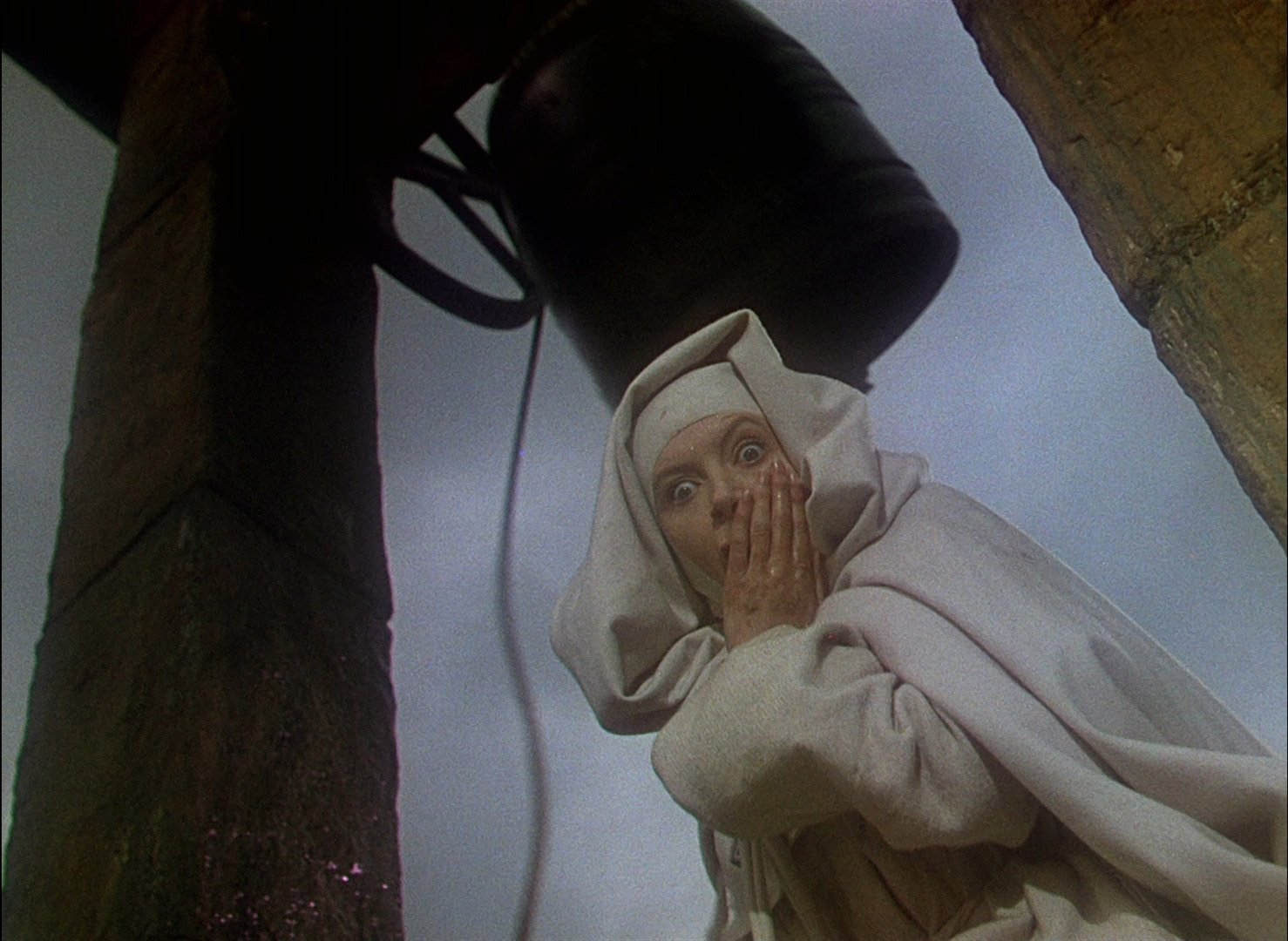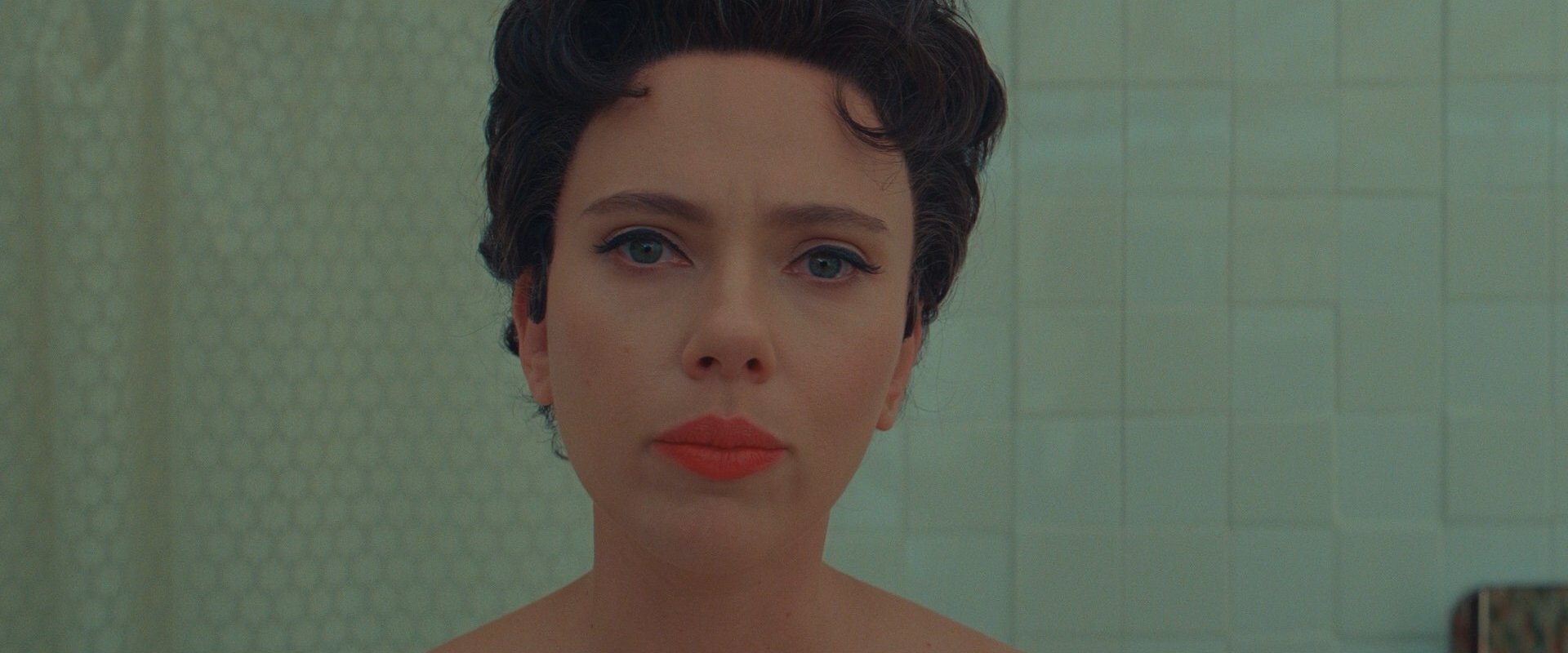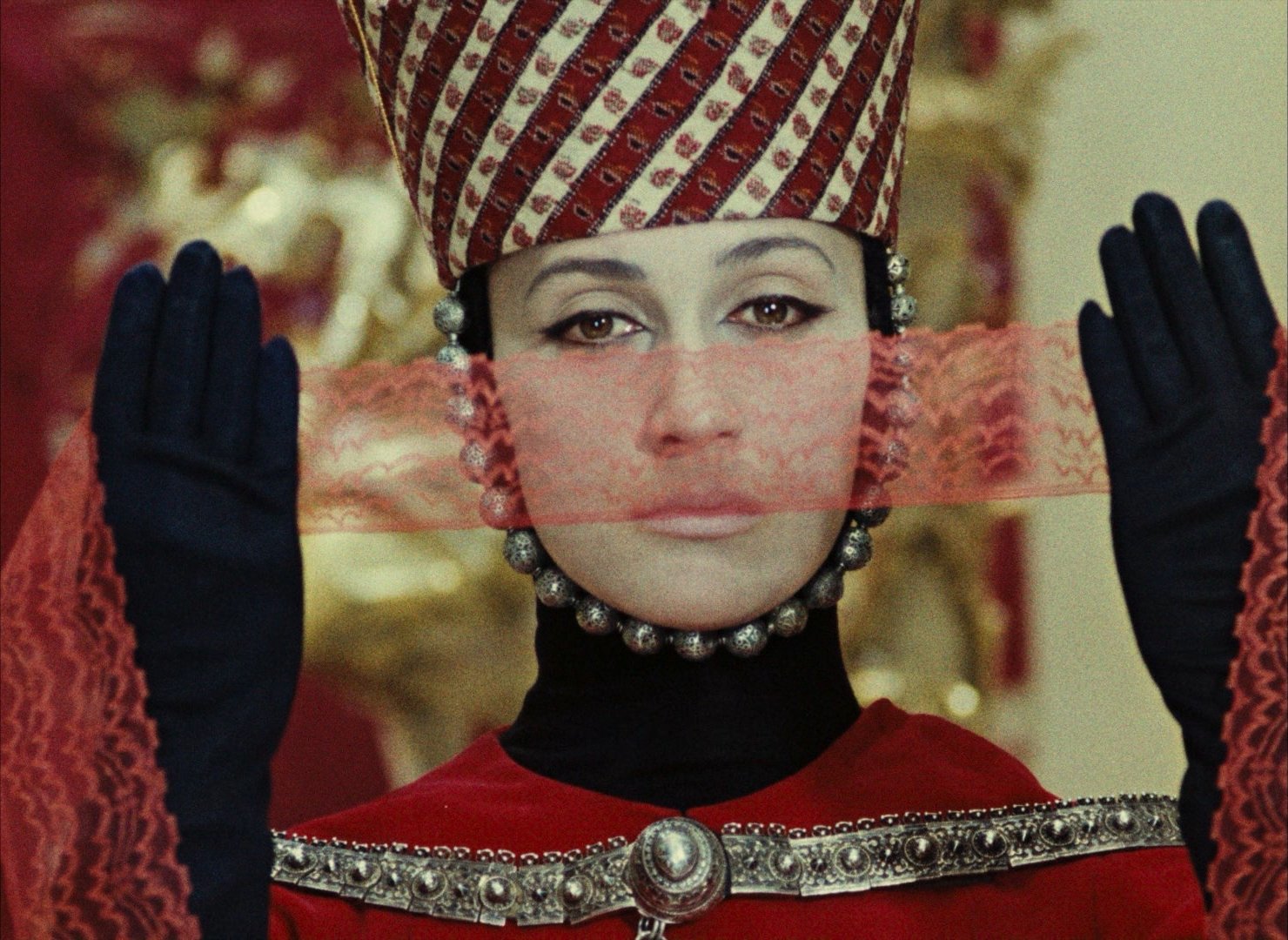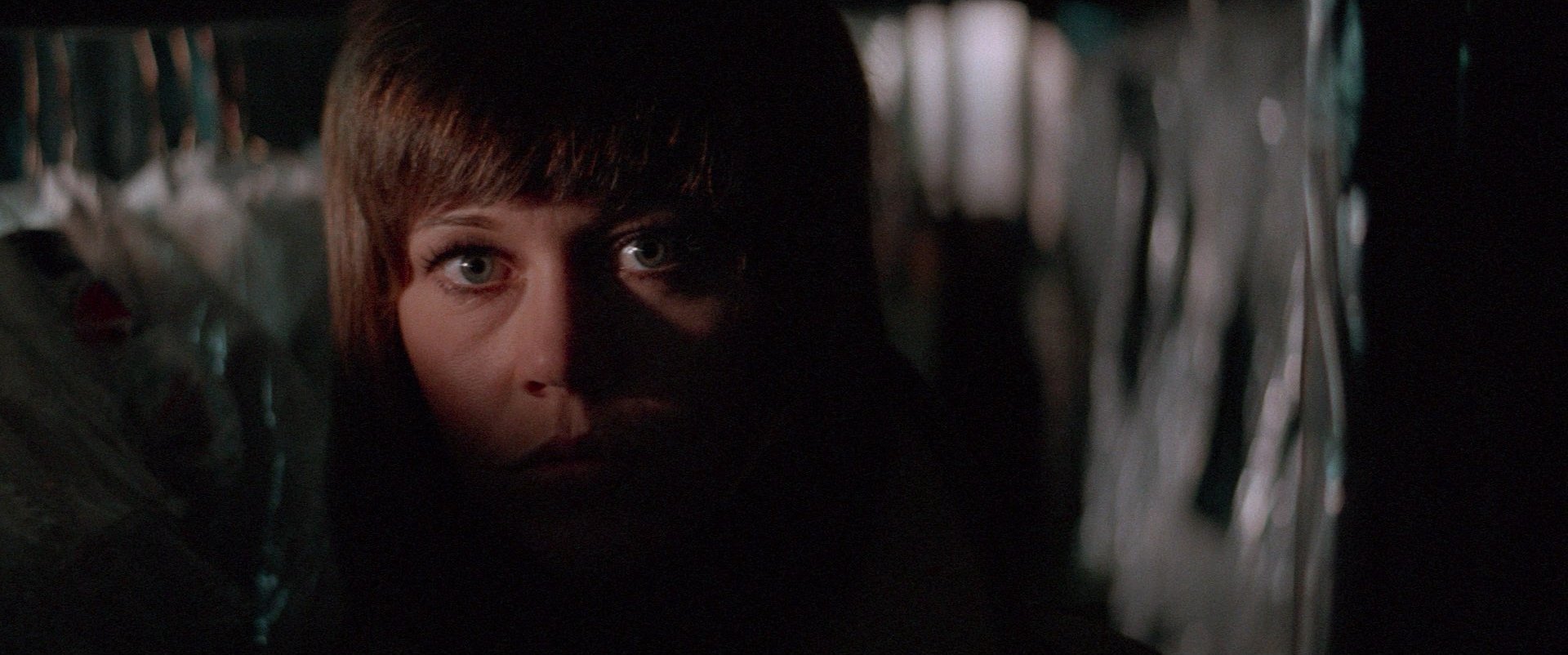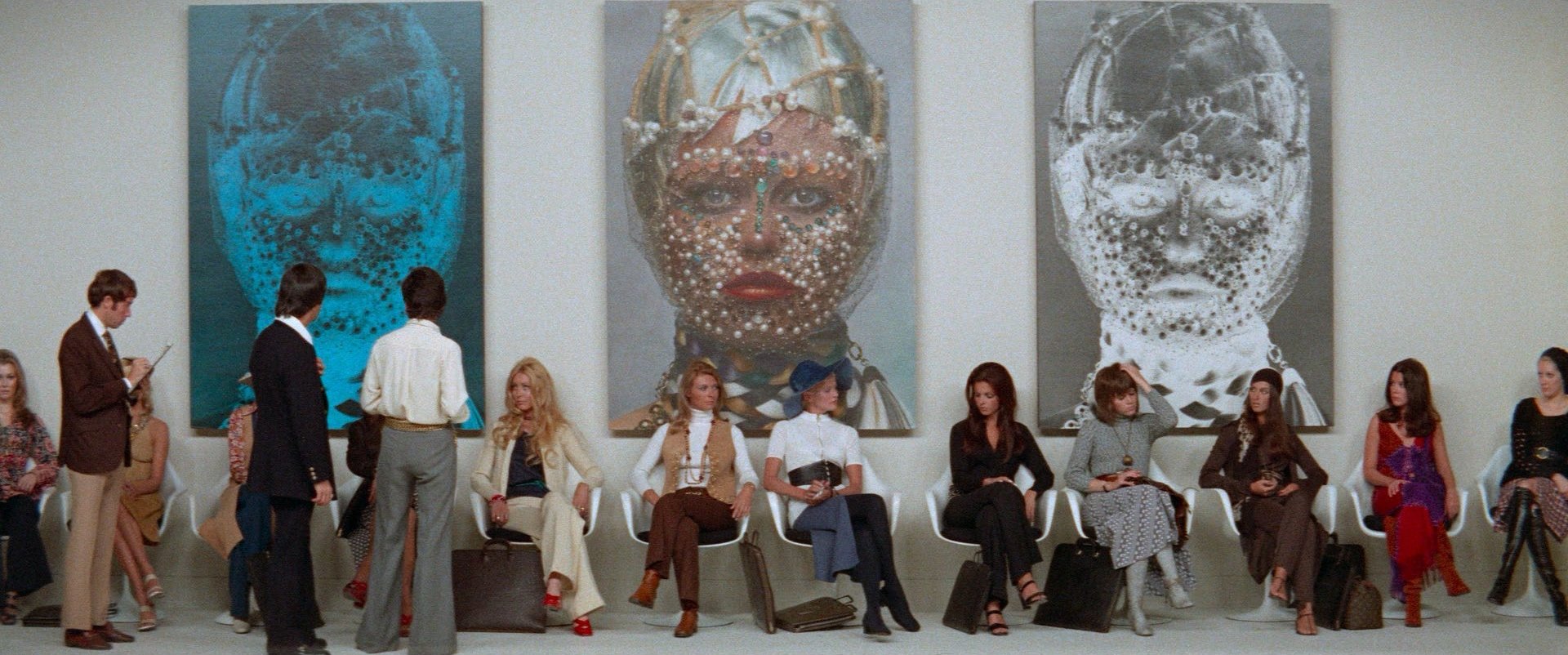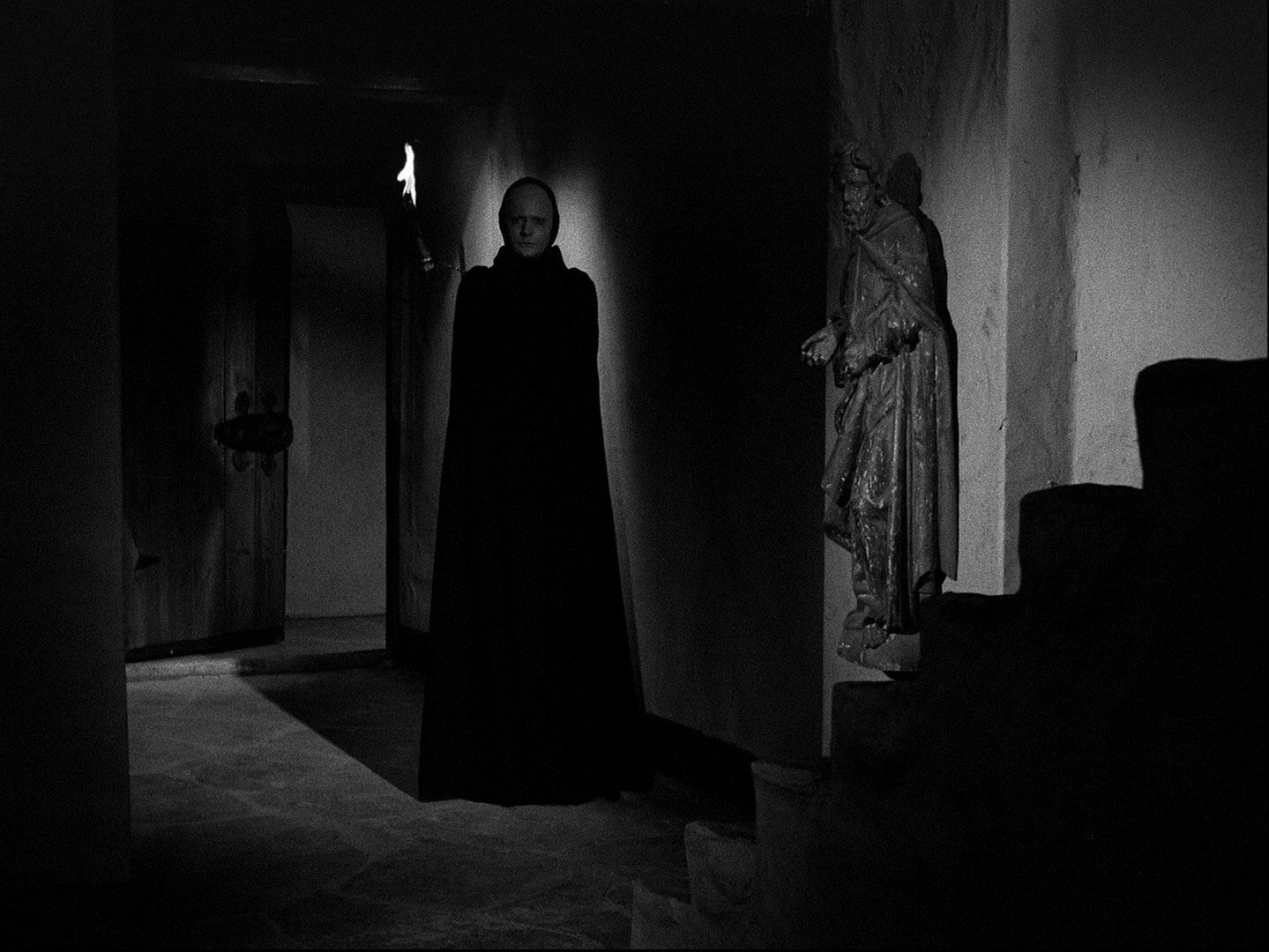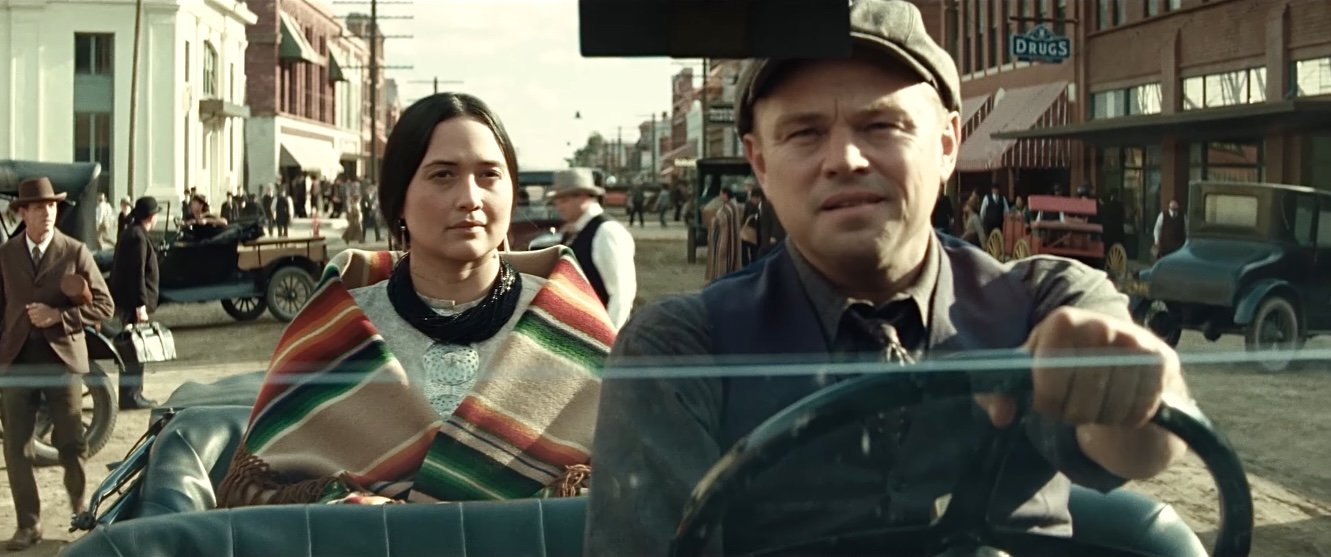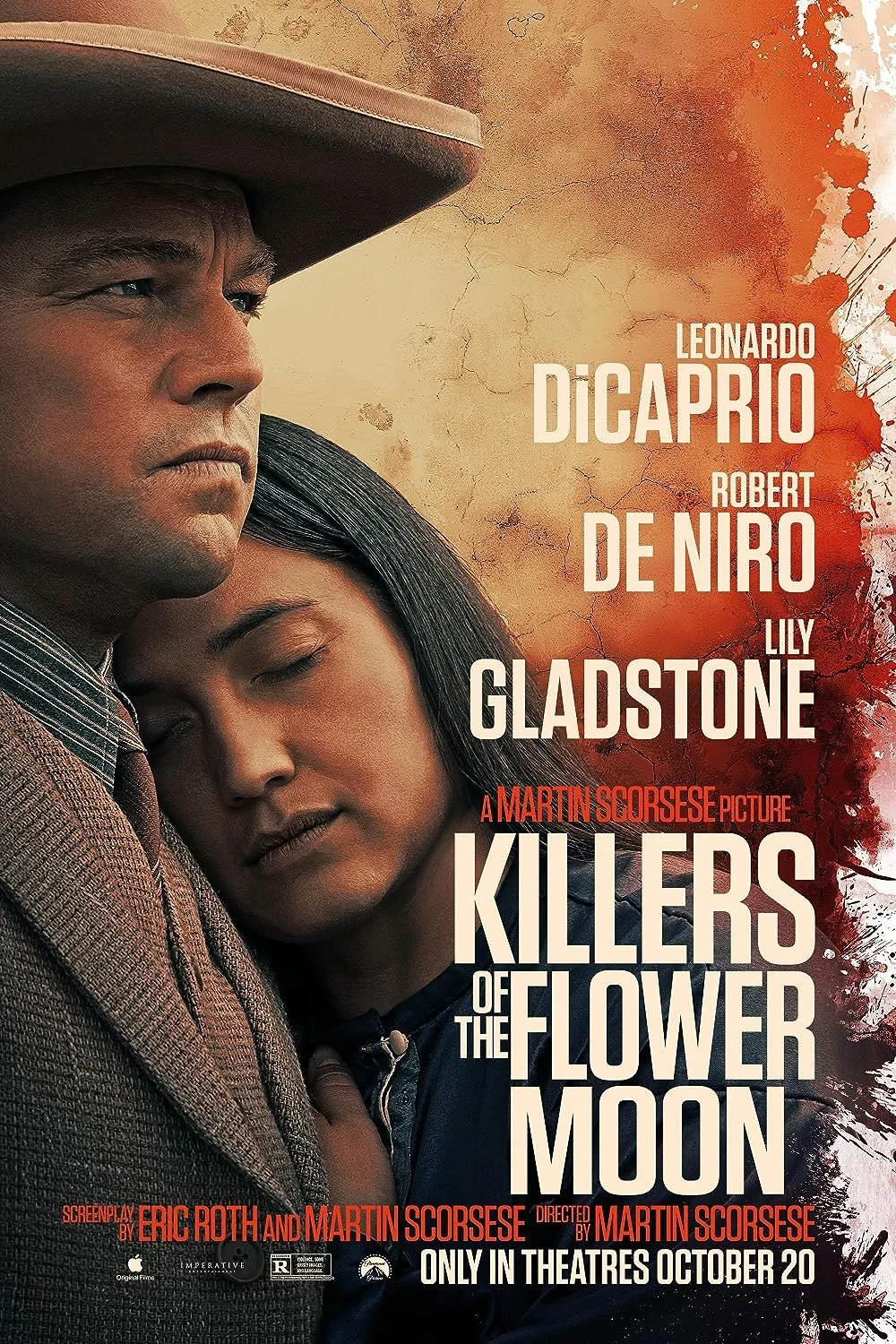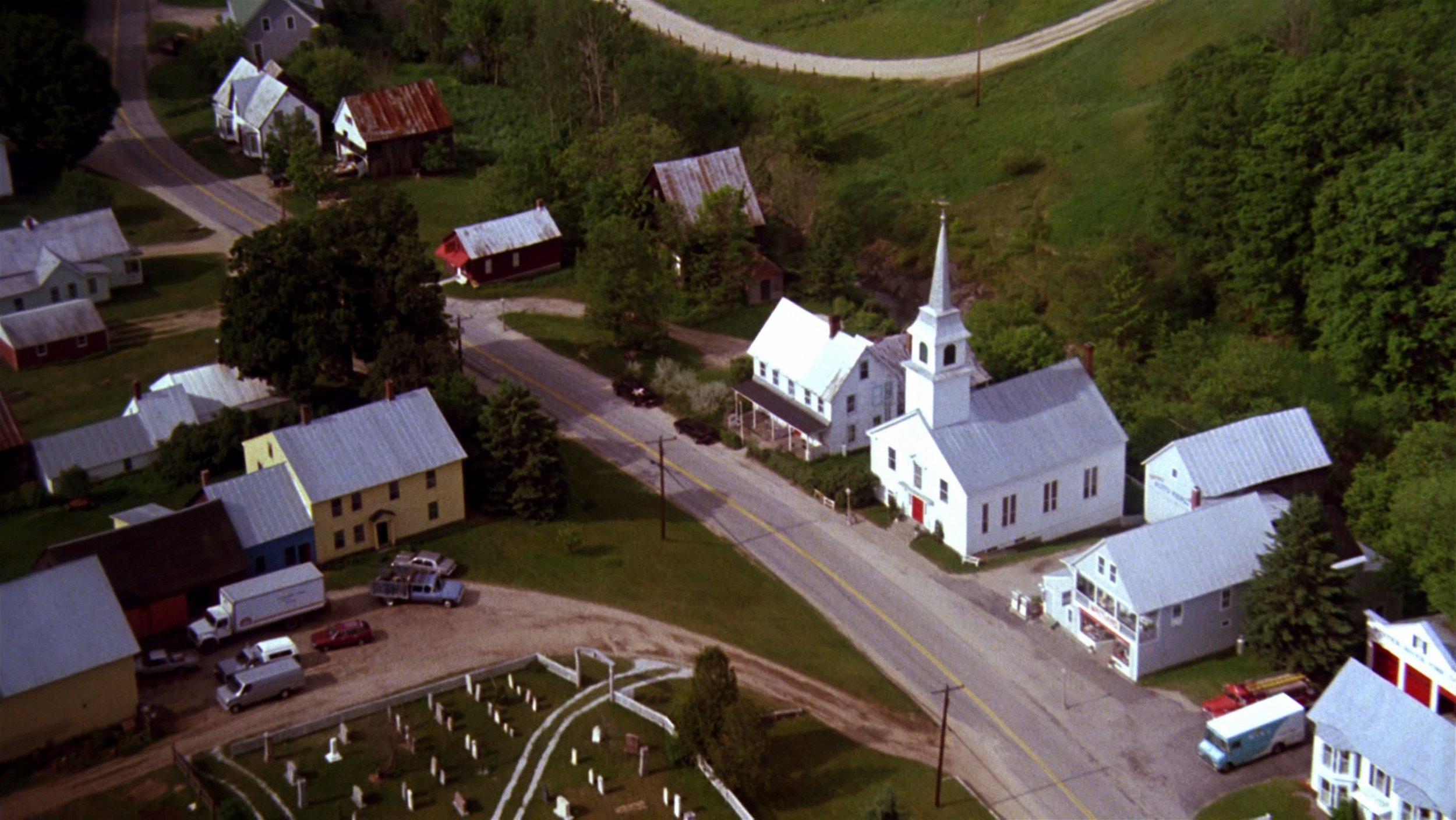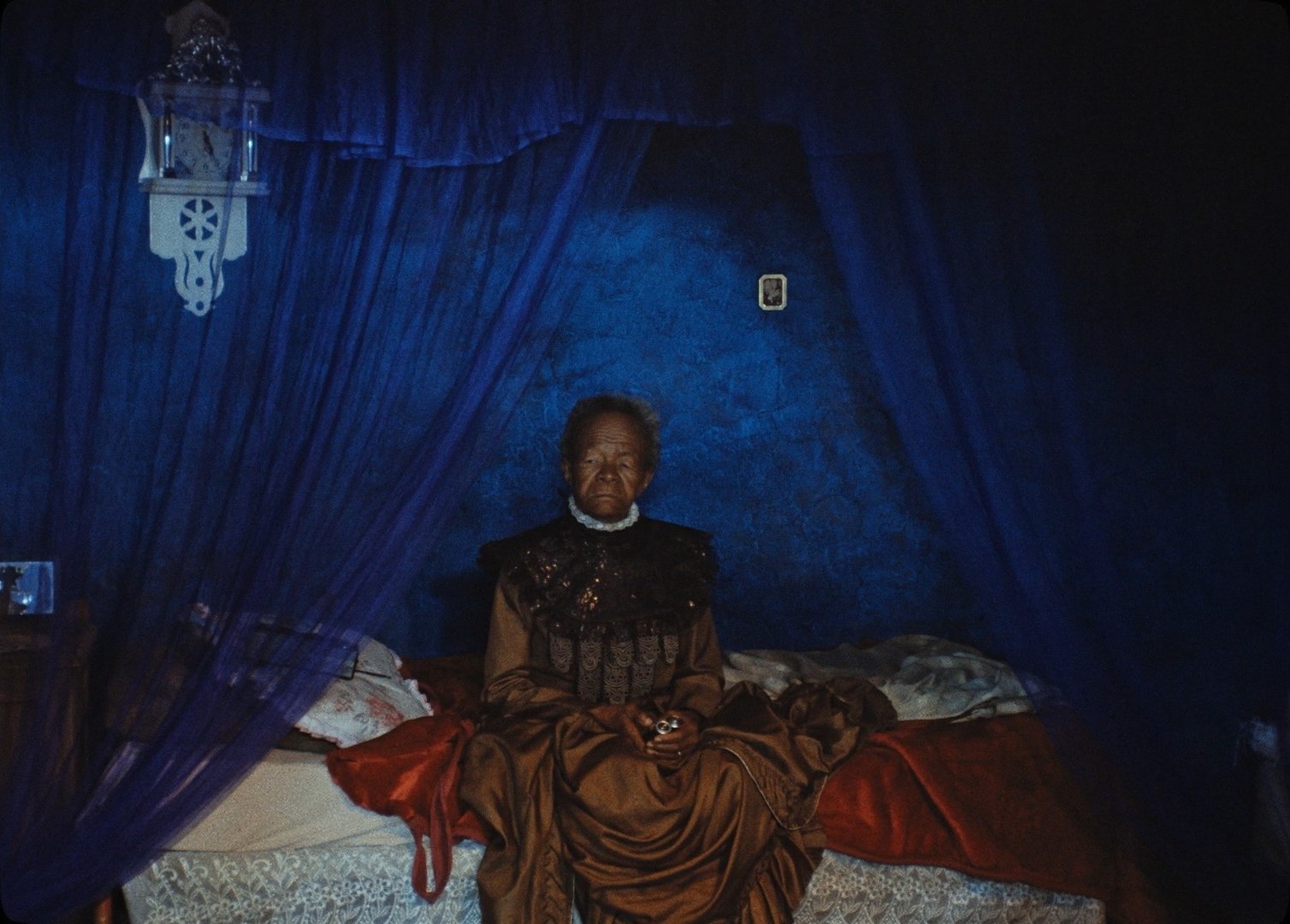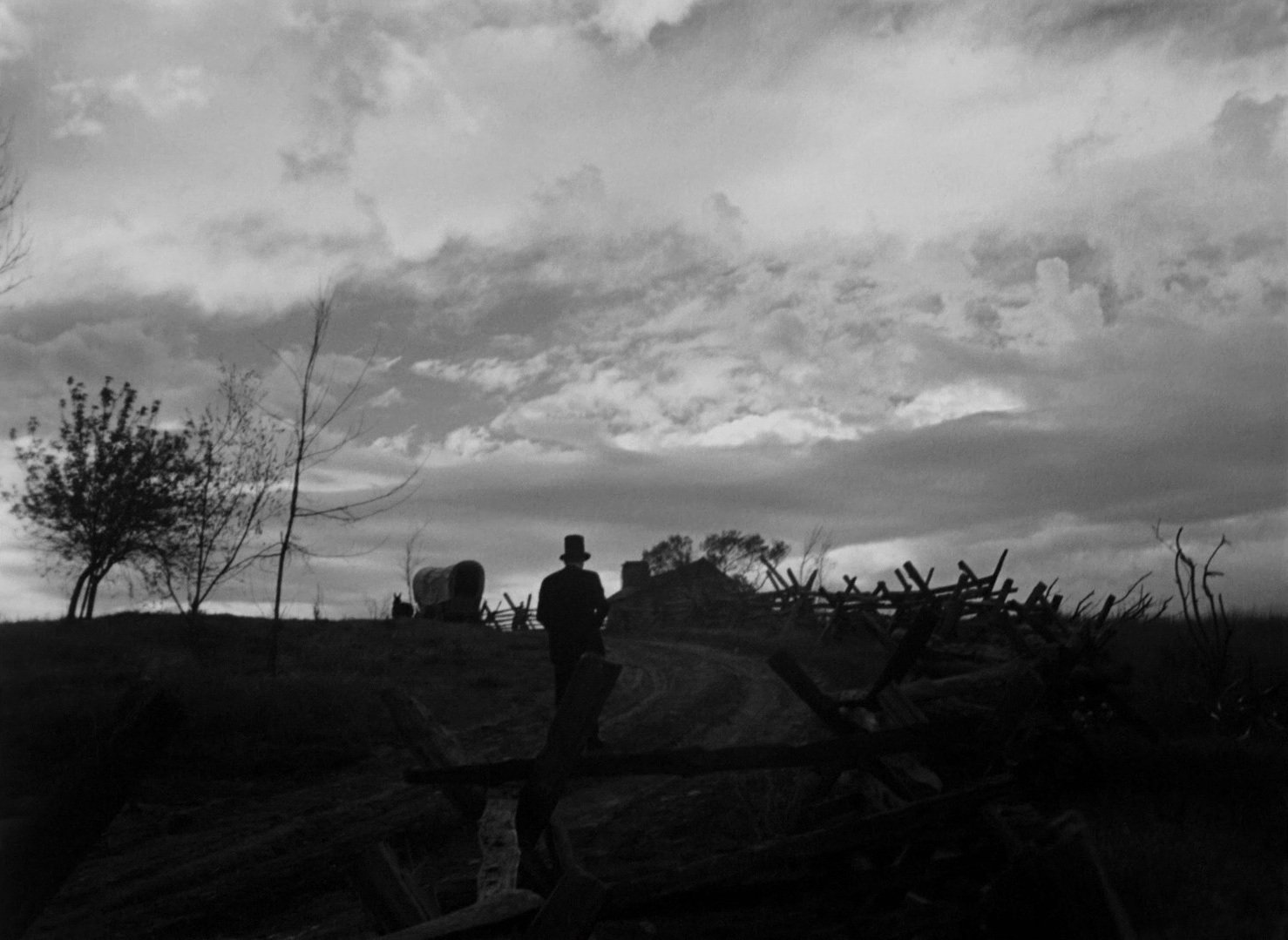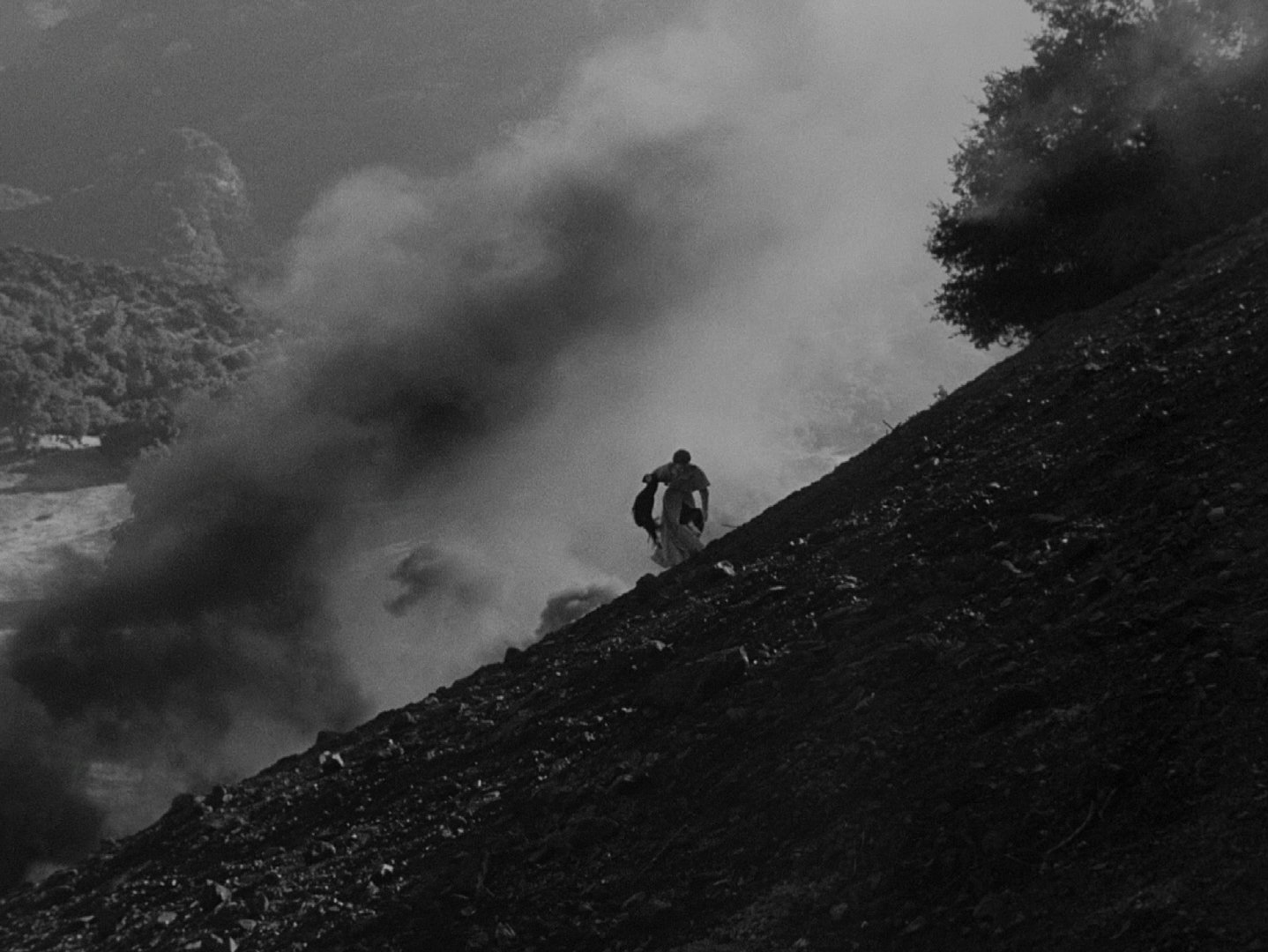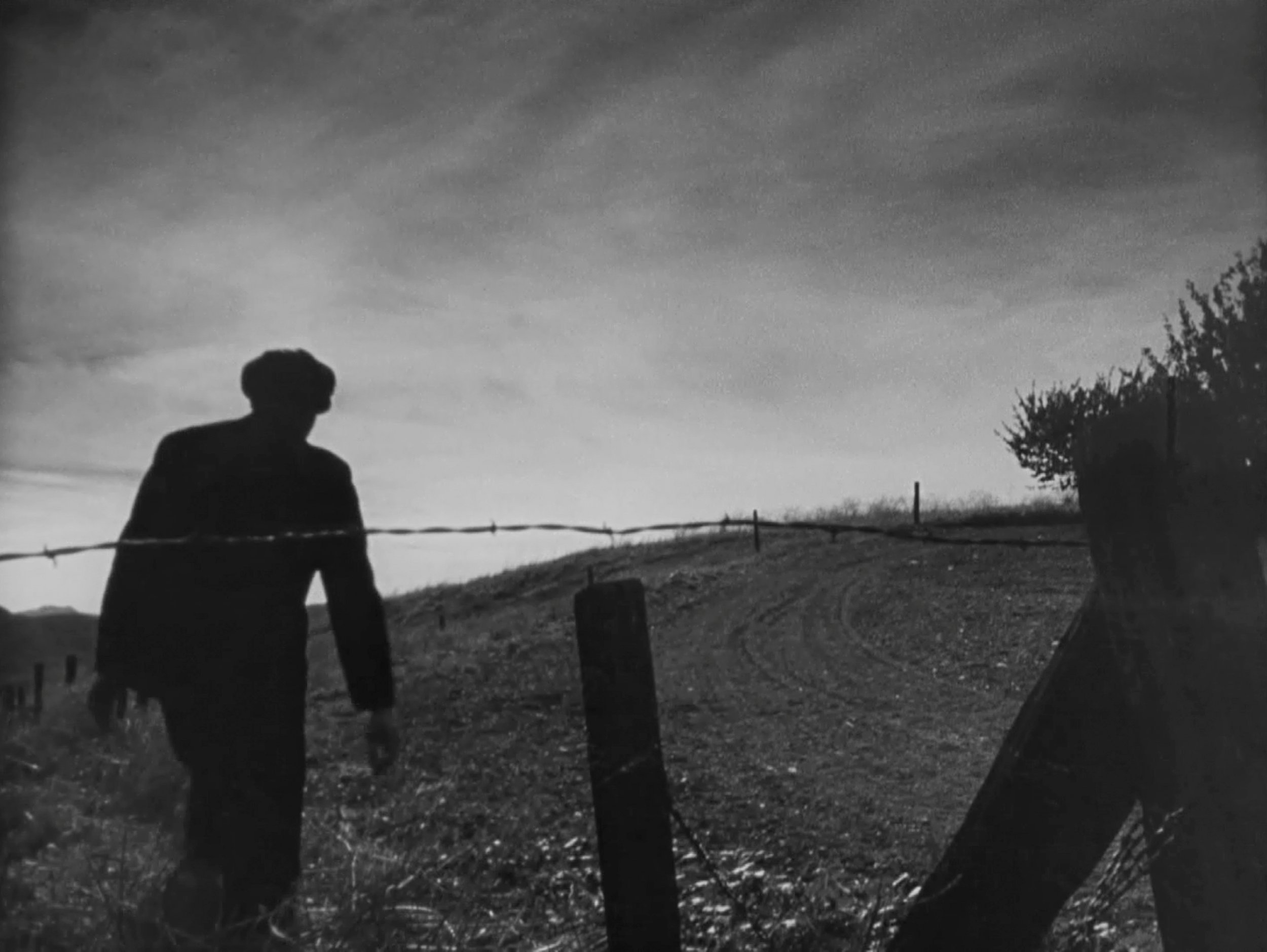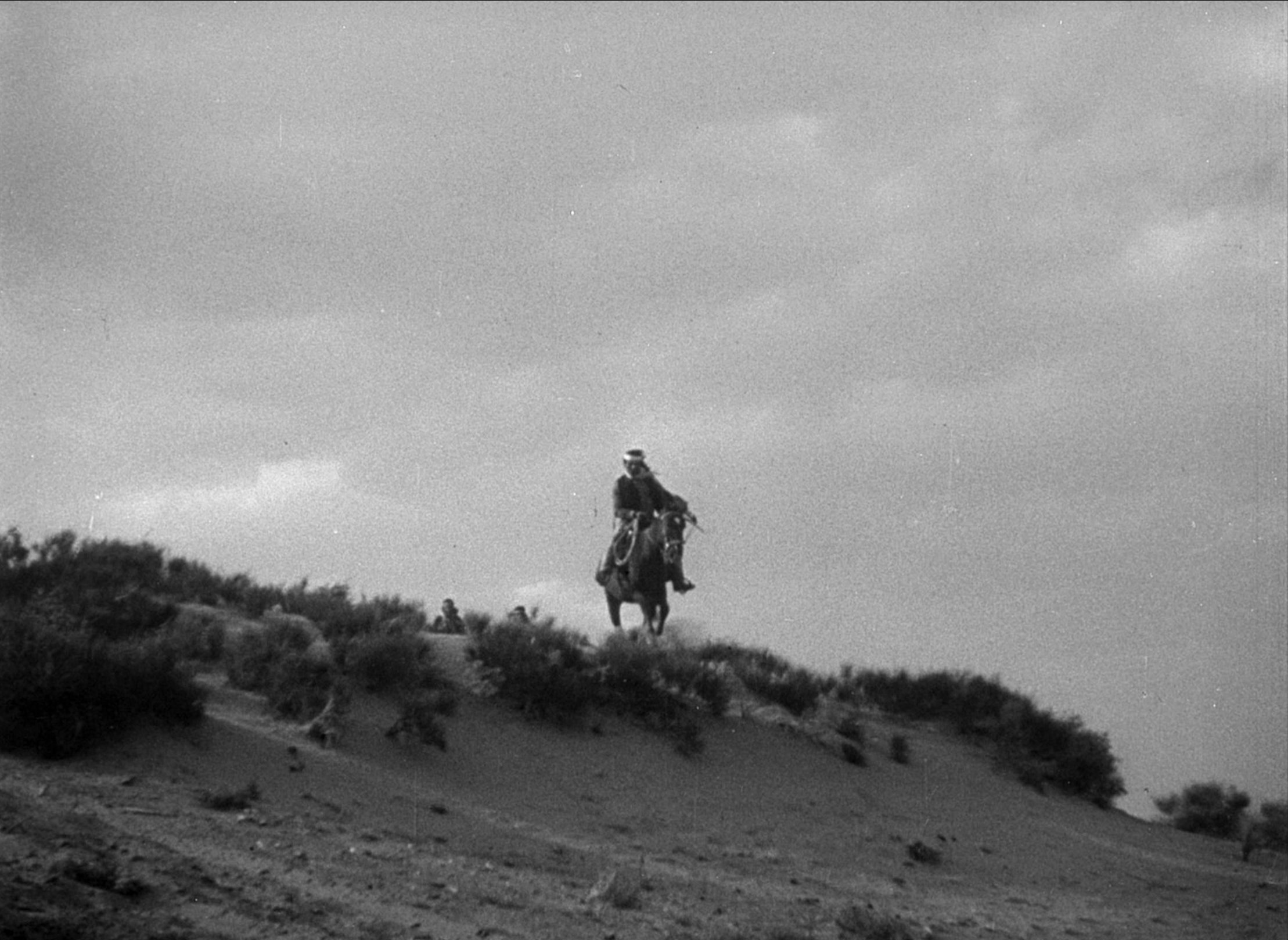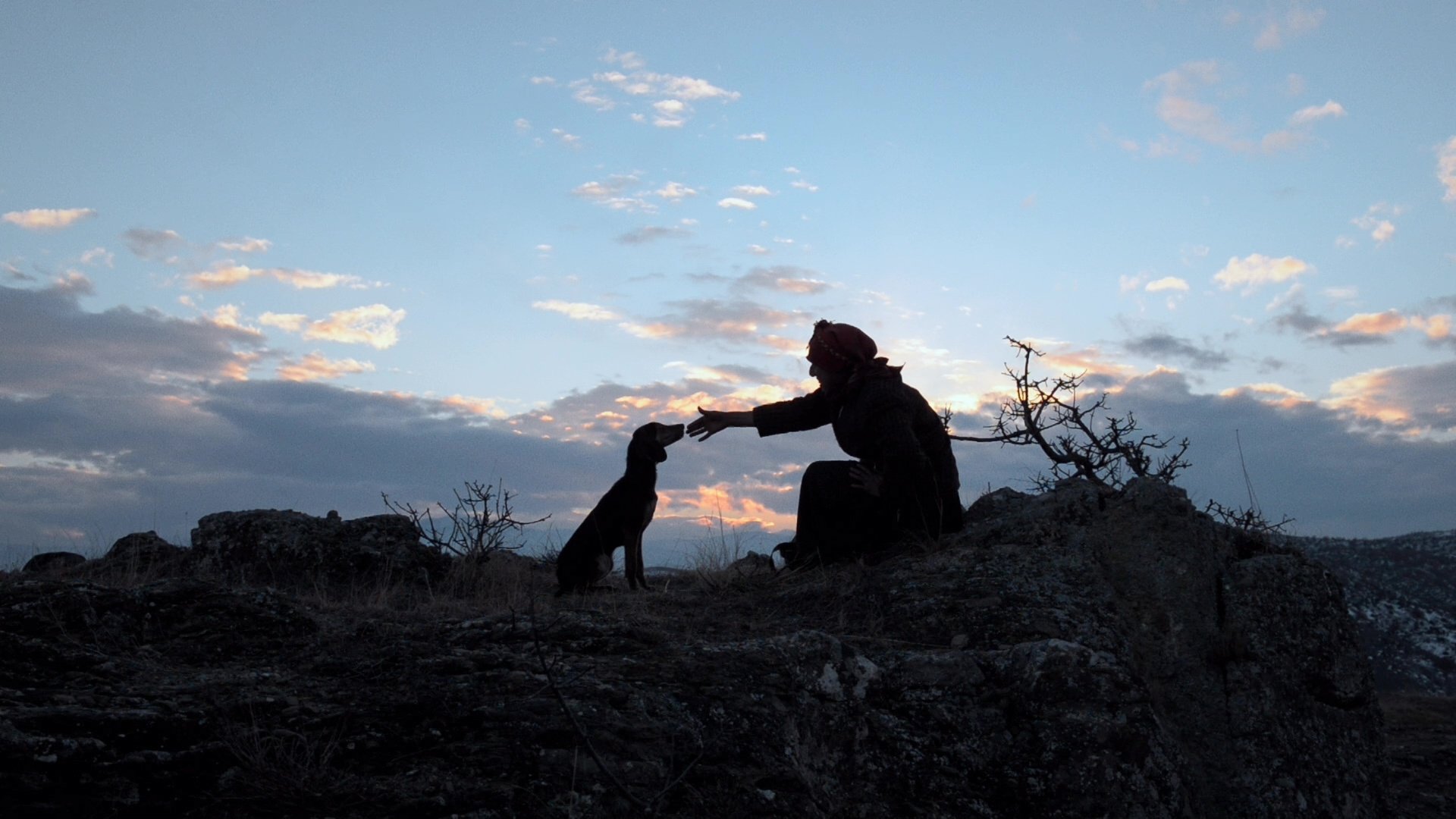Ace in the Hole (1951)
QFS No. 136 - I’ve managed to see a great deal of Wilder’s films but he made so many that there are a lot left for me to watch. He’s another one, like John Ford, with a very high batting percentage of great hits. I went with Ace in the Hole because, well, don’t we all want to bask in the glow of Kirk Douglas’ chin for nearly two hours?
QFS No. 136 - The invitation for March 27, 2024
This is our second Quarantine Film Society selection by the great Billy Wilder, after having seen one of his earlier films The Lost Weekend (1947, QFS No. 84) a couple years ago. Ace in the Hole (1951) has been on my to-see list for some time, so I’m very much looking forward to it.
I was tempted to select a Wilder film I’ve already seen because they are so rewatchable. And I’ve managed to see a great deal of Wilder’s films - Some Like it Hot (1959), Sunset Boulevard (1950), The Apartment (1960), Double Indemnity (1944) are such terrific classics - but he made so many that there are a lot left for me to watch. He’s another one, like John Ford, with a very high batting percentage of great hits. I went with Ace in the Hole because, well, don’t we all want to bask in the glow of Kirk Douglas’ chin for nearly two hours?
Reactions and Analyses:
One of the most surprising aspects of Ace in the Hole (1951) is that it’s from 1951 and not 1971. There’s an expectation for many of the post-World War II American films, that they have a Capra-esque quality. A happy ending or at least one that’s, at best, ambiguous or a qualified victory for the protagonist.
A happy ending Ace in the Hole certainly does not have. One of our group members highlighted a shot at the end of the movie, where the crowds have recently left and all that remains is Leo’s father near a sign that reads “Proceeds go to Leo Minosa Rescue Fund.”
It’s a shot that speaks to the fickle nature of the crowd, the spectacle over, and all that remains is the detritus of the carnival and a family in ruin. Leo (Richard Benedict) has died. His wife Lorraine (Jan Sterling) has departed with the masses, just as she intended to early on before Tatum (Kirk Douglas) convinces her that her fortunes will change soon. And Tatum, having used Leo and keeping him trapped longer than necessary in order for him to reap the benefits of the sensational story going viral before “going viral” was a term, also dies. But not before a final act of almost valor.
The 1970s – coming on the heels of New Wave moments throughout Europe which in turn came on the heels of Post WWII neorealism – featured a generation of filmmakers who were raised by people who had witnessed the horrors of humanity and understood that real life had no clean happy endings. Obviously, this is an overgeneralization but the trends are clear to see from the films that came to life in this era in the second half of the 20th Century.
With its social commentary on human nature and their attraction to spectacle, the media’s role in fanning the flames of that human nature, and a non-Hollywood ending Ace in the Hole feels like an independent film from the 1970s and not a studio release from twenty years earlier. You can easily see a throughline between this and Network (1976), a film whose very essence is an analysis of media, entertainment and sensationalism. The cynicism in Ace in the Hole feels uncommon for the 1950s, with the Cold War in its infancy and the Allies victory in World War II fresh in people’s minds. The fact that it’s Billy Wilder and that the film is twenty years before its time, in some respect, is perhaps why I’m so drawn to it now and why it has been rediscovered as an overlooked classic of the time.
Tatum says early in the film, “You pick up the paper, you read about 84 men or 284, or a million men, like in a Chinese famine. You read it, but it doesn't say with you. One man's different, you want to know all about him. That's human interest.” Tatum, as an anti-hero, displays a deep understanding of that human nature throughout Ace in the Hole. Sheriff Kretzer (Ray Teal) hates him but Tatum turns him around and knows what the sheriff most wants – to be seen as powerful and important. Tatum tells Sherrif Kretzer how he will promote the sheriff as the man most determined to save Leo and in exchange Tatum gets exclusive access to the mine and the metaphoric gold inside. He convinces Lorraine to stay in town and play the grieving wife because it will make her a star and make all of them money. Tatum is a devious genius and he almost pulls it off.
“Almost” is the operative word. His gamble has proven too costly and Leo dies. And here’s one of our primary debates happened in our QFS discussion group. In the end, does Tatum feel guilty? Is that what drives him at the end? He’s clearly devastated by Leo’s death – but is it because it ruins his own chance at stardom and the heights of journalistic fame? Or is it because he’s come to terms with the fact that he’s Leo’s “murderer,” that he directly caused Leo’s death and consequently has a moment of clarity?
Several in the group believed that Tatum has no real remorse. Sure, he didn’t want Leo to die but he also knew that it meant the end of his own life. Others believed that he did in fact feel remorse and you can see it by his solitary act of bringing in the priest to comfort Leo for his final moments. Then, Tatum literally shouts from the mountaintop to tell everyone that Leo is dead and the carnival should go home. If he was truly in for all of this glory himself, he would’ve let Leo die quietly and had the “scoop” on Leo’s final minutes. (“Scoop” in quotes because Leo is the one creating this scoop.)
(Above sequence:) Tatum shouts from hilltop that Leo is dead. Is this the guilt-ridden face of a man full of remorse?
For me, personally, I think he did feel a measure of remorse and guilt but too little too late. And perhaps that’s why he doesn’t seek medical attention after Lorraine stabs him – he knows it’s his penance. He has to now suffer as he’s caused Leo’s suffering for his own gain. Perhaps explains why he accepts this pain without seeking amelioration or offering complaint, but it’s left (deliberately?) ambiguous.
People in our group brought up the cynicism but for me – and I said this early in our discussion – the film didn’t strike me that it was overtly cynical. And that probably says more about me or the time in which I live in now. For the 1950s, sure, the film is more cynical about human nature than popular culture portrayed. But we’ve now lived 75 years or so since then and seen the world revolve around capitalism, social media, hype, and the classically American propensity of squeezing money from every corner of human life. GoFundMe campaigns and “tribute” songs to raise money are the a logical extension of the funds to save Leo in the cave, the altruistic flipside of tragic spectacle.
And Leo – even the most “sympathetic” character in the film – is a grave robber of Native American artifacts! The person we’re cheering for to survive has, himself, stated that he’s probably cursed by the old spirits for robbing one too many times the burial sites of the indigenous of New Mexico. (Not to mention the studio so disliked the film that after its initial release they pulled it and remaned it “The Big Carnival” because people, you see, like carnivals so they might think it’s a fun movie! Talk about cynicism.) So it’s fair to say Ace in the Hole does have loads of cynicism – on screen and off – even though that’s not what first struck me.
The story is rife with plot holes as pointed out by the group, including the biggest one – why couldn’t Lorraine go down there to talk to Leo? It’s true – once Tatum goes down there frequently and it’s seemingly now safe to talk to Leo, then why can’t people who love him do that, like his parents? Also, is it believable that Tatum would suffer a stomach wound like that for so long? Only if he believes it’s a moral punishment.
And there’s this question – did Tatum ultimately win? He, too, is stuck in a hole – both he and Leo are in a hole together, one actual and one metaphoric. Both are counting on the other to extract them from their personal holes, but both die together. Tatum’s goal was to get back on top, become famous and return to New York. And while he doesn’t make it to New York and out of Albuquerque physically, he has become famous – people are cheering for him, the radio broadcast wants his exclusive thoughts. He is, for a moment, atop the world.
But it’s all fleeting, like the masses who come overnight and leave the next day as the tragedy ends. Ultimately, Tatum will become infamous and perhaps that’s victory enough – especially if you’re a cynic.
20 Days in Mariupol (2023)
QFS No. 135- Long time QFS members know that we rarely select documentary films due to a long-standing bias against them within the ranks of our QFS Council of Excellence. This is only our third documentary selection.
QFS No. 135 - The invitation for March 13, 2024
Long time QFS members know that we rarely select documentary films due to a long-standing bias against them within the ranks of our QFS Council of Excellence. This is only our third documentary selection. The other two – Honeyland (2019, QFS No. 5) and Flee (2021, QFS No. 69) were also both nominated for Best Documentary Feature at the Academy Awards, with Honeyland taking the prize in the 2020 Covid year Oscars. Flee did not win, but was the first film ever to be nominated for both Best Documentary Feature and Best Animated Feature – a feat which is still pretty astonishing. It remains one of my personal favorite films of the decade.
What both those films had in common were that although documentary films, they felt as if they were scripted narrative features. Honeyland followed an old lady in Macedonia harvesting honey the old-fashioned way as if it was a scripted movie, in a sense. Flee also had a scripted animated feature film feel – both because of the story of the protagonist’s life and the masterful manner in which it was told.
Which brings us to 20 Days in Mariupol (2023) – a documentary which will likely have a similar narrative action film feeling. The story was introduced to me last year by my brother who sent me this link to an Associated Press story by and about AP journalists trapped in Ukraine as the Russians invaded. They had been reporting from the battlefield and soon discovered that they were also being hunted. As most of you know, my brother is a journalist and he first learned of this incredible story while serving on a committee that selected these reporters for an award. Of course upon reading the story myself, I immediately knew this was a movie and started to look into whether the rights were available. Little did I know that the documentary was being finalized with footage from the frontlines by the journalists themselves. A movie, in some fashion, was already in the works.
The story is incredible and let me give you the lede right here: “The Russians were hunting us down. They had a list of names, including ours, and they were closing in.”
If that’s not the way to begin a great story – on screen or in print or otherwise – then I don’t know what is. The fact that it’s also a true story and one that we can watch, well I think we ought to do that.
Reactions and Analyses:
What can a documentary do that a scripted feature film cannot? This is one of the questions that went through my mind as I watched 20 Days in Mariupol (2023) and one of the first aspects of the film we discussed. In a narrative film, even a bleak film featuring war, desperation, doom and destruction all around – you would be hard pressed to find a movie that didn’t have some inkling of hope. Some path to escape, at least, if not victory outright for the protagonist.
In a documentary, however, there’s no expectation that you will receive that olive branch or lifeline from the filmmaker. The film can be as relentless as it needs to be because this is real. In a feature film, the filmmakers would (rightly?) be trashed for putting the audience through something relentlessly harrowing. In a documentary, you can turn that feeling into something like a duty to watch it. Because providing witness is what the filmmakers are hoping for in showcasing it for an audience.
One in our group put it that way – it felt like our duty to watch 20 Days in Mariupol. In part because the filmmaker-journalists made it their mission to make sure the world knew what was happening in Mariupol. Going into this film, I had some knowledge of what the filmmakers went through, having read the Associated Press reporting and also the story of the filmmakers being personally targeted by the Russian troops. I expected the filmmakers to include themselves in the storytelling, much in the way The Cove (2009) did – also an Oscar winner for Best Documentary Feature – as someone in the QFS group brought up that parallel.
Refreshingly, the filmmakers of 20 Days in Mariupol did not give in to making the film about themselves beyond what was necessary to tell the story. Although Mstyslav Chernov’s voice guides us in voiceover, the camera is never turned inward. He reflects on occasion about being Ukrainian and there are artistic vignettes of a hand covered in sand and images of his children playing in safety, for example. But they are, thankfully, very few and used at just the right times and just the right ways to break up the constant movement and bloodshed we witness on screen.
To that point, another in our group brought up the moments where the filmmaker sits down, camera still rolling, and we see a hallway sideways or the ground, not focused on anything in particular. The filmmaker catches his breath, taking in the horror and pausing from showing more if it. The moments are needed relief and are a fascinating way of involving the filmmaker in the story in a subtle way. An editor and director could have easily cut those parts out as they don’t advance the “story” or any narrative, but keeping those moments in both help to humanize our filmmaker guides through the film but also to emphasize that we are in this with them – experiencing this with them.
One member of the group mentioned that we never see the filmmaker’s face (until the very end). And yet, we are riveted – we want him to survive. He is us. In that extraordinary action sequence when they have to escape the occupied city with a Ukrainian special strike force, the filmmaking is as good as any you’ll see in a modern war film or a video game. We’re running, we see the soldier in front of us talking when paused around a corner, we dive when an airplane screams overhead. We’re on the edge of our seat, wondering how the filmmaker will survive. And yet – we’ve never seen his face.
That’s a pretty remarkable feat. Perhaps it’s because it is us. We are looking and experiencing the world with this filmmaker and exclusively through his eyes throughout – which is perhaps another thing documentary does that a feature film wouldn’t be able to get away with necessarily. Not seeing the protagonist at all and playing the film entirely through point of view is a hallmark of “documentary style” but often you see clever ways a narrative filmmaker will at least give us a glimpse of the person holding the fictitious camera. But in the documentary, we don’t see the person holding the camera, favoring instead the horror but not in a gratuitous way – it’s real, seen how a person would. At times directly, at times looking away, searching for something else but drawn back to the calamity. The blood, the babies dying or living, the people grieving the death of a child or other family member. We experience it in what feels like real time through the filmmaker’s eyes.
And finally – since this is such a recent war, one still going on, there are so many elements that make it feel truly “modern.” There’s the mission to get internet. Seeing the dozens of power strips so people can charge their phones just to use them as flashlights. The familiar buildings (e.g. Crossfit gym!) being used as shelters or bombed out malls. And then, the entire social media storyline in which the Russians accuse the reporters of faking the bombed out maternity ward and using crisis actors. “Fake news,” if you will. History isn’t just written by the victors, it’s being written in real time – as one of our QFSers put it.
In Chernov’s Academy Award just a few days ago, he said:
“But I can't change history, I can't change the past, but we are all together, you and I, we are among the most talented people in the world. We can make sure that history is corrected, that the truth prevails. And so that the people of Mariupol who died and those who gave their lives will never be forgotten. Because cinema shapes memories, and memories shape history."
Chernov’s use of footage he shot which then later appears as news footage in television programs around the world is incredibly effective in so many ways, but in one way in particular. It reminds us that one of the main driving narrative thrusts of the film is we need to get the story to the world. To prove it happened and so no one forgets. The fact that it was real, that it was a documentary, makes it more urgent for the filmmakers to share it and for the world’s eyes to see it. They got it out to the world and we’ve seen it. We were witness and it was, indeed, a duty to help shape memories and history.
Past Lives (2023)
QFS No. 134 - What I know about this film approaches zero. I do know it’s from South Korea and that it’s Celine Song’s first film after being a staff writer on a major Amazon series. So, you know – pretty amazing, that!
QFS No. 134 - The invitation for February 28, 2024
What I know about this film approaches zero. I do know it’s (partly) from South Korea and that it’s Celine Song’s first film after being a staff writer on a major Amazon series. So, you know – pretty amazing, that!
But I’ve deliberately kept myself away from knowledge of the plot and was looking forward to seeing the film. This is our second selection from South Korea, the other being Bong-Joon Ho’s Memories of Murder (2003, QFS No. 112), and many more remain on my to-watch list. The South Korean film industry just keeps blasting home runs all over the place.
Join us this week if you can!
Reactions and Analyses:
There’s a shot in Past Lives (2023) that essentially tells the premise of the film in one frame. It’s early on, Na Young says goodbye to Hae Sung because her family is immigrating from South Korea. The goodbye is curt and without over-wrought emotion because, well, they’re adolescents.
Then they each walk towards their own homes – Na Young upwards on the right of the frame and Hae Sung on the left, more or less straight, away from us. This image defines, in some ways, their trajectories. It’s simple and straightforward but clear. And it definitely sets a course for the split in their lives.
When I first selected Past Lives, knowing very little about the film besides its accolades and that it’s Oscar nominated for Best Picture, I assumed this was a South Korean film. And after having seen it, I can say that it’s very much an American film, an immigrant’s tale. This splitting or fracturing of a life in divergent storylines. It could’ve been told from my parents’ perspective leaving India in the 1970s.
I brought this up in our QFS discussion and the others pointed out that this is not just an immigrant’s tale – this is the story of anyone who is forced to split from their home at a young age and has that fondness, that nostalgic remembrance, and that powerlessness to stop that fracturing the familiar. The fact that this is also true and valid illustrates how universal and accessible the story is.
Past Lives makes an argument for the simple film told with tenderness but with just the right amount of layering. The Korean concept of “in-yun” – the layers of interaction between throughout past lives – feels deliberate beyond how it’s used to describe the relationship between Hae Sung (Teo Yoo) and Na Young/Nora (Greta Lee). Perhaps in-yun is also meant to convey that the film is not as simple as it seems, that it’s layered in unseen ways (which, I’m sure, is me misinterpreting the definition of in-yun but bear with me). That there’s depth between these two childhood friends (sweethearts?) and when they reconnect later in their lives, that connection has meaning beyond how it’s been set up in the film.
The QFS group was split on the strength of this connection. For some, the childhood connection between Na Young/Nora and Hae Sung didn’t suggest a deeper connection later in life. For example, Nora claims to not exactly remember the boys name while talking on the phone with her mother, but then discovers he’s been asking about her whereabouts for a little while now.
For others in our group, their connection in childhood was enough and felt familiar – this idea of two lives, connected through family, culture, and yes, love – two people diverging but when they reconnect, it’s fated they are to be together. Or, more specifically, in-yun. Case in point: your enjoyment of this film is directly related to whether or not you believe that their relationship at the beginning is strong enough that they could reconnect so quickly over such a long span of time.
Past Lives has the ease of a simple film well told but some of the trappings of a first-time filmmaker, several of us felt (including me). For example, there’s a scene where Nora’s (non-Korean) husband Arthur (John Magaro) talks about how they met and became a couple and moved in together and got married so she could get a green card, etc. What’s missing in his description is “love.” The kind of standard American relationship story devoid of cinematic spark or romance, but realistic and familiar. He continues to then say that in this version of the story, Hae Sun – the childhood lover – returns to her life and she realizes that this is who she should’ve been with her whole life. That he, Arthur, is the villain in this story. Hae Sun is more closely suited to her culturally but also very satisfying narratively. Both Nora and Arthur are writers so this aligns with their story-telling impulses.
Now, that’s all true but … we know that already as an audience. The filmmaker seemingly hasn’t trusted us to put that all together and she has a character explain it to us. This, to me, is a significant misstep in a story otherwise hewing close to cinematic realism. The scene, also, continues and Arthur says he started to learn Korean because Nora was talking in her sleep but in Korean. He says “You dream in a language I can’t understand. It’s like there’s this whole place inside you I can’t go.”
That is beautiful. It’s poetic, it speaks to the character himself, to their relationship, to the thrust and import of that scene. The scene could have very easily started here and it would have spoken volumes. But instead we get the needless explainer. And the ending as well – there’s a version of the film that ends as soon as Hae Sung leaves, wondering if this life is actually a past life and “we are already something else to each other in our next life? Who do you think we are then?”
Again – this is beautiful poetry. One member of the group suggested that ending of the film would be stronger if it ended right here, or right after this and he gets in his airport ride and goes. Instead of the long walk with Nora back to her husband where she cries. (And this is where I offered the additional criticism of staying in a wide shot instead of seeing her face here, for that felt like a payoff to me.) Even the opening shot - there’s an unseen bar patron watching the three in the bar. We push in slowly but instead of trusting the images of these three, with only their expressions and body language to inspire our curiosity, we’re hearing a bar patron who we will never see give us a setup that our eyes would have given us without the help.
Perhaps. These are all counterfactuals and there’s an argument in conducting film criticism that one needs to focus on the film in front of them and not the alternate version in our heads. Yes, valid – but still, the fact that these questions arise are less about how we would’ve done it differently and more about a few small weaknesses in an otherwise solid, simple film.
Despite some first-time filmmaker criticisms, there are a lot of beautiful uses of visual storytelling throughout - including the use of symmetry across eras between Na Young and Hae Sung.
And in defense of the simple film – I mean “simple” not that it lacks depth or intelligence. Quite the opposite. When the filmmaker has trusted us, we’ve filled in the blanks and walked in the shoes of two people different than ourselves and went on a journey with them. As one person in our group remarked – it’s refreshing to have a film that’s only about 90-minutes, has a simple but tender story, well-acted and executed, that brings up emotions in a natural way. Not overwrought or excessive or gratuitous. (Counterexamples from this award season include Oppenheimer, 2023 and Killer of the Flower Moon, 2023). I believed I added “inoffensive” as a way of describing Past Lives and, once again, I meant it as a compliment. There are no subplots, no side character, no stretching for meaning. It’s all there. Simple.
Whether that simplicity was effective or not, we all were in agreement, however, on this one thing – we are grateful that a movie like this is still being made, is receiving accolades, and that a lot of people have watched and enjoyed it. So consider this an endorsement of the simple film.
The Holdovers (2023)
QFS No. 133 - This is our first selection of an Alexander Payne film, one of my favorite contemporary filmmakers. I’ve seen nearly all of his films, hence its exclusion from the QFS Priority Selection List since I’ve seen nearly all of them. Truly one of the great living screenwriters, a modern auteur.
QFS No. 133 - The invitation for February 21, 2024
This is our first selection of an Alexander Payne film, one of my favorite contemporary filmmakers. I’ve seen nearly all of his movies, hence its exclusion from the QFS Priority Selection List since I’ve seen nearly all of them. Truly one of the great living screenwriters, a modern auteur.
The first Payne film I saw was Election (1999) at an advance screening in Ann Arbor* while I was in my first screenwriting class. Our professor took us to see it at the State Theater and the film didn’t even have the final credit scroll yet. I saw it a second time at the Michigan Theater during its regular release later that year and it remains one of my favorite viewing experiences – the film brought the house down, especially after one line in particular. Exemplary satire, Election is an underrated modern classic and should have earned Reese Witherspoon at least an Oscar nomination, one of a litany of Oscar Crimes™ over the years (see 2023: Gerwig, Greta).
Payne’s Sideways (2004) not only won him his first Oscar for Best Adapted Screenplay but also single-handedly made Santa Barbara Wine Country overcrowded, drove up the demand for pinot noir production and consumption and destroyed the reputation of the perfectly fine merlot grape. His Nebraska (2015) is a beautiful, melancholic road trip film. Throw in About Schmidt (2002), and The Descendants (2011) for which he won another writing Oscar, and you could call that a pretty terrific career.
I’m sure I’m not the first one to suggest this, but from the way I see it Payne is the Preston Sturges of our times. Sturges, as you recall from QFS No. 2 The Miracle at Morgan Creek (1944), wrote and directed films about ordinary misfits caught in a lie or a deception – as a fake husband in The Miracle at Morgan Creek, Hail the Conquering Hero (1944) as a fake war hero or Sullivan’s Travels (1941) as a filmmaker posing as a fake hobo – as a way into the exploration of humanity, relationships and society. Both have a similar way of capturing a character’s story through humor, often bittersweet, but with the slightest of social commentary. With Sturges that commentary was a little more overt and daring, and Payne’s mission is not cultural or social criticism necessarily. But you can find it in his authentic portrayal of an ordinary person, his or her sense of normalcy upended.
Sturges might’ve used more sweet than bitter in his cinematic concoctions, and Payne can be acerbic and creates some truly uncomfortable and squirm-inducing scenes. So it’s not a perfect comparison but I stand by the assertion. Regardless, both carved out a particular niche in their eras – auteurs whose works relied upon well-told stories with grounded characters in exquisitely crafted scripts as opposed to artistic or visual innovation. With health doses of humor.
I’m very much looking forward to finally seeing another Alexander Payne film, his first in six years, and having a chance to discuss it with you. Please watch The Holdovers at home or in the theater – still playing somewhere near you I believe – and we’ll discuss!
*Home of the current National Champions of College Football.
Reactions and Analyses:
There’s a moment in The Holdovers (2023) that feels like its heading towards familiar territory. A misunderstood curmudgeon teacher and his misfit students all have to somehow survive the winter together at their private boarding school as they’re stuck with each other until school resumes after the break. With this setup, it’s easy to be prepared for a story in which the students come to understand this man more and the teacher softens and becomes a better person and therefore a better teacher by knowing his students more personally – and everyone learns something about themselves or life that prepares them for the world more than their conventional education ever could.
I’m not trying to sound glib; many an excellent film has done this well and movingly – Dead Poets Society (1989) or The Breakfast Club (1985) come to mind. So that’s the direction Alexander Payne is appearing to veer us towards in The Holdovers.
But then, something happens. All the kids, except for one literally fly away in a helicopter to a mountain top.
What Payne really setting up for is this – don’t expect anything because this movie is not going where you think it is going.
As one of our group members put it, you think it’s going to be a movie about class, but it’s not just that; you think it’s going to be a movie a hardened grump falling in love and being transformed by that, but it’s not; you think it’s about the start of a friendship between a teacher and his student – it’s not that exactly either.
All of those themes are in The Holdovers, to be sure, but just when the narrative goes in the direction you think it’s going to go, it goes somewhere else. That this happened in a film that Alexander Payne directed but did not write – to me, that’s incredibly impressive. He took another script and made it a film that feels very much like his voice.
What Payne has always been good at is making characters feel real, even when they’re a little askew. His characters have believable inner lives, are imperfect, and struggle inwardly but not usually outwardly. What I’ve loved and appreciated about Payne’s movies is that they have a very distinct comedic edge but they’re truly dramas. I empathize with the characters in his movies because they seem so much like humans with familiar struggles.
The Holdovers caused me to experience something new for me in a Payne film – it made me well up with tears several times. Angus (Dominic Sessa) meets his father (Stephen Thorne) in a mental institution, they hug and Angus tells him he misses him. His father, seemingly moved, can actually only reply that he believes the institution’s staff is poisoning his food. And then you realize that Angus is truly alone and in deep need of love and encouragement. When Mary (Da’Vine Joy Randolph) breaks down at the party about the loss of her son, you feel it deeply, as if she’s been holding it at bay for so long and finally lets her grief go.
Topping off all them, however, is the end. The handshake between Angus and Paul (Paul Giamatti). There is perhaps more power, more earned emotion in that handshake than in any number of romance films or romantic comedies’ climactic kisses. And importantly, it’s not a hug – it would’ve been ruined if it was a hug. It would’ve felt fake, like a movie. Because that’s not their relationship. They’re still teacher and student. They went through a journey together, learned each other’s deepest held secrets, have changed and grown to see each other as lonely, suffering, resilient human beings. And that handshake holds it all, with Paul’s cracking voice and Angus hearing from his teacher – a sort of surrogate father role – that the kid is going to be all right. That’s all Angus needed in his journey, was someone to tell him that. And it was earned, narratively, and paid off in the right way.
In the invitation to this week’s selection, I mentioned Payne as our era’s Preston Struges. And I think this film helps bolster that case. Let’s set aside how both auteurs deftly use comedy to tell a dramatic story in ways both narratively interesting but grounded in truth. There’s also the social criticisms embedded in their films.
Payne addresses class in The Holdovers in several ways but most importantly it’s woven into the DNA of the main character Paul. When we learn about his backstory, Paul reveals he was kicked out of Harvard because of allegations of plagiarism by the son of a famous person at Harvard – when it was actually the opposite, the son copied Paul’s work. But the administration wouldn’t have sided with a kid who left his abusive father and extricated himself from poverty and ended up at Harvard through his own means. The fact that he’s cut down by the wall of privilege is devastating in the retelling and is evident in the unresolved grief that Paul contains within.
Similarly, we hear about Mary’s late son who couldn’t get a scholarship to pay enough for college, went off to the army with the hopes of eventually going to college, only to have him die fighting in Vietnam. Mary’s story touches on race too – it’s never said but you know that he was the only Black kid in his class, whose mother worked there just so he could go to school and have a chance.
In all these ways, Payne is making an oblique criticism of the system that rewards the wealthy and well connected, but not through didactic speechifying, but through the story, through the setting, and through the characters. Simply pointing out it exists in the way it exists and portraying it in a way that shows it’s real and not a narrative contrivance is perhaps one of the best ways a filmmaker can illustrate how inequitable things truly are.
Sturges’ social criticisms of a different era centered around poverty and concepts of masculinity/military might. In Sullivan’s Travels (1945), Sullivan (Joel McCrea) a Hollywood director wants to make a movie about hobos. To do so, he goes and lives as one. But it’s skin deep – he can escape this any time so there’s no real lesson learned and he’s only doing this as a temporary means to an end. Through a series of circumstances, he ends up homeless and without memory and actually has to live as a vagrant. In both The Miracle of Morgan’s Creek (1944, QFS No. 2) and Hail the Conquering Hero (1944), the main character has to pose as a military man or a masculine husband figure despite being just an ordinary guy who gets caught up in a… well not quite lies, but untruths let’s say.
(Above) Preston Sturges’ Sullivan’s Travels on the left (1944) and Alexander Payne’s The Holdovers on the right. Completely different storylines in these specific films, but both filmmakers auteurs wield comedy to tell dramatic stories with an embedded criticism of class. Auteurs of their times.
Sturges uses more narrative contrivances than Payne does but both point out some of the unfairness or absurdity of life through a lived experience of a character, through the use of humor and poignancy – with near perfect writing and performances. Again, it’s not a perfect comparison but both Payne and Sturges were auteurs who had something to say about our current world and about humanity that is revealing while simultaneously being entertaining.
Another member of the group put it this way – I thank the film gods that a movie like The Holdovers is still being made. Writing, directing, acting, an adult storyline and grown-up themes. This is the film that has become an endangered species in the era of limited series and the mid-budget character driven dramas ending up on screening services instead of movie screens. Thank the film gods indeed for giving us Dominic Sessa and Da’Vine Joy Randolph in these roles, and for seeing Paul Giamatti corner the market on the curmudgeon with the soft center. And thank the film gods for Alexander Payne continuing to use his formidable might to bring these stories to life.
A Night at the Opera (1935)
QFS No. 132 - Okay fine, so it’s not exactly a holiday classic, but doesn’t this time of year seem like a perfect opportunity to watch a Marx Brothers film? We haven’t yet selected a film by the comedy legends, and A Night at the Opera (1935) is widely known as one of their best films.
QFS No. 132 - The invitation for December 20, 2023
For our final 2023 selection, we’re going to a holiday classic!
Okay fine, so it’s not exactly a holiday classic, but doesn’t this time of year seem like a perfect opportunity to watch a Marx Brothers film? We haven’t yet selected a film by the comedy legends, and A Night at the Opera is widely known as one of their best films.
I know I’ve seen parts of many of their movies, but I believe I’ve only seen Duck Soup (1933) from start to finish. I have a feeling the redeeming artistic value of this movie might be minimal. But movies are a lot of things – and sometimes they’re just pure entertainment. Comedies are difficult and require so much technical skill, so it should be fun to take a closer look at how they pull of the perfect banana cream pie toss.
And with the holiday break and kids are off of school, this might be a fun one to watch with them for all the gags and mayhem and the answer to difficult trivia questions. For example – can you name all of the Marx Brothers? I got three out of five (answers below)*.
So join us for the final QFS of 2023. I’d love to do more before the calendar turns, but wouldn’t you know it? The strike ended and now there is finally directing work. It’s back to the TV mill for me, hence there will be some pauses coming up for the movie group.
Enjoy A Night at the Opera as we wrap up QFS for 2023!
*Chico, Harpo, Groucho, Gummo and Zeppo. I totally missed Chico and Gummo, in part because Gummo was not in any movies. I have no excuse for missing Chico.
Reactions and Analyses:
Comedy doesn’t always transcend eras. Some can be very specific to the time in which it was created, with cultural references or styles of speaking that become outdated. The Marx Brothers are among those who have managed to create works of comedy that endures beyond their lifetimes.
True, in A Night at the Opera (1935), there are minor handful of contemporary jokes lost on modern audiences. But even in those – such as the one about “quintuplets up in Canada” – the content of the joke itself may not have lasted, but the delivery and Otis B. Driftwood (Groucho Marx)’s reaction and delivery of the line still gets a laugh: “Well, I wouldn't know about that; I haven't been in Canada in years.”
Any discussion about A Night of the Opera is going to center on the Marx Brothers, of course, because when you get down to it, that’s really primarily what the movie is – a launching point for their comedy. Much of our discussion was about the brothers and almost no talk about the plot or the filmmaking. Which is the point; it is, after all, a Marx Brothers movie.
In addition to Groucho’s near-perfect, constant one-liner deliveries, the Marx Brothers are simply the greatest agents of chaos in movie history. Throw them into any situation, and that’s what you get – chaos. That’s the hallmark of a Marx Brothers movie. The difference, perhaps, in this film is with the inclusion of some musical numbers, the attempt at a love story, and only minor social commentary (as opposed to the more direct commentary in Duck Soup, 1933)
Several QFS members pointed out how one can see their influence on future comedians - Martin Short came to mind, the magic of Penn and Teller, and even Mel Brooks. Rodney Dangerfield is the clearest heir to Groucho Marx we could think of and the discovery of that delighted me immensely.
One QFSer felt less sanguine about the film, that it was repetitive and there wasn’t a story – as compared to a Charlie Chaplin film, for example. Chaplin’s films, though often featuring the same Tramp character, had a strong storyline, a social commentary, pathos, and of course groundbreaking visual comedy and sight gags. Marx Brothers movies, however, were merely a way to setup the Marx Brothers wreaking havoc in a straight world around them. Both are funny, both have endured, and both have stood the test of time. Where Chaplin used artistry to enhance his comedy, the Marx Brothers relied on their on-screen personas and vaudevillian skills to enhance theirs.
One way of thinking about this, to me, is there are movies that are funny (Chaplin’s Modern Times, 1936) and there are funny movies (A Night at the Opera). Movies that are funny are films with a compelling driving narrative that’s told in a funny and artful way. Funny movies are comedies that favor humor and gags above the plot and storyline. This is an utterly unsophisticated way of putting this, but a distinction between styles of films that make audiences laugh is worth considering. How do you make someone laugh? There’s no one way and the differences between how Chaplain does it and the Marx Brothers do it provide some insight into that. A deep dive into this comedy would be, of course, a lot of fun.
Generally speaking, the group agreed that though the plot was thin and perhaps unnecessary even, this is a film that you can probably just pick up at any point and simply enjoy the gags – the absurd amount of people in the cabin, the disappearing beds, the contract negotiation, the final opera, and so on. Perhaps a funny movie doesn’t need to be much more than that.
Black Narcissus (1947)
QFS No. 131 - Emeric Pressburger and Michael Powell are the powerhouse directing duo from England whose legendary work includes The Red Shoes (1948, QFS No. 52), The Life and Death of Colonel Blimp (1943), 49th Parallel (1941), The Tales of Hoffmann (1951), and of course this week’s selection The Black Narcissus. I’ve only scratched the surface myself with their career work but everything I’ve seen has been incredibly impressive.
QFS No. 131 - The invitation for December 13, 2023
Emeric Pressburger and Michael Powell are the powerhouse directing duo from England whose legendary work includes The Red Shoes (1948, QFS No. 52), The Life and Death of Colonel Blimp (1943), 49th Parallel (1941) with Laurence Olivier, The Tales of Hoffmann (1951), and of course this week’s selection The Black Narcissus. I’ve only scratched the surface myself with their career work but everything I’ve seen has been incredibly impressive. It’s no wonder they are so influential to the following generation of filmmakers – Martin Scorsese and Spike Lee to name two – and I feel they need to be studied further by us and future filmmakers.
One of the hallmarks of Pressburger and Powell is their masterly grasp of film craft. The cinematography in their films is legendary and was duly awarded throughout their careers. Their art direction, costumes and set design are unforgettable. I point you to The Red Shoes for a textbook in the complementary usof all those elements as a case in point. Their numerous Oscar nominations for screenwriting and several for editing illustrate their excellence in storytelling for the visual medium.
Black Narcissus is one of those films I should have seen already. I know about its enduring cinematography and some of the story elements, but I’ve never seen it. It’s a big oversight in my viewing history that I’m happy to remedy now. I’m excited to finally see it and continue with my exploration of Pressburger and Powell.
Reactions and Analyses:
The wind. Besides the sweeping vistas, the first thing you really become aware of in Black Narcissus is the wind. Before we even physically arrive at the monastery, the characters make mention of how the wind is unavoidable up there, on the cliffside in the Himalayas above the village in the valley below.
And throughout the film, the wind is a nearly constant. It blows the fringes of the habits of the nuns, shakes the flowering tree branches and the tassels on the drapes. No matter what anyone does, the wind can never be dominated. There is an uncontrollable force that can never be mastered out there all around you and it’s folly for anyone who tries to master it. Worse – the attempt to control an unseen force like that can lead to suffering and madness.
To me, this is one of the overarching metaphors of the film. A group of white nuns come to a palace no longer used in order to turn it into a missionary, to bring their teachings, medicine and religion to a place and people who believe in other ways of being. The group is small and recent; the people already there are ancient and vast.
One way of looking at Black Narcissus is that it’s an interpretation of British colonialism, specifically in South Asia. A small group of people, atop a hill looking down on and away from the locals, are trying to remake a world they’re not normally part of. And they cannot. They can’t control the primal, human nature of the place. (The nuns, are temporary – the winds live forever. India achieves independence from England in 1947, which is the year Black Narcissus is released so this is a very plausible interpretation as it would’ve been on the mind of writer-director Brits Michael Powell and Emeric Pressburger.)
The wind took up a good amount of our discussion about the film. To one QFSer, the wind felt as if it represented the spirit of one’s past, haunting you. Another said he felt the wind revealed yourself to yourself, like a mirror in which you are forced to look at your own image and reflect. It reveals yourself to you. Several of the nuns have joined the order because they have a past they were trying to leave, especially Sister Clodaugh (Deborah Kerr). The solitude of the place, the natural elements, the long vista horizon – Sister Phillipa (Flora Robson) mentions she’s staring to lose faith upon seeing the infinite up there – forces each to confront something about themselves.
For Sister Clodaugh, she hadn’t even thought about her old lover since joining the order – not until she was up on the mountain at the monastery. Then the place, the wind, brought those memories back to her. The primal forces bringing to life primal emotions and urges.
It’s impossible to watch this film and not be utterly swept away by the filmmaking craft. If ever there was a film in which you could feel the hand of a master filmmaker carrying you along, it’s this. (Or master filmmakers to be more accurate.) Everything is tightly constructed and deliberate. The camera pushes in slowly in mid-conversation, but only when needed. Sister Coldaugh puts out her hand to shake Mr. Dean (David Farrar)’s hand, but he instead grasps it gently and squeezes ever so slightly – an intimate moment played entirely in a medium 2-shot with a wide enough lens that the action in the background of the nuns leaving can still be seen. I couldn’t help but say that producers on shows I’ve directed would’ve been horrified if I didn’t shoot a close ups on each person and then an insert on the hand to really hammer it home. But here, the directors choose to play it in a medium 2-shot – so simple, so perfect, and conveys intimacy, sensuality and their connection.
Pressburger and Powell also use canted/Dutch angles selectively but that are so well composed that one QFSer mentioned that they convey motion and movement without actually moving the camera. The close ups fill the frame, with extreme close ups on the eyes or on lipstick being applied to the lips. Contrast that with the wide vistas throughout the picture. The control and firm tightness of the film definitely evoked their The Red Shoes (1948) that the duo makes the year after this movie.
Speaking of those vistas, those matte paintings – for me, this is one of the greatest films ever shot on stage that looks like it wasn’t shot on stage. (One in the group disagreed with me so there’s a difference of opinion on that.) Another QFSer brought up that by using the images of the Himalayas in that particular style (black-and-white photographs painted with chalk), the filmmakers set up the painterly aspect of the film from the start. It’s not “reality” but it’s a painted reality – something that’s heightened and even more beautiful than reality. This painterly set up allows you to accept those vistas and the disappear into the story.
But it’s not just that they are beautiful, it’s what they represent. The vastness, the superiority of creation all around them, to me, makes the nuns not only smaller, but their mission almost meaningless and futile in the face of the abyss, the infinite around them. In particular, the part of the set with the huge church bell. The staging of this is astonishing. Not only is it on the edge and gives us a feeling that these nuns are all teetering on the precipice of stability, but the sheer (pun intended) technical feat of this – the directors had to have multiple matte painting backgrounds to simulate reality. There are the wide shots from behind the bell looking out towards the mountains. Then there are angles that show the bell, the nuns on the left of the frame, and the valley stretching out into the distance. And then, to top it off, there’s a high angle matte painting – a shot from above the bell looking down into the distant canyon floor below. All of these had to be conceived, planned out, then rendered in advance. The filmmakers couldn’t just walk on set and choose where to put the camera because they had to create that reality beforehand according to their vision in advance. It’s all so astonishing and inspiring.
It's been documented that Pressburger and Powell took inspiration from the Dutch painter Vermeer and his landscapes. A member of the group pointed out that it has a lot of single source lighting as well, evocative of the painting of Caravaggio. Which is no small feat for Technicolor stock that required far more light to properly expose than the human eye requires. Painterly is definitely an apt word for this film.
What genre is this movie? That is a question someone in the group asked. Of course, it’s drama – but could it also be a thriller, with a horror-like climactic resolution? There’s a warning early on by Mr. Dean that they won’t make it until the rains come. And, ultimately, that happens. But Black Narcissus in one way of looking at it is akin to a closed-room thriller where they all start to go crazy and then one attempts to kill one of them.
In an admittedly strange comparison, I brought up Danny Boyle’s overlooked Sunshine (2007) that features a mission to the sun to launch nuclear weapons into it in order to kickstart the failing sun’s heat. In Sunshine, everyone is on a mission, they start going crazy, and there’s somehow an entity on board who tries to kill them as the film goes on. It’s not a perfect parallel, but after seeing the slow burn of Black Narcissus there’s an argument to be made that this can be considered a thriller in many ways. (Another in the group brought up Alfred Hitchcock’s Rebecca, 1940, for its feel in the same filmmaking era.)
A QFSer brought up this exchange and its potential importance, which reflects the film’s title:
Young Prince: Do you like it, Sister Ruth? It's called Black Narcissus. Comes from the Army-Navy Stores in London.
Sister Ruth: Black Narcissus. I don't like scent at all.
Young Prince: Oh, Sister, don't you think it's rather common to smell of ourselves?
The group member’s assessment is that this is the thematic statement of the film. Here is something that’s being done to cover ourselves, to mask our natural scent. We humans all create a natural smell but we tend to hide it with something. For the nuns, it’s their faith masks their natural self (literally and figuratively), obscures their personal pasts. But you can only cover it – there’s the inner animalistic nature that we all have that either remains suppressed or emerges with time. And it can emerge in scary, deadly ways as it does with Sister Ruth (Kathleen Byron).
In the scene where Sister Ruth puts on her make up – something that covers up something natural – Sister Clodaugh picks up the bible. Is this her cover? Is that what the directors are saying, that religion is a cover for the natural animal of ourselves? Perhaps, which sounds like a pretty subversive criticism of organized religion if that’s their intention.
There’s also something to the sadhu, the holy man who sits in reverent silence on the mountain top. Different religions orders come and go, but he remains there, unfazed. The image of an ascetic praying at the mountain, selfless, having achieved enlightenment and a oneness with everything around them is a common one in Hindu literary and religious traditions. Lord Shiva is often portrayed this way, long locks of matted hair, seated atop the Himalayas. This feels like the filmmakers are tying this into theme of colonialism trying to corral an ancient people and its faith, but it could also be an endorsement of a more mystical an ancient spirituality that worships out in the world and not confined within stone walls.
Left to right - Shiva statue atop Shiva Mandir in Bangalore (credit Darshan Karia), the holy man (uncredited or least I can’t find it) from Black Narcissus, Illustration of Shiva (artist credit unknown). Note Jean Simmons (Kanchi), the Indian bowing before him who is, notably, not actually Indian.
Which leads me to brown face. Do I Iike all the brown face, all the white actors playing South Asians in this film? I do not. I understand this is a “product of the time” and that argument is used as way to blow past criticism of using Jean Simmons (Kanchi), Esmond Knight (The Old General) and May Hallatt (Angu Ayah) as South Asians. But … come on. At the time they’re making Black Narcissus, India has a robust and growing film industry with many terrific actors who all are fluent in English. And though the film is being produced when the British are being finally kicked out of India, they are still intertwined in the Subcontinent. Pressburger and Powell could have easily gotten an Indian actor up to the standards of an international production and gotten them a ticket to London. I would almost buy the dearth-of-local-talent argument if Black Narcissus had been shot in 1946 Los Angeles where South Asians would’ve numbered at best in the dozens, as opposed to 1946 England where there are literally hundreds of South Asians at this time. As (soon-to-be-former) members of the British Empire who could study in London, just as Mohandas Gandhi and others had, there was a South Asian diaspora already living there. The production could easily have had a casting search for these actors but the fact is (and by that, I mean my educated guess) they simply didn’t want to because “at the time” people didn’t really care if they cast white Europeans and painted their face brown to make them ethnic. So it’s not lack of South Asian talent at fault here, but a lack of production effort. (Okay, end of rant. As a South Asian American, this rant has been my special privilege to contribute here.)
Aside from this (and from the utterly preposterous series of costume choices for Mr. Dean) Black Narcissus is an essential work. The conclusion is masterful. I was clutching my seat, not knowing who would die in the final scene. The deranged look of Sister Ruth – a look that one of our group pointed out must’ve influenced Stanley Kubrick a generation later – as she emerges, skeletal and red-eyed, as she emerges from the doorway is pure horror film perfection. And then that shot, looking up at Sister Clodaugh with the bell swinging behind her head as she gazes in horror down into the abyss has left an indelible imprint in my mind.
The final harrowing confrontation between Sister Ruth and Sister Clodaugh with its gripping imagery.
The rains eventually come and indeed, Mr. Dean is right – they made it until the rains but no more. You know it’s not a Hollywood film of the era. Here, someone at the beginning predicts the protagonists will fail and then they eventually do just that. There are scores of other films that would’ve seen these nuns triumph and overcome adversity. But the mission is doomed from the start. And in one of the final shots, the fog covers up the monastery high above as they are all leaving. This, like all of the shots in Pressburger and Powell’s masterpiece, is deliberate and not just a beautiful and poignant image. There are forces in the world that are too powerful for humans to control – from the external world to our inner nature – let alone comprehend, and an attempt to do so will certainly lead to doom.
The Color of Pomegranates (1969)
QFS No. 130 - Martin Scorsese compared The Color of Pomegranates (1969) to “opening a door and walking into another dimension, where time has stopped and beauty has been unleashed.” I am here and ready to walk into another dimension.
QFS No. 130 - The invitation for December 6, 2023
As I know you’re aware, this here is simply your standard Soviet-Armenian fare that we’ve been bombarded with in the cinemas over the years.
Truly, I know almost nothing about the film except that it is frequently included in filmmakers’ favorite movie lists. It’s even in the top 250 in the British Film Institute’s expanded Best Films of All Time list, clocking in at No. 122* (No. 93 on the Director’s Poll). For list lovers, The Color of Pomegranates is in a six-way tie at 122 with There Will Be Blood (2007), The Matrix (1999), Nicholas Ray’s Johnny Guitar (1954), the French film The Umbrellas of Cherbourg (1964) and Only Angels Have Wings (1939), which is a Howard Hawks classic.
Martin Scorsese compared The Color of Pomegranates to “opening a door and walking into another dimension, where time has stopped and beauty has been unleashed.” I am here and ready to walk into another dimension.
The only other thing I know about the film is that it is short (1 hour and 19 minutes) and will be the second-shortest QFS selection since A Christmas Carol (1938) that we watched over our first lockdown Christmas in 2020, a slender 1:09. So at the very least, this will take up only a small amount of your precious social media doomscrolling time.
Anyway, do join me to discuss The Color of Pomegranates.
*Interestingly, a four-way tie just before that at No. 118 includes three QFS Selections: The Thing (1987, QFS No. 115), Aguirre, Wrath of God (1972, QFS No. 40), The Conformist (1970, QFS No. 107) and to round it all out, The Texas Chain Saw Massacre (1974), which we haven’t selected… yet.
Reactions and Analyses:
A common question that we tangle with at QFS is what can you consider a film versus art? Of course, a film can be both. But when approaching an experimental or surrealist work made for the screen, it’s a valid question. Does a film require an overt narrative, or at least a narrative that can be interpreted? Or is a film anything you point a camera at, that a filmmaker assembles and showcases for an audience? Is it somewhere in between?
From our discussion, everyone agreed that The Color of Pomegranates (1969) is undoubtedly a work of art. One QFSer said that you could imagine seeing this projected or displayed at a museum of modern or contemporary art. Or even a selection of the images could be placed on display. Indeed, even the director Sergei Parajanov stated that instead of bringing “art to life” he was bringing “life to art.” And you can see in his compositions that they resemble illuminated manuscripts or two-dimensional artwork common to Persia and in the Transcaucasus region - Armenia, Georgia, Azerbaijan - where the story takes place. Select a frame from the film and you could imagine seeing it literally framed and in a museum.
But does that make it a film? There’s no answer to the question, and I personally have trouble tangling with distinguishing between a film and art and whether a line exists between then, fuzzy though it may be. For me, as I watch a film, my mind immediately tries to latch on to a narrative, a story, a character whose journey we’re following. I have tolerance for vagueness, but it’s on a scale. Ambiguity and vagueness are fine if I’m brought into the film through the craft, the style - dare I say, the art of the filmmaking. So when I watched The Color of Pomegranates, I had to actively suppress my desire to understand what it “means” or to tease out a story. And yet, I was transported into the tableaus and the world created enough to be brought along for the ride.
Early on in QFS we selected Eraserhead (1977, QFS No. 22), a film I hadn’t seen before (I was shamed to admit this especially since I share an alma mater with the director). When watching it back then, I remember having to turn off the part of my mind that was trying to find the story and instead I allowed myself to just experience. I had the same feeling while watching this movie. A QFSer pointed out, rightly, that Eraserhead teases a narrative enough to draw you in, but then pulls the rug out from you and you’re left with the film’s haunting imagery.
Others in the group brought up Jeanne Dielman, 23, quai du Commerce, 1080 Bruxelles (1975, QFS No. 98) - a film that required merely observing a life. One member of our group brought up the differences between how each Jeanne Dielman and The Color of Pomegranates grab your attention. In Jeanne Dielman, you’re brought into the film - a slow film with very few edits - because you feel like you’re a fly on the wall of a life that’s rooted in a familiar reality. In The Color of Pomegranates, you’re brought into the film because of the visuals and that it’s unfamiliar and surreal. You don’t know what’s happening next and even if you do, you don’t really know why or what it means. What’s fascinating is that this is enough to pull you along and to see what happens next.
After watching the film, I needed to learn more about the filmmaker, the poet, Armenia, early Christianity - basically everything. My curiosity was very much piqued. I highly recommend the Criterion Channel’s 40-minute visual essay by James Steffen about the film. He goes through shot-by-shot and helps give context and suggests meaning throughout. If you look closely, you can definitely see that it follows a boy as he grows up into a man and ultimately dies at the film’s conclusion, leaving behind only his muse and his work. I’m not saying I knew this when I watched it, but having a guide with me in this way was a boon. Much like a guided tour at an art museum.
How do you visualize poetry? Or how do you render the life of a poet - someone who looks at the world and tries to synthesize all around him or her and turn it into an exploration of existence. How in a film do you go about doing that? One way is a more straightforward biopic about the person’s lived life. Another way is Parajanov’s way - tell it as a visual poem, bringing the poet’s creative work to life. Parajanov’s telling is laced with Christian metaphors (which evoked, for me possibly because we recently watched it, The Seventh Seal, 1957, QFS No. 127) and imagery that evokes childhood (the books, his teachers), adolescence (spying on a woman bathing, the chicken-blood ritual), adulthood (learning the instrument, working as a priest), old age (surrounded by angels and holding a helmeted skull), and death (lying dead among candles… and chickens). It’s not a filmmaking style that comes naturally to me, but it’s something that I deeply admire and enjoy watching on screen - and will likely use as a visual reference in the future.
“Sergei Parajanov, the Serious Wes Anderson.”
Top: Asteroid City (2023) Directed by Wes Anderson. Bottom: The Color of Pomegranates (1969) Directed by Sergei Parajanov.
One final thought - a member of our group said that the filmmaking was like “a serious Wes Anderson.” Which is a terrific insight. When you see the film’s flat space framing and use of colors, you can seemingly draw a straight line to Wes Anderson, but through Andrei Tarkovsky, Alejandro Jodorowsky and David Lynch. It’s easy to see why The Color of Pomegranates continues to inspire filmmakers even know. His imagery, abstraction and experimental surrealism carves out a unique legacy for a filmmaker - artist? - that keeps Parajanov relevant for us to study today.
Planes, Trains and Automobies (1987)
QFS No. 129 - John Hughes is one of my all-time favorite filmmakers and, I dare say, one of the reasons I wanted to become one myself. The only reason we haven’t selected one of his movies yet is that I have seen basically all of them – especially the ones he directed. There are a few he wrote that I haven’t yet seen, but truly it’s hard to remember a time when I hadn’t seen a John Hughes film.
QFS No. 129 - The invitation for November 22, 2023
John Hughes is one of my all-time favorite filmmakers and, I dare say, one of the reasons I wanted to become one myself. The only reason we haven’t selected one of his movies yet is that I have seen basically all of them – especially the ones he directed. There are a few he wrote that I haven’t yet seen, but truly it’s hard to remember a time when I hadn’t seen a John Hughes film.
While he wrote and produced a ton, he only directed eight movies.** Most of those eight have withstood the test of time and to talk about Hughes is to talk in superlatives. There might be no better movie about ditching school and having a dream day than Ferris Bueller’s Day Off (1986) – easily one of my favorite films of all time, one that takes on a mythic status for kids who grew up near the city of Chicago. The Breakfast Club (1985) is class struggle as told through high school and has never been topped. Sixteen Candles (1984) is a defining movie of the 1980s coming-of-age subgenre and Weird Science (1985) is a true teen boy’s dream film. Uncle Buck (1989), though perhaps on the second tier of his work, is one of the great John Candy performances of all time – topped only by this week’s selection.
And that’s only his directing work. He produced a ton of films and also wrote ones he didn’t direct, including National Lampoon’s Vacation (1983) – probably the most quoted road-trip movie of all time – and Home Alone (1990), which exploded across the screens when it came out and remains arguably one of the greatest Christmas films ever made.
Which brings me to this week’s selection. Planes, Trains and Automobiles is one of those films that, when you came across it on television back when we used to channel surf, you had to just sit down and watch it. It sucks you in. A prefect odd couple road trip movie, set just before Thanksgiving with two men trying to get to Chicago in time for the family dinner. Steve Martin as his strait-laced uncomfortable best; John Candy in a performance has depth and heart that undergirds the sweet annoying comedic veneer. Consider that this and Midnight Run (1988, QFS No. 64) came out within one year of each other – two classic odd couple road trip films that are up there with some of the great comedies of all time. Well, that’s pretty terrific.
John Hughes was great at setting up a finish line, a destination or an event that the film was building up towards. In Ferris Bueller’s Day Off it’s the end of the school day. In Some Kind of Wonderful (1985) directed by Howie Deutch, it’s the prom. In Vacation, it’s getting to Wally World. Here, it’s Thanksgiving, just over the horizon, Chicago as the film’s Oz. Hughes was a master of mainstream storytelling, but with depth and heart. He just knew how to make his comedies feel somehow meaningful in a bigger way but simple and grounded. I once worked with Howie Deutch, one of his long-time partners, so I have a few fun stories I remember that I’ll try to share in the film chat.
So watch (or rewatch for the 523rd time) Planes, Trains and Automobiles and join us to chat about it. I have two extra tickets to go see it at the New Beverly on Tuesday, so hit me up if you want one. This is going to be a great one to see with a crowd.
It’ll be our last group chat for a couple weeks, so I hope you’ll be able to join on Thanksgiving Eve and discuss what we’re grateful for – which hopefully includes the work of John Hughes. See you then!
*Low bar, I know. I can’t think of an actual “Thanksgiving movie” but this one comes close, even though I’d call it a buddy picture-road trip movie more than a Thanksgiving movie. Scent of a Woman (1992) could arguably make the same claim, but that too is a sort of road trip movie over Thanksgiving weekend.
**This surprised me, given his outsized influence on the 1980s in general and my childhood in particular.
Reactions and Analyses:
I have seen Planes, Trains and Automobiles (1987) so many times it’s virtually impossible to remember a time when I didn’t know every word of the film. Not only because I love the movie, but also I grew up in a time when it would rerun on television quite a bit, and when it did I was powerless but to sit down and watch it. But I had never seen it in the theater before – I would’ve been a tad too young in 1987 to see this one when it came out – so when it appeared on the New Beverly calendar during Thanksgiving week, I had to take the chance to see it. And since we hadn’t selected any of John Hughes’ work for QFS, an opportunity for an in-person viewing for an online discussion was one we couldn’t pass up.
At its core, Planes, Trains and Automobiles is a story about class. Hughes says it himself in this terrific oral history of the making of the film published by Vanity Fair November 2022:
I like taking dissimilar people, putting them together, and finding what’s common to us all. Part of the point is there are a privileged few who operate between New York and Los Angeles or London and Paris. But if something screws up and they get off the exclusive track, it’s someone like Del Griffith who knows how to get them home. What kept the movie going was the opposites—two dissimilar guys. If it weren’t for a storm, someone like Neal Page would never meet a guy like Del.
We see this in so many of his films, most notably The Breakfast Club (1985), where students from different social classes are forced to meet and work together. It struck us in the group that there is no current filmmaker filling this role as it pertains to class divisions, at least no one that comes to mind. And definitely no one doing it as authentically as Hughes – perhaps Harold Ramis and John Landis come close. Frank Capra is the one who probably came closest to Hughes forty years earlier. The Capra comparison is probably most apt, though I’d argue that Hughes seasons his happy endings with a little bittersweetness whereas Capra I’d say applies a little syrup.
And in many ways, Planes, Trains and Automobiles is entirely about class privilege. Neal (Steve Martin) can usually skate by with his wealth and status, but right away, his first indignity, is having to take a city bus to the airport. His next one is being denied his rightful place in first class on the airplane. Until his credit cards burn to a crisp in the car fire, Neal is able to rely completely without physical cash whereas Del Griffith (John Candy) has to count every coin and needs to use his wits (shower rings as earrings!) to scrape together additional cash. And it’s upon Del that Neal depends – he sees the benefit of kindness and being content with your true self. And Neal, too, by eventually coming around and seeing Del’s innate kindness, gets Del to finally admit that his wife is dead and he has no place to really go home to.
The beauty in this film (and perhaps all of Hughes’ work) is that no person is all one thing – Del is not all annoying; Neil isn’t just a jerk. They’re humans, with flaws, but with several dimensions to them (The Breakfast Club does this particularly well… but you can argue that Ferris in Ferris Bueller’s Day Off, 1986, is the one Hughes character that’s less flawed than his other characters). And it’s through Hughes’ writing and casting that he’s able to make this happen. Few people humanize and cast “real” seeming people like Hughes can, and for a moment let’s set aside the obvious goofy charm of John Candy in this legendary performance. Look at all the other minor characters in the film – they’re all incredibly quirky but they feel fully real, fully human. Owen who takes them to Wichita (Dylan Baker), Edie McClurg as the rental car agent with probably the greatest button to a scene you can have, long-time character actor Larry Hankin as “Doobie” the cab driver, the hotel clerk (Martin Ferrero), Michael Mckean as the cop who pulls them over – all feel “real” or “real-ish.” Hughes’ world feels like our world because it’s populated by real people. Compare this with, say, the Farrelly Brothers or even the Coen Brothers who rely more upon caricatures and quirk than humanity.
There are so many memorable scenes that come to mind from Planes, Trains and Automobiles, aside from the profanity laden minute-long rant by Neal, which of course is legendary as the only reason the movie receives and “R” rating. The first time Neal talks with Del in the airport. When they’re on the plane together. The first Neal rant in the hotel is so eviscerating and bitterly hilarious that I had forgotten it happens so early in the film. The car burning down and then them driving it, and in particular the scene when they’re pulled over - which is a scene that still makes me laugh just thinking about it.
Watching this again, I argued that some of the 1980s cheesiness doesn’t hold up but much - the use of still frames and sappy music in particular. That didn’t bother the rest of the group. For me, this one scene in particular feels definitely of its time: when Neal verbally tears into Del at the hotel, Del is deeply hurt as he takes it in stride. Yet, he’s also self-aware of his personal flaws. At that moment, the music starts and, for my taste, this it’s a bit too much. John Candy is so good, so empathetic in his performance in that scene that for me, the music is unnecessary. Hughes uses it and would definitely be in line with the practices of a mainstream film of the 1980s. The ending montage of Neal piecing together that Del has been lying about his wife and home has a similar feeling of maybe being a touch out of date. Still, it is an effective way of being in Neal’s mind at that time. And the conclusion of the film, though satisfying, lays it on thick. Long live the ’80s!
That is to say, much of the film still retains an emotional gravity, especially given that it’s a comedy. When Neal later in the film is able to pay for a hotel room by bartering his fancy watch, Del can’t do the same (despite having a Casio) and is stuck sleeping in the burnt out car. Neal looks out the window - and again, he’s not just a jerk, he’s just wound up a little too tightly - Neal relents and asks Del to come inside and stay with him. It’s sweet and still pretty moving, given how many times I’ve seen the film.
A final note on my attachment to Hughes - he’ s a fellow Chicagoan. What this meant for me, growing up near Chicago when his movies came out, is that he captured a feeling of the city as a place that felt like the center of the world (with Ferris Buller’s Day Off being the prime example - they literally treat Chicago as their playground and hallowed escape from the drudgery of high school). The city was the center of my world, to be sure, and I was surprised when I got older and found out that Hughes’ movies set in and around Chicago was an outlier, not the norm.
But being from the Midwest more broadly I think informs Hughes’ filmmaking as well. He writes about people that were familiar to him, about people he likely grew up around. It’s dangerous, of course, to generalize about a people of a paritcular region, but I always found that there are some common traits in the people I grew up with: unpretentious, generally kind, would bristle against injustice, and yes, you would run into someone like Del Griffith - chatty, no filter, unable to turn it off, generous to their core. And you’d also find people like Neal Page - prickly, uncomfortable in their own skin, but deep inside are reluctantly kind. Hughes captures these people in all their glory, throws them together, and creates true and earnest portrayals of humans in a way that we need to have return to big screens now and forever.
Klute (1971)
QFS No. 128 - Alan Pakula is one of the great workman filmmakers who seemingly gets overlooked in conversations about the best directors of an era. His films speak for themselves. All the President’s Men (1976) is just an utterly stellar film that really showcases an incredibly adept filmmaker at the top of his game. Throw in The Parallax View (1974), Sophie’s Choice (1982), Presumed Innocent (1990), The Pelican Brief (1993) along with Klute and that alone would be enough to call it a career.
QFS No. 127 - The invitation for November 15, 2023
Alan Pakula is one of the great workman filmmakers who seemingly gets overlooked in conversations about the best directors of an era. His films speak for themselves. All the President’s Men (1976) is just an utterly stellar film that really showcases an incredibly adept filmmaker at the top of his game. Throw in The Parallax View (1974), Sophie’s Choice (1982), Presumed Innocent (1990), The Pelican Brief (1993) along with Klute and that alone would be enough to call it a career. Add the fact that he produced To Kill a Mockingbird (1962) – really an amazing body of work.
Klute along with The Parallax View and All the President’s Men is considered part of an unofficial “paranoia trilogy” – thrillers with that extra paranoid* edge that came to define a mood of the 1970s. I think it’s an excellent time to dip into this, don’t you? I haven’t yet seen Klute but I have heard good things and excited to watch.
Pakula died in a tragic car accident when he was still a viable director, having directed Harrison Ford in The Devil’s Own (1997) a year earlier. Although he was 70, I’m sure we were robbed of a few more excellent films from a very skilled hand at the helm. Nevertheless, his mark on the American film landscape is indelible.
Klute features a great cast, including Jane Fonda who won an Oscar for this and with Donald Sutherland in the title role, a legendary cinematographer in Gordon Willis, and some probably terrifically outdated 1970s social mores. I’m looking forward to finally seeing this and discussing with you next week!
Reactions and Analyses:
A scene early in Klute (1971) is perhaps its most subersive. A wide shot, flat, with women sitting beneath modern artwork. We soon hear the model talent scout, who is entirely off camera, face never clearly seen, talk about each woman as if they’re commodoties. It’s incredibly dehumanizing and, likely, accurate. This is the improbable introduction into Jane Fonda’s character “Bree” who is one of the women and, it turns out, has bad hands. She, and the other women, are treated in such a callous and disposable fashion we immediately sympathize with her even before we know much about her. She’s soon ushered out and the next group of models are brought in (and clearly the agency asked for “ethnic” choices because the next group are mostly Black - which is a really subtle but fine touch by the filmmaker).
Aside from the character introduction, this is a scene that gives us a glimpse into Alan Pakula’s filmmaking. The dialogue, though only spoken by characters we don’t see or have their backs to us, has the feeling of natural conversation - overlapping, easy flowing, conversational and matter-of-fact. Bree, when revealed, is on the side of the frame, partially blocked by the talent scouts in the frame. The choice of shots are both cinematic and photojournalistic - the feeling we’re spying on something real.
This is Pakula’s particular genius, and one that comes out even more clearly in his masterpiece All the President’s Men (1976) - this style I would characterize as “cinematic realism.” It’s not pure realism or documentary style, though his style does make you feel like you’re witnessing something real, like you’re hiding in the room and watching. This is enhanced by the great Gordon Willis, who makes the lighting feel natural and real but uses shadows for creative and thematic effect. Hence the “cinematic” part of "cinematic realism.” There’s still very much the hand of the filmmakers present, with deliberate feeling choices throughout.
This is a style, for me, that I strive whenever I have a chance to make something original. Or, I should say, this is the style that most naturally comes to me. It is, I’d argue, one of the more difficult styles of filmmaking to pull off - to feel both invisible and visible as a filmmaker. To maniuplate the audience but also make it seem like you are not doing so overtly. Pakula shows his mastery of it throughout his work.
In Klute, most of us in the QFS group felt that the thriller aspects of the film to be vastly inferior to mood and themes of the film. The plot is not terribly straightforward, slightly convoluted, with a handful of gaping holes. But the plot is secondary to what the filmmakers are trying to explore about human relationships, about being a woman in a world where a woman has little to no power, about addiction and the human mind.
Bree can’t stop turning tricks, and in the narrative device of the confessional with the therapist, she shares why. She’s in control, she has power and agency. And we see it in the first scene where she has a john and convinces him to pay more. She treats him like he’s the only thing in the world but we, as the audience spying on this scene, see her check the time on her watch.
Donald Sutherland’s “John Klute” on the other hand is such a thinly constructed character of whom we know so little about. When Bree finally seduces him, several of us in the group felt that this was going to go in a familiar way - oh, he’s going to be obsessed about Bree and driven to madness. But the script does something unexpected - she actually falls in love with him. You see it in the fruit buying scene. It’s so subtle, but she wants to reach out and feel for him and it’s clear that she’s found stability or something like love and is unprepared for it. So much so she tries to go back to her old pimp (Roy Scheider’s “Frank”) and … gets high? Or just drunk? Something that requires Klute to help her recover.
Fonda won the Oscar for her role but said afterwards, “I'm not very happy about what the picture is saying to women, which is, if you get a good shrink and a good guy, everything will turn out all right, and I don't think that's true." And that is definitely a problematic takeaway from the film.
But the film’s lasting value is in its style. One OFSer pointed out that when Bree gets a call for a job, she steps into a shadow, literally stepping into the dark and away from the light. There are other really memorable uses of light and dar - when Klute watches Bree undress for the older fabric salesman he’s in the shadow; the silhouettes in the very first wide shot at dinner where the foreground diners are in shadow but the background ones against the window are lit; when Bree is talking to Peter Cable (played by Charles Cioffi), her face is lit but everything behind her is in shadow; in the basement when Klute is searching for an intruder and all we see is what the flashlight sees.
The overall sense of watching from afar as a voyeur pervades the film in the shots through a window from across a street or from atop a building looking down at Bree and Klute entering through a doorway down blow - enhanced by the unsettling score by Michael Small. The performances and filmmaking are extraordinary throughout, despite the flaws in the plot and thematic elements.
Finally, it struck many of us that this is a film that could not be even pitched now. A medium-budgeted thriller with a terrible title (why is this film called “Klute” and not “Bree” when clearly it’s her story?) - seems more in line for a limited series on a middling streamer. Which is a shame. Klute reminds me once again that the 1970s is arguably the greatest decade of American filmmaking where directors were given the chance to explore, innovate and create.
The Seventh Seal (1957)
QFS No. 127 - Sweden’s legendary director Ingmar Bergman is one of those essential filmmakers whose work you’re required to familiarize yourself with if you go to film school and intend to be a director. And with good reason. His films are deeply empathetic and explore what it means to be human in a style that I would characterize as part of the Neorealist movement that swept through post-war Europe.
QFS No. 127 - The invitation from November 8, 2023
Sweden’s legendary director Ingmar Bergman is one of those essential filmmakers whose work you’re required to familiarize yourself with if you go to film school and intend to be a director. And with good reason. His films are deeply empathetic and explore what it means to be human in a style that I would characterize as part of the Neorealist movement that swept through post-war Europe. But Bergman’s films have something even deeper and more meditative, a true journey into the soul that grapples with questions of morality and spirituality at their core.
Incredibly influential to filmmakers after him, Bergman wrote most of his own work and was a true auteur in film and television. Just look at some of his accolades – it’s pretty impressive to be Oscar-nominated five times for Best Original Screenplay when you’re not writing in the English language. To me, that’s astonishing. It’s a high bar for Academy members to look past the language barrier and to nominate a film for its written work - and Bergman did it five times over several decades!
For me, I’m still making my way through Bergman’s work – especially Persona (1966), Cries and Whispers (1972) and Fanny and Alexander (1983) which are high on my list of movies to see. His Wild Strawberries (1957), however, is a film I’ve seen in the theater and is a true masterpiece in its structure, style, pacing and exploration of a complex life lived. And, amazingly, he made it in the same year as he made this week’s selection The Seventh Seal. Two classics released in the same year has to be up there as one of the greatest single-year outputs by a filmmaker, rivaling Francis Ford Coppola’s 1974 (The Godfather Part II and The Conversation) and Steven Spielberg’s 1993 (Schindler’s List and Jurassic Park).
As for The Seventh Seal – I’ve seen it once before but never in a theater so I’m looking forward to catching it at The New Beverly. I don’t want to ruin it for you if you haven’t yet seen it, but it’s probably the best Swedish movie to be spoofed in one of the films in the Bill and Ted’s Adventure Trilogy.
The Seventh Seal is an iconic, classic film and I’m excited to watch it again and discuss with you.
Reactions and Analyses:
Volumes have been written about The Seventh Seal and it has inspired a generation of filmmakers after it. The film comes out in 1957 and is perhaps one of the first instances in the West where the main thrust of the film is a philosophical one - is there a God and if there is, why is He/She/It silent? Not that a philosophical question hadn’t been posed in a film before, but here the film openly debates in both dialogue and in metaphoric action the philosophical question of whtehter or not there is a higher purpose. The knight Antonius Block (Max von Sydow) spends the entire time literally dealing with Death - an embodied death (Bengt Ekerot) in the form of a grim reaper with whom he plays chess. So the existential question of what comes after death is more than just an undercurrent - it is the current. Philosophizing about the existence of a higher power is not just theme it’s also plot in The Seventh Seal.
As someone who was not raised in the Christian tradition but grew up in a mostly Catholic neighborhood, some of the symbolism was familiar to me but there is a lot that I missed. So I turned to members of our group who had that religious background to fill in some details. One idea that came up was - is the knight dead the entire time? The film opens on the shoreline and the squire Jons (Gunnar Bjornstrand) lies facedown - dead? Sleeping? Even the knight is lying on his side when he sees Death approaching. Is it possible that he, like Christ, is close to death and dying himself and actually on a metaphoric cross contemplating the existence of God, begging for an answer? It might not be as straightforward as that, but there are definitely nods to this aspect of Christ’s divinity and story throughout.
Examples abound. There’s Jof (or “Joseph” played by Nils Poppe) and Mia (which is a Swedish abbreviation of “Maria,” played by Bibi Andersson) - Jof literally sees visions of the Virgin Mary with baby Jesus, of ghosts, of Death at the end, and Mia has an infant son Mikael (reference to the Archangel Michael?) with whom they travel around as itinerant performers. They gather a band of misfits and travel a ravaged, doomed countryside, rife with sinners and stricken by the plague at the end of the Crusades. The parallels to the life of Christ are easy to find if you just scratch the surface.
Aside from the symbolism, the central question Ingmar Bergman asks: with all this evil and destruction in the world, how is it possible there’s a benevolent God out there? From interviews, we know that Bergman was raised in a religious family and was terrified by death, seeing Albuertus Pictor’s church paintings depicting death playing chess against a knight. He says he wrote the film “to conjure up on his fear of death.” In the film we see a woman burned alive, a parade of people self-flagellating, people who died and just rotted away in place, others consumed by the plague. An entire village is empty. The group felt clear that Bergman answered the question, that the silence from heaven is what he fears - we are alone in a cruel world.
And yet, there’s the one scene where he is picnicking with Jof and their family. In the idyllic setting, with a slow pullback as he talks to reveal more of the setting, the knight says he’s truly happy. He’s saying that life is worth living here and now, and not for the afterlife because who knows whether there is one or not. For me, this scene is the one that gives me hope for the film. That there is beauty in the world, and that it lies in friendship and moments of sublimity. QFSers in the discussion pointed out that Bergman provides an answer of what to do if there is indeed no higher being - do good acts. “One meaningful deed” as the knight strives to do.
A film is not the same thing as an essay, and except for the most experimental films, generally speaking a film needs a plot. So aside from a parallel Christ story, Bergan borrows from other familiar literary traditions of the knight returning home, his squire at his side. There are echoes of Don Quixote and Sanch Panza, but without the fool’s errand aspect. Here in The Seventh Seal, the knight is the serious, questioning soul and the squire is the cynic, who says, for example, “Our crusade was so stupid that only a true idealist could have thought it up.” This is quite an indictment of someone who was part of waging a literal holy war. Although lightly plotted, the knight has a mission to ensure the life of that family - his one meaningful deed - all while keeping Death at bay. It’s this adventure tale, interwoven with the mystical, that keeps the film moving through the more philosophical aspects. And, for me at least, herein lies Bergman’s genius - you’re pulled in by the intriguing plot device and narrative, and you’re led to contemplate the meaning of something bigger as the story unfolds. Bergman asks: Are we alone? Bergman also answers: If we are, let’s do something righteous and live for the here and the now.
Killers of the Flower Moon (2023)
QFS No. 126 - As you all know, this is the most recent film directed by Martin Scorsese, Patron Saint of QFS. It’s his 26th feature film and our second Scorsese selection after After Hours (1985, QFS No. 85) last year. And, crucially, the first of his films made during the QFS Pandemic Era. Scorsese is about to turn 81-years old in a couple of weeks and it is entirely possible that this is his final movie.
QFS No. 126 - The invitation for November 1, 2023
As you all know, this is the most recent film directed by Martin Scorsese, Patron Saint of QFS. It’s his 26th feature film and our second Scorsese selection after After Hours (1985, QFS No. 85) last year. And, crucially, the first of his films made during the QFS Pandemic Era. Scorsese is about to turn 81-years old in a couple of weeks and it is entirely possible that this is his final movie. For that reason alone, it’s worth seeing Killers of the Flower Moon in the theater – the way the master undoubtedly intended.
Since I’ve already seen the film and don’t want to spoil anything, we’ll keep this week’s missive short. But do go and see the film if you can. It is, I’m sure you’ve heard, on the long side and will come in just one minute short of our longest QFS selection, Ben-Hur (1959, QFS No. 35). So get all the snacks you can gather up and go see Killers of the Flower Moon if you haven’t already!
Reactions and Analyses
This feels like both a Scorsese film and unlike a Scorsese film. There are several Martin Scorsese hallmarks throughout and echoes of films past - The Departed (2006), Shutter Island (2010), Silence (2016), I’d say even Taxi Driver (1976) to name a few - the untidy storyline, the violence, a gloom that hangs over the protagonists, a main character who’s lost and difficult to root for. The complicated morality and dilemmas faced by the characters especially the protagonist (who, maybe, is also the antagonist?). But it’s unlike a Scorsese film in that it felt like his most political, at least since perhaps The Last Temptation of Christ (1988). Political in the following sense: taking something that has an established narrative and then exploring that narrative and telling it in a radical new way. By its very nature, that new telling becomes hotly contested or protested. In The Last Temptation of Christ, he portrays Jesus Christ’s thoughts as he’s on the cross and an imagining of his own humanity in an alternate reality. The public outcry and backlash against the film has been well documented.
For Killers of the Flower Moon, here we are watching a film that explores a part of American history - the interaction between descendants of Europeans in the Americas and the indigenous people of the Americas - but not in the way that Westerns of the past characterized it. A past that’s been told one way for so long but is told here by Scorsese in almost the inverse. A true story that has been buried about a wealthy tribe bled to death - literally, and of its wealth - by the White people who were thought to be their friends and allies. And Scorsese brings it to life in a way only he can. Not to raise awareness necessarily or to make a politcal statement, but his sheer act of humanizing the Osage and this particular story seems radical to me. The casual racism and nod to white supremacy feels both on point for the time and not gratutious but also extremely upsetting and provocative at the same time. (Perhaps a little more explanation/exposition about how money was doled out to the Osage only when someone had a White sponsor would’ve been useful, but I sort of got it from the subtle dialogue and a cursory knowledge of that history.)
Initially, when the opening montage intercut with newsreels and expository title cards, I could not help but feeling struck by how little I knew about the murders of the Osage and that they were, per capita, the wealthiest people in the world at the time. It reminded me of the Tulsa race massacre in 1921 of “Black Wall Street” - a shockingly awful episode in American history I knew virutally nothing about, the horror and scope of which I didn’t fully comprehend until it was portrayed in HBO’s The Watchmen. (I’d like to point out that I believe myself to be highly educated and a student of history - and yet, here I was in the theater, my own ignorance very much exposed.) Scorsese has the Osage characters in the film worry about suffering the same fate after seeing a newsreel of the massacre. The Tulsa Massacre’s inclusion in the film by Scorsese and screenwriter Eric Roth is no accident, of course. And I know that there have been Indigenous critics who have complained about the portrayal once again of Native Americans as victims, which is a valid criticism of course. To me - these characters are portayed as humans with agency, with fears and hopes, with love and hatred. Mollie has a strong will and won’t back down (perhaps Scorsese’s strongest ever female character), heading to Washington, DC even when she can barely walk. She is the true hero of the film and acts with courage and determination even when she’s being steadily poisoned by the person who should be the closest to her - her husband. When Mollie wails after learning her child was killed in the home blast, it sent chills down my spine. Her ex-husband confesses that he’s lonely and afraid. These are primal human emotions and scenes that have been so few and far between for Native American characters in the long and troubled history of the Western in American cinema.
The group discussed the choice of storytelling. It’s been widely documented that the original screenplay focused on the nascent FBI and its investigation of the murders, with Leonardo DiCaprio playing the Tom White role. When Scorsese and Roth reconceived the script and made it into a more psychological drama by hitching it to the relationship between Mollie (Lily Gladstone) and Ernest Burkhart, DiCaprio switched roles to the more expanded one - and the most emotionally complex one, a true Scorsese protagonist.
Some brought up this alternative treatment of the story: remove the financial obstacles to making this film and the incentive to tell it through its white stars, what would’ve the story been like if it was entirely told from Mollie’s point of view? We’re with the Osage Nation and people are dying in mysterious ways. Then the FBI shows up - what would this story be like? Perhaps Scorsese isn’t the filmmaker to tell that story, or perhaps he would receive criticism for being an 80-year-old White man telling a story with Indigenous protagonists. It’s an interesting counterfactual to consider.
One of my main questions was - did Ernest love her? Some in the group speculated whether Ernest was smart enough to know what love is. Was he only in it for the money or did he develop an actual affection for Mollie? For me, I think he did love her. But he was easily manipulated. He gleefully professes his greed and love of money very early on in the film. He does terrible things and takes part in steadily killing off her family. He makes sure Mollie’s sister is buried with her jewelry just so they can rob the grave later on. And so on and so on. But when he’s on the stand and he’s torn up, his inner turmoil is apparent.
But he’s also consistently manipulated - primarily by William Hale (Robert DeNiro), later by the FBI who sweep him up and turn him into a witness without him really even seeming to understand what that means. And then even by Hale’s lawyers who almost convince him to do a total 180. Some in the QFS group argued - Ernest is not without agency. He is complict in poisoning Mollie but he could’ve chosen to not go through with it. I still think that he’s a simpleton who was conflicted but lacked courage and a backbone to do what is right. As one of the writers in our group pointed out, Scorsese doesn’t let him off the hook. Ernest doesn’t get a chance to confess, come clean, pay penance and be redeemed. That’s not Scorsese’s way - not here and not usually in any of his films. This White guy isn’t getting a pass for all the bad things he’s done because he finally does the right thing in helping send Hale to prison.
Hale is one of the more fascinating and complex antagonists portayed by DeNiro, even given DeNiro’s long career in portraying antagonists. He’s akin to the Sacklers of today - people who are on their surface philanthropists and have done good in the world, but at the same time were ruthless greed-driven psychopaths who either directly or indirectly kill people with impunity. Hale speaks the Osage language, he knows everybody in town, people love him - and yet, he’s their destroyer. It’s so good and so perfect for today and historically as well. If this is intended as a metaphor for America’s relationship with the native peoples of this continent, then it works - at least it did for me.
Lily Gladstone is unreal and should be simply handed the Oscar for Leading Actress right now. The entire cast - DiCaprio has taken on a persona I don’t think I’ve ever seen from him, with what must be a prosthetic mouthpiece for that sneer that goes along with the terrific slouch. So much conveyed in that body language, a Caliban-esque creature taking orders from DeNiro’s Propsero. DeNiro who manages to restrain his New York accent (with maybe a few times that it almost slipped out) but also restrains his performance, making it that much more powerful in portraying a White man in power who doesn’t need to raise his voice or even really do anything violent himself (other than paddle Ernest - which, I read, was an actual paddling).
The ensemble is so good it’s criminal - Jesse Plemons, John Lithgow, Brendan Fraser who just brings the heat from the moment you first see him, randomly Jason Isbell who is solid. The courtroom scenes feel almost like a second film but the tenstion and the performances are so wonderful that, for me at least, it folds right into the film as a new movement of the symphony. But special shoutout to Ty Mitchell, the dude with the cataracts in one eye (I believe that’s what he has). That guy just brings the house down - he’s so natural, so excellent, and such a lynchpin for all the bad deeds and then for all of them to come crashing down. He has loyalty to only himself but also he has blood on his hands from all he’s done, morally okay with killing if they’re “Indians.”
Lastly, we discussed, at length, that there may not be another filmmaker who, at the tail end of a long career and in old age, can still make a movie so vibrant, so new, and such a piece of film art. Who else is doing that in his 80s? Who else can make a 3-hour commercial film that’s also an artistic exploration of human greed and desire? Someone pointed out that Stanley Kurbrick — though not in his 80s when he died — chose to make Eyes Wide Shut (1999), his exploration into love, marriage, relationship, lust, desire. So vastly different than his previous work, and though imperfect, has many of the hallmarks of Kubrick’s lifetime of creation. The parallels between that and Scorsese’s work here are spot on, in my opinion.
Late career artistic magic - who else? Perhaps Ingmar Bergman? Steven Spielberg? Akira Kurosawa? Scorsese’s last few films are as follows: The Wolf of Wall Street (2013), Silence, The Irishman (2019) and now Killers of the Flower Moon. Those four films would be considered masterpieces in a lot of other careers. For Scorsese, those may not crack the top ten of his best films - though I would argue that his latest does. He’s truly a national treasure and this film was more than worthy of inclusion in the legacy he’ll leave behind as a filmmaker. A legacy still unfinished, I hope. I’m not yet prepared to have seen the final Scorsese film.
Beetlejuice (1988)
QFS No. 125 - Well, it’s been 124 films in and we’re just now getting to see our first QFS selection of a Tim Burton film. I’m pretty surprised by that, but perhaps it’s because I’ve seen pretty much all of his films from his golden era of the mid 1980s until the 2000s.
QFS No. 125 - The invitation for Ocboter 25, 2023
Well, it’s been 124 films in and we’re just now getting to see our first QFS selection of a Tim Burton film. I’m pretty surprised by that, but perhaps it’s because I’ve seen pretty much all of his films from his golden era of the mid 1980s until the 2000s. And then the 2000s hit and, well, the films start getting to be very much hit or miss.
Anyway, we’ll discuss Tim Burton’s legacy and work together so let’s save it for then! But let’s go back to the late 1980s when Beetlejuice comes out. Tim Burton comes out of Cal Arts as an artist with a through knowledge of the horror films from a generation before him. He hit the film scene with a terrific visual style and a unique take on the macabre, the unusual that’s on the fringe of horror and camp, between something that feels like a B-movie and something that feels like a big-budget whimsical fairytale. It’s hard to refute, but there are few directors of the last 40 years who have carved out a visual style so distinctive that their very name becomes shorthand for that style – “Burton-esque” if you will.
Burton’s first feature film was Pee-wee’s Big Adventure (1985) which is a very goofy film road-trip adventure with the eponymous main character who is somewhere between an adult and a child. Not that long after that, he’s hired to direct Batman (1989) – which is astonishing when you think about it. A major studio put a legendary comic book in the hands of Tim Burton, to be the first one to create the Batman movie franchise. It would be akin to Wes Anderson given the reigns to Star Wars.
Burton pulls it off and puts his indelible stamp on Batman, very much leaning into the comic book and not the campy 1960s TV show – but also not the nihilistic action films they become under Christopher Nolan 25 years later. Burton brings a comic book to life and focuses on the eccentric as he does in all his films. Note how this approach, however, failed years earlier with David Lynch at the helm of Dune (1984), in which Lynch focuses on the unusual and grotesque above the adventure and main plot. It’s amazing a studio was still willing to give someone like Burton a shot given how much of a disaster Dune was financially.
Continuing on with Burton – Edward Scissorhands (1990) is quintessential Burton in its art direction, its unusual main character and it’s off-kilter and melancholic feel. Ed Wood (1994), continues in that fashion. There are number of hits he has going forward that feel original – Big Fish (2003), Sleepy Hollow (1999) and his various stop-motion animated films.
But I feel Burton went awry when given the duty of remaking films. Charlie and the Chocolate Factory (2005) is a real doozy as is Planet of the Apes (2001) – a film so bad that they remade it a few years later as if this one hadn’t happened, consequently launching an entirely “new*” franchise on the backs of very mediocre films (which we call it in the industry with the technical term: “today’s Hollywood”). Alice in Wonderland (2010) is utterly dreadful and borderline embarrassing as is Dumbo (2019). I could go on about this but you get what I’m saying – Burton’s work is (or was) at its best when he was given freedom to create something original.
And in those films, you’ll see one major common element: off-balance main character anti-heroes. If Edward Scissorhands is quintessential Burton, then this week’s film is probably peak Burton in that regard. (Note I have not mentioned the name of this week’s film three times because I know what happens when you do.) What is the difference between “quintessential” and “peak,” you ask? Well, join us to discuss this, Beetlejuice and also the legacy of Tim Burton.
Reaction and Analyses
Perhaps the most innovative aspect of Beetlejuice is in its conception of the afterlife. With film’s ability to portray a physical realm with , verisimilitude what happens after you die has been a source of curiosity of filmmakers for more than a century. Constained only by one’s own imagination and influenced by religious traditions, previous artistic renderings of the afterlife, the post-death speculation has been rendered in the movies quite a bit, of course. Examples range from the painterly What Dreams May Come (1998) to the simple pulsating points of light of angels communicating from the stars in It’s A Wonderful Life (1947). There are courts for adjudication as in Defending Your Life (1991) or documentary testimonial interviews in the simple but terrific Afterlife (1998). There are so many more visions of the world of the dead - Coco (2017), Heaven Can Wait (1943 and 1978), Enter the Void (2009) - but these are a few that came to mind. And that doesn’t even touch upon the spirits of the dead walking among us with something left to do (Sixth Sense, 1999, or Ghost, 1990, for example).
Beetlejuice envisions a waiting room, akin to American DVM or any other bureaucratic institution, processesing and helping the recently (or not-so-recently) deceased continue into the afterlife. The afterlife waiting room scene is a pure stroke of Burton-esque genius. Every single character in that scene has a story about their life and their death just by seeing them. There is almost no explanation needed because the costumes of each dead person is so vividly portrayed. The magician’s assistant sawed in half, the office worker who’s been flattened by a car, and of course the hunter with the shrunken head and the tribesman - an entire story unto itself. These scenes are so genius and evoke the Star Wars (1977) cantina. Both are vibrant and bursting with the imagination of the filmmakers and tell stories all their own. (Also - this is the first time I caught that everyone working in the Beetlejuice waiting room all had committed suicide, now doomed to an eternity in civil service. Otho was right!)
Most everyone (but, importantly, not everyone) in the QFS group had seen Beeltejuice but it had been some time. A few things stood out upon this rewatch and the first most obvious aspect is that the title character is barely on screen. He is on screen for 17 minutes. Seventeen! He’s teased and referred to quite a bit, of course, and appears in an “ad” on television, but in my memory of the film he has an outsized portion of screentime. That’s the kind of impact the character leaves on the memory, because when Michael Keaton comes on screen he just completely takes over, with that manic Jim Carrey-energy. He’s so obnoxious and simply lights the film on fire whenever he’s on screen. And man is Beetlejuice perverted. To distract him they have to create an afterlife brothel, which is pretty hilarious. That, in addition to glib jokes about suicide including Lydia (Winona Ryder) actively planning to do herself in - it struck me that this is definitely a film made in 1988 and not 2018.
The story at its core conceit is in part about the perils of making a pact with a gangster, a madman, a devil - and what the costs are. The costs here are that Lydia will be doomed to be stuck with a gross fellow. Yeah, that’s a sort of high price? The script, though textbook, has flaws that became apparent during viewing and discussion that I’ll get to below.
The opening shot of this film is excellent. What appears to be a helicopter or crane shot over the village, combined with Danny Elfman’s unforgettable score only to land on a wide shot of the (model) home. It’s not until the tarantula crests the roof and Adam (Alec Baldwin)’s hand reaches down to pick it up do you realize you’ve been seeing a model for the duration of that shot.
Katherine O’Hara is so fantastic, especially when they’re possesed and singing “Day-O (The Banana Boat Song)” - boy that scene just comes out of nowhere and still is such goofy fun. The performances, everyone agreed, are overall solid but I personally felt that Winona Ryder was … not. Or was she just in a different movie? When Barbara (Geena Davis) and Adam are trying to scare off the family but they fail and Beetlejuice, when they first “hire” him, becomes a giant snake, Ryder’s Lydia screams “I hate you! I hate all of you!” and it’s just totally odd. But now I’m thinking that this is a flaw of screenwriting to some extent. She is playing the quintessential Burton misunderstood teen goth girl, but isn’t given enough rope or scenes to be truly surprised, develop a rapport, then to earn a feeling of betrayal at that moment. The film, though following a sort of textbook “Save the Cat” type of script, it felt that it was thin with a noticeable lag in the middle of the script. Also, when Barbara comes in riding a snake, they’re violating the mythology of the story. No where beforehand was the snake anything other than something preventing their escape from the home. Where did she get the idea to do this? And how? And how did that work so easily? The filmmakers blow past the logic there in order to tie it up with a bang. Also - no one really has a character arc.
And yet, it’s still a classic, unique story that still holds up - Beetlejuice’s perversity aside. In fact, several in the group agreed that the scene where Otho conjurs up Adam and Barbara in their wedding clothes and they steadily age and start to die as a particularly harrowing and moving scene. It’s one that stayed with me, and several of us, over the years.
Last point - it’s truly amazing to me is that someone at a studio saw Tim Burton’s work and said “yes, that’s the man who we want to direct Batman (1989)!” In similar fashion, George Lucas strongly considered David Lynch to direct Return of the Jedi (1983) - Lynch of coruse did go on to direct a (rightly) trashed Dune (1984). Regardless of the results, the very fact of this is really astonishing. Both are such visionaries but with such avant-garde or “quirky” filmmaking styles, making movies in the equivalent of a hand-painted VW van, were given the keys to drive a street-racing Ferrari. What a different time! Nowadays, if you make some really terrific independent film or two, you could be considered for a Marvel film or perhaps helm a spinoff for a big-budget streaming series. But to launch the Batman franchise and truly ignite an era of comic book film adaptations? Amazing. Instead of dwelling on that long-gone past where studio executives were willing to take high risks, I’m choosing to see that as inspiration for all of us working away here in Hollywoodland.
This is Not a Burial, It’s a Resurrection (2019)
QFS No. 124 - I know this will come as a shock to many of you, but this will be our first Quarantine Film Society selection from Lesotho. The country has about 2 million people – which is, I believe, still smaller than what the population of Los Angeles would be if the San Fernando Valley succession happened in 2002.
QFS No. 124 - The invitation for October 11, 2023
I know this will come as a shock to many of you, but this will be our first Quarantine Film Society selection from Lesotho. The country has about 2 million people – which is, I believe, still smaller than what the population of Los Angeles would be if the San Fernando Valley succession happened in 2002. Lesotho is completely surrounded by South Africa and the country’s motto was “No, not Swaziland – the other one.” (At least that’s what I assume it was before Swaziland changed their name to Eswatini.) Lesotho remains a really great answer in geographic trivia. That’s about all I know. The fact that there exists a film from Lesotho (pronounced “le-SUE-to”)* that’s available for us to see it pretty terrific and I want us to see it.
Also, this is our first film from anywhere in Africa since our seventh ever selection way back in 2020, the obscure Air Conditioner (2020, QFS No. 7) from Angola. This is a shameful tally, I admit, and it’s mostly due to me and the QFS Selection Committee knowing almost nothing about films that come out of Africa. It’s also true that very few films from Africa are being widely distributed in the US. Nollywood – the moniker given to Nigerian films, the most prolific filmmaking nation outside of India – is still completely obscure to me, but I hope to select a film from there in the future. Regardless, three years is a long time between films from an entire region of the world. The QFS Selection Committee Member responsible for this digression has been reassigned.
As for This is Not a Burial, It’s a Resurrection** – this is not a movie I know a whole lot about, other than it was featured on the Criterion Channel which got me curious to read a tiny bit about it earlier this year. Enough to get me interested in seeing it. As you all know by now, I firmly believe in film’s ability to transport you into a person, a being, or a place completely and utterly unknown to you and, if done well, can take you on a journey that is extremely unique and specific to that world but touches on something of a shared humanity we have with people unlike us. I hope this week’s selection is able to do just that.
Either way, it will be pretty fun to take a trip to Lesotho for a couple hours. Join me in watching This is Not a Burial, It’s a Resurrection and we’ll discuss!
*Believe it or not, I have actually been to and stayed in Swaziland for a week, back in 2010 (before it was renamed Eswatini). I was helping a friend shoot a documentary in Swaziland and South Africa. It is here were I learned, crucially, how to correctly pronounce “Lesotho.”
**This is one of our few QFS selections where the title could also be a complete sentence. The others: Knives Out (2019, QFS No. 6), A Man Escaped (1956, QFS No. 9), Dolemite is My Name (2019, QFS No. 15), The Lady Vanishes (1936, QFS No. 24), You Can’t Take it With You (1938, QFS No. 47), Escape from New York (1981, QFS No. 61), Flee (2021, QFS No. 69), Enter the Dragon (1973, QFS No. 73), One Flew Over the Cuckoo’s Nest (1975, QFS No. 75) and though it might be not intended this way, How Green Was My Valley (1941, QFS No. 121) could be an exclamatory sentence or a question. True, Knives Out, Escape from New York, Enter the Dragon and Flee all would have to be commands (imperatives, if you will: “Flee!”), I think it’s hilarious that someone could order you to “Enter the Dragon” in a non-ironic way. This is the important high level analysis you can expect from the crack team here at QFS.
Reactions and Analyses
I can safely say, this is my favorite film from Lesotho. The best way to describe this movie is that it is a visual poem. Everything is lyrical, from the narration to the vistas and the composition. There’s quite a long time until a plot device appears, and when it does it has a familiarity to it - a simple person fighting for tradition and standing up to “progress.” A faceless march of time that will literally wash away this place.
The pace is languid and so much rests on the window Mantoa’s face. Portrayed by the late Mary Twala Mhlongo, her face tells so much of the story. She is the strength of the story as much as the visuals are. This is Not a Burial is more fable than movie.
Pace is such an fascinating thing in film. This movie isn’t that long as a matter of real time, but it feels long. In part because the plot is thin but it also makes sense because it feels like the pace of village life. The pace of the film mimicking the pace of the locale.
The “burial” in question is her own - she prepares for it and asks a fellow villager to dig a grave for her. She ends up having to do it herself, covered in sweat, under the cover of darkness. The “resurrection” - here’s where the group had some disagreement about. Not that the resurrection as such doesn’t happen, but it’s very subtle and at first I didn’t quite grasp it. Mantoa decides to stay on the land and not leave with her fellow villagers who are being relocated to the capital Maseru (yes I had to look up the capital of Lesotho), moving towards … soldiers? Government workers at the very least. And she disrobes, moving towards them to a certain death.
But - how does it, her death, happen? Do they shoot her? It doesn’t seem like they’d concern themselves too much with one 80-year-old (naked) woman to actually kill her - they could just simply work around her. Perhaps it doesn’t matter, what matters is that this is her death or it will be soon. Her “burial,” and her “resurrection” is the little girl who watches her in this act of martydom - yes?
To me, that felt a little thin. To others, it made sense. For a film that’s a visual poem and rests on lyricism, concrete answers are not necessary. The film is a tone, a mood, and on that alone it’s really quite lovely to watch and explore its meanings. The film’s title could easily be This is not a film, it’s a fable - a lyrical visual poem that feels as if it’s a local legend one would share with a friend. A fable that’s bittersweet, hopeful and a cautionary tale of indigenous peoples facing the unreleting march of time and modernity.
The Player (1992)
QFS No. 123 from Oct 4, 2023. The Player (1992) will be our first selection from the works of master Robert Altman since way back in 2000 with one of our early QFS selections, McCabe & Mrs. Miller (1971, QFS No. 11). Unlike the Western setting of that film, The Player storyline takes place and is set in Hollywood.
QFS No. 123 - The invitation for October 4, 2023
The Player will be our first selection from the works of master Robert Altman since way back in 2000 with one of our early QFS selections, McCabe & Mrs. Miller (1971, QFS No. 11). Unlike the Western setting of that film, The Player storyline takes place and is set in Hollywood.
I know the basic setting and concept only from people who have told me about the movie because … I have never seen this film. This admission is usually met with the following response: What – but you work in the film industry! Yes, dingbat, I know that and yes, you’re right, it’s borderline shameful I haven’t seen it. I have no excuse, though I have attempted but failed over the years to remedy this problem by finally seeing it, including at numerous local theatrical screenings that I’ve missed for one reason or another.
Which is why I’m excited to see this now and discuss with you! I’m also curious to know what 1990s Hollywood thought about working in 1990s Hollywood and what it’s like to be working in that same industry 33 years later. I remain a big fan of Mr. Altman’s filmmaking and this is a major gap in my knowledge of his work that will soon be addressed.
The Player (1992) Directed by Robert Altman
Reactions and Analyses:
As someone who works in the film business - as do most people in the QFS discussion group - I was struck how deeply cynical The Player (1992) is. I shouldn’t have been; the spirit of the film reflects what was almost certainly Robert Altman’s perception of the industry at this point in his career.
Altman comes to prominence in the 1970s with the great wave of American auteurs and finds critical acclaim for his films, especially Nashville (1975), MASH (1970), The Long Goodbye (1973) and McCabe & Mrs. Miller (1971). These films all feature his voice as a filmmaker, with long fluid camera movement and at times a documentary-type approach to dialogue and interaction between the characters in the film.
But then, in 1980, he directs Popeye (1980) which utterly bombs in the box office. You could see the aftershocks int he 1980s - Altman has a long string of unremarkable films. Or at least films that have not endured the way his other films have. While other ’70s auteurs, like Martin Scorsese, Alan Pakula, Francis Ford Coppola, Brian De Palma find their way with bigger budgets and films - not to mention George Lucas and Steven Spielberg - it’s Altman who is likely up against forces attempting to curtain his maverick spirit. He’s coming up against corporate filmmaking and isn’t really able to break through.
Until he makes The Player, ironically, in 1992. His scathing indictment of the Hollywood system is the film that actually brings him back into the Hollywood fold. As one member of the QFS discussion group posited - this is a really bad movie about making really bad movies.
Personally, I don’t think it’s a really bad movie but it’s definitely a movie that skewers movie conventions. It’s spoofs crime movies, romance movies, thrillers, and of course - the repeated take down of the long-standing complaint of filmmakers everywhere: Hollywood’s desire for a happy ending. The nearly eight-minute opening shot is of course often discussed - a continuous tracking shot complete with zooms gives allows us to spy. We listen in through windows or walk-and-talking conversations about movies, film gossip, and truly terrible script pitches. The Graduate 2, pitched by the writer of The Graduate (1968), Buck Henry, is straight-up genius. It sets up the gossipy world we’re about to enter and is reminiscent of the terrific camera work that’s a hallmark of all Altman’s films. I was particularly reminded of Nashville, another exploration of an entertainment industry but with a less acerbic tone.
Part of the nearly eight-minute long opening shot from The Player (1992) Directed by Robert Altman
But back to Hollywood’s ubiquitous desire for happy endings - this is probably Altman’s biggest gripe and obviously the thing he never really does in his films. They usually end with something ambiguous or even tragic, as in McCabe & Mrs. Miller or bittersweet and off-kilter as in The Long Goodbye. Here, to achieve his happy ending, it’s all satire. Tim Robbins as “Griffin Mill” is struggling to keep his prominence in the studio, fighting the upstart Peter Gallagher (“Larry Levy”). He’s being stalked, then kills someone. He’s then suspected of murder. Then runs from the law. Then is caught. But then a year later, he’s running the studio. And gets the girl. It’s searing and brutal what Altman is saying here - immoral psychopaths run the film business. Altman has claimed this is light satire, but this feels more like a brutal takedown and indictment.
The fascinating thing about this movie is the abundance of cameos. It features the most amount of Oscar nominees in a single film - because they’re all playing themselves. Except then you get Whoopie Goldberg (“Detective Susan Avery”) who shows up and is holding an Oscar in her first scene - but she’s not playing herself, an Oscar winner and former host. It’s just on the edge of being too cute for its own good.
Flowers and the perfect life crowd the frame in the final shot of The Player (1992), a parody of Hollywood’s desire for happy endings.
Shameless people who will suffer no consequences - if this ever was a film for the #metoo era, or to show the conditions that bring about people who act without fear of repercussions, this is it. It was particularly unnerving to watch this during the WGA strike - not only does a studio executive actually murder someone, but there is another studio executive (Larry Levy) who comes up with a story idea just by reading the paper and says writers can be eliminated. Despite being definitely a product of the early 1990s - as evidenced by the phones and in-car fax - it is more than relevant for today in that respect.
The entire film is worth it to see the payoff of Habeas Corpus coming together and basically doing all the things that the director claimed they wouldn’t do - sell out and make it commercial. The fact that they have Bruce Willis, who is probably in the top 3 greatest action stars in the world at this time along with rising star Julia Roberts in this fake movie within the movie is truly fantastic. And the movie is so bad that it’s perfect for the “light satire” Altman wants to portray here.
Rocco and His Brothers (1960)
QFS No. 122 from September 27, 2023 - Another Italian film, you say? Well, you longtime members of QFS will remember that Sharat is making his way through the film requirements he was supposed to be have finished before beginning as a grad student at the American Film Institute.
QFS No. 122 - The invitation for September 27, 2023
Another Italian* film, you say? Well, you longtime members of QFS will remember that Sharat is making his way through the film requirements he was supposed to be have finished before beginning as a grad student at the American Film Institute. We previously watched A Man Escaped (1956, QFS No. 9), Burnt by the Sun (1994, QFS No. 58) and Swept Away (1974, QFS No. 82). Rocco and His Brothers is another one of those films** that Sharat needs to complete 22 years ago.
Italian filmmaker Luchino Visconti is a favorite of Martin Scorsese, calling him “one of the greatest artists in the history of cinema.” Scorsese listed Visconti’s The Leopard (1963) as one of his favorite films from the Criterion Collection, and I was lucky enough to catch The Leopard at the Aero Theater recently in Santa Monica. The Leopard is a lush production with a great cast unfolding a story over nearly three hours.
I can’t say if Rocco and His Brothers will be the same, but the length sure is. I really enjoyed The Leopard and need to expand my knowledge of Visconti more in order to be a more effective filmmaker at the AFI Conservatory circa 2001. So thank you for helping me complete my AFI coursework! Join me to discuss.
*With this selection, Italy vaults back into the lead with most QFS films from a single country with six, over taking India’s five. Related, the best restaurant in Los Angeles is Pijja Palace in Echo Park which is an Indian-Italian fusion sports bar. Pijja Palace is No. 1 on the QFS Restaurant Critic’s list of Best Places for Sharat to Attempt to Eat More Food Than He Can Physically Consume list.
**The remaining, since you asked: Intimate Lighting (1966) directed by Ivan Passer; Les Enfants Du Paradis (1945) directed by Marcel Carne; Blue (1993) directed by Krzysztog Kieslowski and part of his “Colors” trilogy; La Guerre Est Finie (1959) directed by Alain Resnais; Vagabond (1985) directed by Agnes Varda. Either my final boss to defeat in this game will be La Guerre Est Finie – not available online and French – or Les Enfants Du Paradis, which clocks in at more than three hours long and is also French. Stay tuned!
Reactions and Analyses:
Early in the film, when the family has moved into their basement dwelling in Milan fresh their migration from the south, Nadia (Annie Girardot) seeks refuge in their home. We’ve barely met the brothers and they all are somewhat indistinguishable from each other. Each handsome in different ways, a couple of them seem a little younger. But they feel somewhat broadly drawn.
As the film unfolds, we get a gradual fleshing out of each brother, as if from a fog with a detail of one becoming clearer. And then another and another as the film evolves. This continues, interwoven, as each “chapter” introduces a brother one-by-one. But the narrative continues forwards as well and at some point, perhaps halfway through the film, I felt as if I knew each of these brothers intimately. I did, because Luchino Visconti makes sure of it.
This is a remarkable feat for a film that has five main male leads in it, a mother, a female lead, and a few supporting characters as well. Rocco and His Brothers (1960) is a thoroughly rich world created by a director who's known for creating rich worlds (case in point: The Leopard, 1963). If I hadn’t already known it going in, I would’ve guessed this influenced the likes of Francis Ford Coppola (his inspiration for the brothers in The Godfather, 1972) and Martin Scorsese. Scorsese in particular - the boxing sequences in Rocco and His Brothers are incredibly intimate, with the camera inside the ring right next to Rocco (Alain Delon) in his fight enhancing its intimacy. Scorsese goes even further in Raging Bull (1980) with his use of speeds and cutting. But in Rocco and His Brothers - the use of the crowd, the black and white cinematography, the lighting on the boxing ring, the cutting to the crowd - all of it feels like an origin story for Scorsese. For Coppola, it’s been well documented how he fashioned the Corleone brothers after the Parondi brothers. Not to mention hiring Nino Rota to create the score for The Godfather (1972). The Rocco and His Brothers score definitely gives birth to The Godfather’s.
What’s additionally fascinating for a film so long and sprawling is that Rocco and His Brothers has no central narrative. It is the tale of a family, an “immigrant” tale, and how a family evolves, fractures, and attempts to survive in the city. To tell a story about without a gripping plot, you need to have fully realistic characters - people who feel like real humans who you care about or at the very least are curious about.
Simone (Renato Salvatori) starts as sort of a lovable brute with base instincts, undisciplined, but when driven by jealousy or shame, he drops the “lovable” almost entirely - and yet, you understand him. Or at least, I feel like I’ve known “Simones” in my life. Rocco (Alain Delon) is selfless, blinded by loving his brother but also genuinely in love with Nadia. And Nadia genuinely falls in love with Rocco as opposed to using Simone. And she gets revenge on Simone by dragging him down by using his obsession against him - but it kills her too. It’s all sordid and when written out like that seems more like a soap opera. And yet, Rocco and His Brothers rarely feels overly melodramatic (caveat: this is a film from Italy; some melodrama can be excused).
The film, of course, takes an incredibly dark turn and features what is probably one of the most disturbing rape scenes in cinema history. Not the most graphic, but definitely among the most disturbing. And, I’d argue, perhaps one of the most disturbing knife killing in cinema history.
A QFS member brought up that this felt like a dark Grapes of Wrath. Which is a pretty spot on way to look at it. A family, driven by poverty, forced to migrate within their country and find shelter, comfort, and a living in a strange place.
I’ve noticed a common thread I’ve noticed in many QFS selections, that of this immigrant or migrant story. Human migration is a source of so much drama, such fascinating stories - and it spans eras and nations. Our most recent selection, How Green Was My Valley (1941, QFS No. 121), is in part about the causes of migration. America America (1963, QFS No. 87), directed by Elia Kazan only three years after Rocco and His Brothers, tells that tale from Turkey through poor Greeks leaving their homes. Apur Sansar (1959, QFS No. 16) is in many ways a story about what happens when a migrant from the impoverished countryside tries to make it in the city. And even L’Avventura (1960, QFS No. 116), made in a vastly different style by fellow Italian filmmaker Michelangelo Antonioni in the same year - there’s an undercurrent of class. The protagonists are wealthy but there are plenty of interactions with the poorer class and there an undercurrent of post-war Italy that both L’Avventura and Rocco and His Brothers portray in their own ways.
Rocco and His Brothers is a textbook in character portrayal, but it’s also a textbook in cinematography. The night work in this film are astonishing with big broad light and sharp shadows thrown against buildings. The close-ups are gorgeous (Pauline Kael criticized the lighting on Alain Delon: “who at times seems to be lighted as if he were Hedy Lamarr”) and the cathedral rooftop scene in particular could be a masterclass in blocking for actors and the camera. Rocco turns into a close up and a tear falls from his eye perfectly. I loved it - a QFSer who is an actor felt it was a little too much. He also felt that everyone in Parondi family needs therapy. Absolutely true, and yet it would’ve been a much shorter film had they done so.
As mentioned in the QFS invitation above, Rocco and His Brothers was on my list of films to see before starting at AFI. I’m more than a little upset it took me so long to finally see it. Not only is it historically important given how many filmmakers it influenced, but it is truly a spectacular film in all aspects - performance, cinematography, music, storytelling. One that AFI is right to require its incoming directors to watch. Rocco and His Brothers is, for me, an ideal balance of realism and artistry to tell a very true, human story of a family struggling to stay together.
How Green Was My Valley (1941)
We return to legendary John Ford, last seen in 2020 for QFS No. 26 with his Young Mr. Lincoln (1939), a film he made two years earlier than this week’s selection. The great American filmmaker turns his gaze outside the US in a film that won five Academy Awards including Best Picture. But to me it has always been known as “the film that beat out Citizen Kane.”
QFS No. 121 - The invitation for September 6, 2023
We return to legendary John Ford, last seen in 2020 for QFS No. 26 with his Young Mr. Lincoln (1939), a film he made two years earlier than this week’s selection. The great American filmmaker turns his gaze outside the US in a film that won five Academy Awards including Best Picture. But to me it has always been known as “the film that beat out Citizen Kane (1941).”
Perhaps that’s why it’s taken me so long to actually sit down and watch this movie. I’m sure I’ll be upset that How Green Was My Valley is inferior in its filmmaking to Orson Welles’ masterpiece, right? Citizen Kane has endured the test of time, gathering momentum over the 20th Century as arguably the greatest film ever made. Or at least one of them. Whereas How Green Was My Valley is probably most remembered for beating out Citizen Kane and The Maltese Falcon for Best Picture and for being one of John Ford’s 10 best films.
But Ford’s film batting average puts him in the directing hall of fame. He has a very very high percentage of excellence in his moviemaking, so I’m quite certain this will live up to expectations of a John Ford film. Also – and this is perhaps the best part of this week’s selection – the star of How Green Was My Valley is Walter Pidgeon, who was last seen in the 23rd Century as Dr. Morbius in Forbidden Planet (1956, QFS No. 119). So I’m going into this film considering it a Dr. Morbius origin story, before his brain capacity was expanded.
Join us in honoring the labor movement by seeing How Green Was My Valley over Labor Day weekend. See you then, comrade!
Reactions and Analyses:
How Green Was My Valley (1941) is the origin point of the immigrant journey. The village, provincial with generation after generation living in the same place, are dependent on a coal mine. The fate of that coal mine determines the fate of the people who live there. Eventually, men and women become faced with a choice - live as their ancestors have in a valley that’s steadily dying, or leave to greener pastures. (Note - “greener.”)
I was struck while I was watching How Green Was My Valley that this film could very easily have been adapted to India, from where my parents immigrated. I know others in the QFS group felt that it could’ve been from where their family original came from as well. There’s a universality to it that endures even now.
It’s a wonder how this film has been lost among John Ford’s others and has been overshadowed by Citizen Kane (1941). As mentioned above, I went into this film with the knowledge that it beat Orson Welles’ masterpiece for Best Picture at the Oscars. So comparing the two is inevitable so let’s take a moment to do so.
Why has Citizen Kane endured while How Green Was My Valley has less so? The group discussed this at length, but let me start with my takeaway between the two. How Green Was My Valley is beautiful, emotional and sentimental. It’s a story that feels specific to the characters but also universal in its emotional appeal, doing what cinema does best. Citizen Kane feels more intellectual, an exploration into the meaning of one specific life of fame, prestige and meaning. It’s perhaps deeper into its dive into the human condition in a way. It’s easy for me to see how Citizen Kane would influence the next generation of auteurs; Welles’ directing is the hand of an artist, using the cinematic tools to push the visual image and storytelling techniques to new places.
Ford’s hand in How Green Was My Valley is characteristically invisible - you don’t feel the overt hand of the director. It’s there, for sure - Ford is using all his skill to tell this story in the way he knows how. But his way is less overt, letting the characters, the story, and the more traditional cinematography doing the talking.
Other QFSers in the group felt like Citizen Kane is complicated and feels “important” in a way that you’re told something is important. Whereas How Green Was My Valley is just a good, solid story created in a way that you’re guided along the narrative and live with the people in this town as if you’re one of them. Citizen Kane - you’re kept at arm’s length. And this is, in part, Welles’ design - Charles Kane is an enigma that we’re unravelling in the film. Ford has us as a member of this village, rooted in Huw’s story (played by Roddy McDowell). We don’t even go up into the mine atop the hill until Huw does very late in the film.
How Green Was My Valley stands on its own as opposed to being the historic foil to Citizen Kane at the Oscars. In many ways, the bigger upset at those Oscars was that Gregg Toland’s astonishing and groundbreaking cinematography from Citizen Kane lost to Arthur C. Miller’s in this film.
In any event, How Green Was My Valley should instead be compared to Ford’s other films. There is no one like Ford in placing humans against vast landscapes. From the very opening, you see humans set against the large world around them, the hills rolling in the distance. Wide vistas with men in foregrounds and mid-grounds. The looming presence of the mill always hovering about the town, a clear symbol of dominance told visually.
Echoes of Ford’s word abound in How Green Was My Valley. Stagecoach (1939), Rio Grande (1950) and The Searchers (1956) come to mind seeing these Welsh landscapes. The Searchers in particular. Ford uses dark interiors with low ceilings that open up into the vastness of the exteriors - that’s done here throughout, but is of course legendary in the opening shot from The Searchers. Then for the story, you can see The Grapes of Wrath (1940) clearly in the pathos of the characters, their circumstances and being at the mercy of a faceless industry or corporation. Even Ma Joad (Jane Darwell) is analogous to Mrs. Morgan (Sara Allgood), long-suffering but spirited mothers trying to keep the family afloat. You can even find a man walking along the horizon in How Green Was My Valley in the way Ford shows Henry Fonda as Abraham Lincoln in Young Mr. Lincoln - where the preacher Mr. Gruffydd (Walter Pidgeon) has the nearly identical righteousness as Fonda’s Lincoln.
Similar use of horizon and vistas across John Ford’s films - left to right: Young Mr. Lincoln (1939), How Green Was My Valley (1941), The Grapes of Wrath (1940), Stagecoach (1939).
(Brief pause here to point out that Ford made from 1939-1941 - Young Mr. Lincoln, Stagecoach, The Grapes of Wrath, AND How Green Was My Valley?! That’s utterly incredible. I’ve left out Drums Along the Mohawk, 1939, The Long Voyage Home, 1940 and Tobacco Road, 1941 which are lesser films for Ford - all made before he left to serve and make films for the US Navy in World War II.)
A QFSer brought up that the film is a remembrance of the experience rather than the experience itself. The narration looks back at the events of the film with fondness but there’s tragedy and heartbreak in this old town. So the question is - why does Huw stay? He gets a scholarship to study in the city after doing well at school and even his father wants him to take that opportunity. After all, his brother died in the mine, people are dying all the time there. He likes school - but yet he decides to stay. We know he does because in the narration at the very opening he says he stayed in the valley for fifty years. Still, the allure of staying and working in a very dangerous industry is not clear to me other than he’s attracted to the widow Bronwyn - who is of course far older than him. I understand this is what his family has done for generations. But Huw has a ticket out. I guess that’s a sign of good filmmaking in that this decision frustrated me, which then led to the somewhat tragedy of his father dying in the coal mines.
We watched this film in the thick of the Writers’ Guild strike against the studios, right as Labor Day was approaching. The images in How Green Was My Valley of the strike stretching into the winter definitely hit close to home. Ford portrays the despair of this labor dispute with the coldness of the season and shows the desperation but determination of the workers. It’s easy to see the parallel between this and The Grapes of Wrath, how something wrought by a faceless entity, outside of one’s control - drought, bank failures, coal-mining greed - can decimate the working class and their families. It’s not exactly the same for us in the film industry, but I definitely feel some aspect of how Ford shows us this struggle.
How Green Was My Valley may not have endured the test of time in the minds of filmmakers or people who study cinema, but it’s not because of lack of merit. Perhaps just circumstance or timing or the fact that Ford’s work is so vast and so full of hits that this one just has fallen by the wayside. It’s no small feat to tell this tale - even though it has periodic narration from an older Huw, he’s not necessarily the main character. There is no one protagonist - it’s a story of a family and a village, featuring a truly excellent drunken party scene where people are literally drinking out of hats. To tell a sprawling tale like this is no small feat and can only be done if you care deeply about the characters, their story, and their struggle. It’s no secret that Ford is one of the all-time masters of this, and How Green Was My Valley is one of the many examples of why one must continue to study his filmmaking - even in some of his less remembered films.
Rushmore (1998)
Rushmore is Anderson’s second film and I’d argue this is the one that really planted his flag on the film world’s map. His first film Bottle Rocket (1996) is terrific, was an indie darling, and introduced him and Luke and Owen Wilson to the world. But Rushmore gets a bigger cast, a wider release, and is a stronger film in many ways.
QFS No. 120 - The invitation for August 30, 2023
We return to Wes Anderson, he of the recent Asteroid City (2023) and of QFS No. 59, The Darjeeling Limited (2007), making this the second of his films to be selected for QFS. Which is among the highest honors of cinema.
Rushmore is Anderson’s second film and I’d argue this is the one that really planted his flag on the film world’s map. His first film Bottle Rocket (1996) is terrific, was an indie darling, and introduced him and Luke and Owen Wilson to the world. But Rushmore gets a bigger cast, a wider release, and is a stronger film in many ways.
I saw Rushmore at the State Theater in Ann Arbor when it first came out while I was in college, and I remember really liking it but also being slightly puzzled about why I liked it. This was the first movie by this new filmmaker that I’d seen, and I vividly remember the marketing attempting to portray this as a comedy. It’s funny, for sure, but it’s not the kind of humor that plays well in short television spots.
On future viewings, I realized that this wasn’t intended to be funny or conventional and I started to understand more about the unique voice and style of Wes Anderson – who I’ve grown to love as a filmmaker. The other day I was saying that I can’t remember when was the last time I’ve seen Rushmore and lo and behold! It’s playing in Greater Los Angeles! In Eagle Rock, and to be exact at the new Vidiots.
A brief word about Vidiots. Vidiots was a beloved DVD rental store in Santa Monica near Santa Monica High School – the kind of store that both filmmakers and non-filmmakers could love. Mainstream titles next to obscure movies. New releases and films divided by director instead of only by subject. Truly a film lover’s place run by film lovers – the place LA deserved as the world’s movie capital. Vidiots suffered financial difficulties like all rental places did with the advent of streaming and converted to a nonprofit foundation model to stay alive. They still ended up having to close up the Santa Monica shop. But with financial help they kept their video stock in storage and the foundation kept the Vidiots spirit alive.
Like a proper Hollywood zombie, they rose from the dead, took over an old theater in a suburb on the complete other side of Los Angeles from Santa Monica, and opened their doors earlier this year. Not only do they rent movies, but they now screen them as well. They’ve just utterly exploded in popularity this year – every single screening is sold out before an enthusiastic crowd and they’ve revitalized a commercial section of Eagle Rock just in the few months they’ve been open. There are scant few good stories about the theater going experience and the motion picture industry in general these days, but this is truly a happy one. I stopped by the new spot a little while ago just to check it out, but this will be my first time seeing a film in person at the resurrected theater attached to the resurrected video store.
I think seeing Rushmore at Vidiots is a perfect way to start watching films at this new venue. Watch Rushmore however you can we’ll discuss next week!
Rushmore (1998) Directed by Wes Anderson
Reactions and Analyses:
Since Rushmore (1998) came out, we’ve had more than two decades of films by Wes Anderson. This, perhaps, set my expectations in a particular way. Anderson’s style has been parodied and mimicked, a style that seemingly has always been defined as “quirky.” His use of flat space, center-framed, direct-to-the-camera looks from his characters and their manner of speaking, the editing - all that artifice can have the effect of keeping a viewer at arm’s length. Something to admire, but rarely to connect on an emotional level.
I say this because I was surprised at my reaction to watching Rushmore for the first time in at least a decade. For me, Anderson’s work has recently favored style over substance and it’s hard to remember that this wasn’t always the case, that his filmmaking was once new and novel. Rushmore moved me in a way I had not expected or had remembered from the times I watched before. Perhaps it has been overshadowed in my mind by The Royal Tenenbaums (2001) where we see the director’s style blossom full scale and continue onward. I’d argue that The Royal Tenenbaums is the first real “Wes Anderson Film” where he’s unshackled, has a large budget, and no one is impeding his directing.
Rushmore is much more sweet than I remember and has something to say about loss, about loneliness and dealing with both of those without healthy tools to do so. There’s a sweetness to it - bittersweetness, even - that I hadn’t remember and didn’t give Anderson credit for at the time. Of his live action films, it’s a contest between Rushmore and Moonrise Kingdom (2012) to be his most poignant and sweet. There’s a somewhat happy ending, after all - Max Fischer (Jason Schwartzman) dances with Rosemary (Olivia Williams) and has an actual girlfriend (Sara Tanaka as “Margaret Yang”).
On Letterboxd, I read Sean Fennessey of The Ringer call Rushmore “the best movie about a sociopath.” This is entirely possible. A QFSer added to that, saying Max is “Ferris Bueller but a dick.”
However true this might be, it’s also entirely possible that Rushmore Academy was not the perfect school of Max. I know for a fact that there are schools on the Westside of Los Angeles that encourage ambitious, driven students who may not succeed in academics but flourish in project-based learning. (I’m not saying these schools would necessarily approve the building of a research aquarium on its grounds, but they probably wouldn’t have kicked out Max for that level of ambition.) The editorial cut from Dr. Guggenheim (Brian Cox) saying “He’s one of the worst students we’ve got” and then it goes into the montage of all the things Max does at school - it shows what’s valued in this academic environment. He might be full of crazy leadership energy, but he’s failing all the learning from books. (He even dreams that his skill in calculus is on par with his extra-curricular ambitions.)
Speaking of montages, it’s time to honor Wes Anderson as one of the true masters of montages. He’s in a category all his own. Between the Max’s clubs-and-groups montage that introduce the character and the montage where Max and Herman Blume (Bill Murray) are battling each other and it escalates - truly fantastic. There’s a real art to getting the montage right and Anderson does do it a lot in all his films. But in Rushmore, they are masterful. Funny, advancing the plot or character development, spot-on music choices. Having put together montages myself I can tell you there’s definitely an art to them. They can go on too long or feel frivolous or have the wrong music choice. There are so many ways to abuse them, but Anderson uses them to near perfection.
It’s no wonder that one of Anderson’s inspirations is The Graduate (1967). Mike Nichols has a montage of Benjamin Braddock (Dustin Hoffman) having an affair with Mrs. Robinson (Anne Bancroft) that spans time and space, editing from one location into another, all to the music of Simon and Garfunkel. Anderson undoubtedly studied this extensively. Throw in Hal Ashby’s offbeat humor and relationship in Harold and Maude (1971) and the student journey in 400 Blows (1959) and you get the origins of Rushmore and the mind at its helm.
Max’s journey is pretty fascinating in the film, both in its content and its structure. He goes from an ambitious student who, except for his grades, is an ideal representative of Rushmore Academy. He loves the school and gives it all of his time, falls in love with the new teacher Rosemary Cross (Olivia Wilde), befriends Blume a wealthy parent, inadvertently starting a rivalry over Rosemary’s affection. He gets kicked out of the one place he loves and then, finally, resurrects himself - both emotionally and academically at the public school - at least enough to use his ambition to produce a massive stage production at his new school that helps bring Rosemary and Blume together.
What’s there to make of a journey like this? It’s not rooted in realism, but there’s an emotional core in Rushmore. He lies about his sexual exploits with a parent, he hides the fact that his mother’s died, he lies about his father’s profession and that he has simple, middle class home and life outside of Rushmore. So he’s a sociopath, sure. But he’s lonely and his primary existential crisis, I believe, is that he’s ordinary. So he does whatever he can to be extraordinary (other than study, apparently). It’s teenage melancholy, not angst, that Anderson concerns himself with. And boy, is that refreshing.
Anderson benefitted for coming up through the golden age of independent film in the 1990s. Bottle Rocket (1996), though excellent, does not necessarily suggest giving someone enough money to make Rushmore. But this was an odd blip in the long history of the American film industry where money to finance small, personal independent films was actually out there. Perhaps not on par with the 1970s, and not that it was easy, but there were some great character driven, auteurist fare being produced by mainstream studios and their offshoots. (Personal note - I started my career at the tail end of this era when money for indie films was drying up everywhere so I know this time period first hand.)
In our QFS discussion, I asked whether people think Rushmore is a landmark film. By that I meant - is this a film that you can say demarks a change in either the film industry, directing, the visual medium, etc? One way to tell is by copycats. In the era this film came out, I consider Pulp Fiction (1994) in that category. Not a year went by for a long time where there weren’t a dozen other movies with smart-talkin’ pop-culture quoting hitmen or unnerving violence in a mainstream film or something that played with structure and time the way that movie does.
By that definition, Rushmore might be in the “landmark” category, though QFSers were mixed on that point. There were certainly spoofs and mimics and perhaps a handful of copycats. I remember one brutal review of Napoleon Dynamite (2004), calling it “a Wes Anderson cover band.” I’m not sure if there was a wave other than that of knockoffs. He’s one of a kind - one of the only people working today who you can say “a Wes Anderson Film” and you have a genre unto itself.
And while The Royal Tenenbaums sprouted into the first of this singular genre, Bottle Rocket was its seed and Rushmore its seedling. It was a joy to rewatch that seedingling again and know that a bright future was ahead for one of the true auteurs in American cinema.
Forbidden Planet (1956)
QFS No. 119 - This is going to be an interesting one in that Forbidden Planet is (A) adapted from William Shakespeare and (B) we’ll be forced to take Leslie Nielsen seriously, he of Airplane! (1980) and the Naked Gun franchise fame.
QFS No. 119 - The invitation for August 9, 2023
This is going to be an interesting selection for us at Quarantine Film Society. Forbidden Planet is (A) adapted from William Shakespeare and (B) we’ll be forced to take Leslie Nielsen seriously, he of Airplane! (1980) and the Naked Gun franchise fame.
I’ve wanted to see this film for a little bit and I thought it’s time to return to pure escapist fare from an era before the special effects were super special but definitely inventive.
Join me in seeing Forbidden Planet and we’ll discuss!
Reactions and Analyses:
Watching Forbidden Planet with the benefit of hindsight, it’s easy to see how influential it was to the next generation of filmmakers who expanded the possibilities of science fiction motion pictures. The entire film could be an episode of Star Trek, complete with the confident (and perhaps a touch pompous) captain and a mission by an Earth space agency in a time of great space exploration. As far as I can tell, this is the origin point of “hyperdrive” to propel a mission into space. Add a human-like docile Swiss-army-knife of a robot Robby and you get the serve as prototypes for hyperspeed, C-3PO and R2-D2 from the Star Wars universe all in Forbidden Planet.
The world created by Fred M. Wilcox in Forbidden Planet is vibrant and mysterious. He contrasts the drab greys and metallic colors of Commander Adams (Leslie Nielsen)’s crew with the pastels of the landscape and the lush tones of Dr. Morbius (Walter Pidgeon)’s home and interiors. Altaira (Anne Francis) prances in clothes that deliberately angelic and pure. The film, though science fiction, is a mystery set in a truly new world.
For all of the beauty in the world of Forbidden Planet – of which there is plenty – there lies at the center of the story a heady concept at its heart. Morbius was shipwrecked on this planet two decades earlier and is the only survivor, along with his daughter Altaira. In that time, they discovered remains of the Krell, a highly advanced species who became graceful geniuses and harnessed power in ways that dwarfs what humans have been able to do. Morbius, by using their machinery, has expanded his own mental power as well.
However, the Krell are gone. And the thing that killed them might be the very thing that wiped out Dr. Morbius’ fellow travelers two decades earlier – an unseen plague. That unseen plague steadily starts to eliminate members of Adams’ crew. So that’s the central mystery of the film. Who, or what, is the invisible monster on the island and can it be stopped?
At first, Morbius seems set up to be a mad genius villain. Yet, he’s perplexed by the monster on the island too. At first we’re led to believe it’s Morbius who is somehow responsible, that he’s cruelly eradicating all of his fellow Earthlings. And while it doesn’t lead us down that path too far, it does something surprising. The monster is Morbius. It’s his id – the part of his subconscious that is primal and instinctual, as described by Dr. Sigmond Freud. Fear, hunger, hate, shame – this creature is a manifestation of Morbius’ id.
And what brought about anger and fear from his id to create this creature? The visitors from Earth leering at his daughter. He fears her leaving, of becoming a woman, of choosing to go with Commander Adams and his crew and leaving him behind. And to be fair to Morbius, the men are very creepy. All of them are fawning over Altaira, with Adams going so far as saying that, well, what do you expect – you’re dressed like that and we’ve been trapped on a spaceship together for many months.
Ironically, it’s this aspect of the film that’s most dated and not the visual and special effects - it’s this obvious misogyny, tolerated or even accepted when the film. And moreover, she has never even seen a man who wasn’t her father, so how could she possibly know how to behave around them, even if Adams was right?
For their part, the visual and special effects hold up and are incredibly … effective … and at times spectacular. Perhaps except for Robby the Robot. Who everyone loves but definitely wouldn’t stand a chance against the likes of even the most simple of droids from the Star Wars Universe. (We mean no disrespect - Robby is a legend of filmand television.)
But the men do fall for Altaira and she for Commander Adams, hence justifying Morbius’ fears. As one QFSer put it in our discussion, it’s like a frat party just landed next to a house with a guy and his pretty daughter. Looking at it from this vantage point, I couldn’t help but feel like I understand Morbius – he’s acting out of primal need to protect his daughter from these creeps. So the film is heady and surprising in that way. There’s no traditional villain; Morbius is unaware of what he’s done to create the invisible creature from nightmares. However, the film doesn’t present Morbius in a sympathetic manner, focusing more on the hubris of a man who thinks he’s above it all since he unlocked higher intelligence. But all he’s done is push his baser instincts aside and created a monster.
This is quite difficult to follow and untangle at first since it’s all done in dialogue with one small twist: Robby is unable to shoot the creature. Because the creature is Morbius and Robby has been programmed never to harm a person. This is the one visual way Morbius - and the audience - finally understands that the creature is from Morbius’ psyche. Adams explains it all but it’s difficult to comprehend while the id monster is crushing doors and bearing down on them. In some ways, though, the scariest creature is one you can’t fully see - and this one, we only see once while it’s caught in the electric fence. That one time is terrifying enough and gets great mileage for the remainder of the film.
Despite some of these gaps and missteps, Forbidden Planet is incredibly enjoyable. Robby the robot is actually too great of a robot. Any robot who can both make a dress from scratch as if putting in A.I. prompts or can make 60 gallons of bourbon after “sampling” some of it (and burping), is a dream come true. He drives like race car driver and has gentlemanly manners to match. If anything, Altaira should be paired with Robby the Robot.
Ten years after Forbidden Planet Gene Roddenberry’s series Star Trek debuts on television, and eleven years later, Lucas makes Star Wars (1977). Going back to Forbidden Planet after seeing those two expansive successors feels like visiting an original text. Science Fiction has been around from before the invention of the motion picture. And once the motion picture was invented, science fiction became one of its primary genres. Yet, it’s easy to see how our two biggest tentpoles for Science Fiction began here, with Forbidden Planet, long ago on Altair IV in a galaxy far far away.
Honeyland (2019)
QFS No. 5 - In keeping with the randomness of the movie selection, it’s time to switch gears and watch a documentary feature film because who’s there to stop us? Though I’ve made a few of them, I’ve never selected a documentary to watch in any of the predecessor film societies before QFS. But Honeyland (2019) I’ve had on my watch list from last year so I figured why not.
QFS No. 5 - The invitation for May 27, 2020
In keeping with the randomness of the movie selection, it’s time to switch gears and watch a documentary feature film because who’s there to stop us? Though I’ve made a few of them, I’ve never selected a documentary to watch in any of the predecessor film societies before QFS. But Honeyland (2019) I’ve had on my watch list from last year so I figured why not.
I know very little about Honeyland other than the raving reviews I heard from trusted sources. I would’ve known even less but for the first time I permitted a guest selector to join me in choosing this week and I watched the trailer with her. Valarie found this trailer to be the most compelling of the five films I narrowed down for her.
So there you have it – a peek into the rigorous selection process that happens here at QFS Studios and Educational Institution for the Barely Stable. Also – not that this should be a sole reason you watch anything – this film won thirty four (34!) awards last year.
So this week we’ll watch this nonfiction film and apply our rigorous, unflinching, inebriated evaluation of its narrative as we would with any film. Join us if you can!
Reactions and Analyses:
Written in March 2024 - Honeyland (2019) was a perfect selection for our first documentary film selection for the nascent Quarantine Film Society back in 2020. To date, we’ve only selected three nonfiction films, and all three have crossed over from documentary into traditional narrative film in some way. Our most recent documentary selection, last week’s 20 Days in Mariupol (2023), won the Academy Award for Best Documentary Feature Film, just as Honeyland did four years ago. 20 Days in Mariupol is an action-driven film that could easily be a narrative fiction film if it wasn’t crafted as urgent reporting from the frontlines. Flee (2021), was also nominated for a Doc Feature Oscar and though it didn’t win it similarly crossed boundaries as both nonfiction and animated - a feat so rarely pulled off.
Both of those QFS selections are documentary films that are not pure docs in the way that nonfiction films had historically been considered. The deft hand of the filmmaker was evident in crafting the story, and it very much feels like a “movie” rather than a “documentary.”
And while the filmmakers have made themselves virtually invisible in Honeyland, the film too defies the conventions of nonfiction storytelling. The narrative storyline of the film feels deftly crafted as a scripted tale - a woman, using an ancient craft, struggles against nature and time to provide for her family as she attempts to survive the encroachment of a modern society. If you squint just hard enough, you could imagine this film told in black-and-white in the 1960s as a neo-realist classic.
Except that it is “real” and not “realist.” Hatidze Muratova is one of the last keepers of wild bees, selling honey to local markets. Newcomers, an itinerant family, settle next door and while it starts off well - havoc ensues. This setup is a time-honored narrative convention - a person’s sense of normalcy is disrupted, setting off the story and a chain of events that test the protagonist. This is why this film was perfect for a group of filmmakers who mostly in the world of fiction. Not to mention, the cinematography was stunning and evoked a certain movie-like quailty.
I didn’t take detailed notes of our discussions when the QFS first started, but I remember one aspect of our analysis, and that was the role of the filmmaker. Some questioned whether the filmmaker has a duty to intervene or assist the subject if that subject is in danger. In particular, the boy from the family nearly drowns in a river. Were the filmmakers supposed to help? Would that violate a code of ethics? Or is there a greater moral obligation and duty to save the child? The child survives but it brought up questions that you don’t get when you watch a scripted film. There are many skeptics who question how much is real and how much is staged - another dimension of nonfiction filmmaker that does not come up for those of use working in fiction.
When we watched the film, the world was a strange place. Everything was shut down. We though we had to scrub our groceries and local officials shut down walkways and public spaces even though they were outside and could offer respite from our homes. Social order and democracy itself seemed to be crumbling all around us. So perhaps it was some comfort to watch a film taking place in the glowing sun of Macedonia and to hear a woman say to her bees “half for you, half for me.” If only to transport us elsewhere, which is what the best films - fiction or nonfiction - can do.
Blood Simple (1984)
QFS No. 4 - I have some peculiar blank spots in my film knowledge, many of them shameful for a filmmaker. Here’s one: I admit it, I have never seen Blood Simple, first film of the Coen Brothers (Miller’s Crossing, Big Lebowski, The Man Who Wasn’t There, No Country for Old Men, Fargo, O Brother Where Art Thou, A Serious Man, True Grit.)
I listed all those other films in the parenthesis just to prove that yes, I do quite love their filmmaking and movies and yes I’ve seen all of those, you jerk. I just can’t explain it, but by chance I have never seen the film that put them on the map.
QFS No. 4 - The invitation for May 20, 2020
I have some peculiar blank spots in my film knowledge, many of them shameful for a filmmaker. Here’s one: I admit it, I have never seen Blood Simple, first film of the Coen Brothers (Miller’s Crossing, Big Lebowski, The Man Who Wasn’t There, No Country for Old Men, Fargo, O Brother Where Art Thou, A Serious Man, True Grit.)
I listed all those other films in the parenthesis just to prove that yes, I do quite love their filmmaking and movies and yes I’ve seen all of those, you jerk. I just can’t explain it, but by chance I have never seen the film that put them on the map.
BUT – and this should give me some snobby filmmaking cred to help repair my damaged reputation from revealing the above – I did see A Woman, a Gun and a Noodle Shop (2009) which is the MANDARIN LANGUAGE REMAKE with GERMAN SUBTITLES in a theater at the BERLIN FILM FESTIVAL. Take that, you judgmental fellow film snobs…
Regardless, I’m looking forward to watching what I assume and hope is an English language production. Because I can’t read German or follow Mandarin. And looking forward to finally watching the biggest part of the Coen Brothers’ origin story as filmmakers.
Reactions and Analyses:
After the opening preamble, the first scene shows Abby (Frances McDormand) driving with Ray (John Getz) in the rain. For maybe two minutes it’s a two-shot from behind the driver and passenger, the rain is pouring down the windshield and so pitch black that you can’t see anything outside the window and barely anything inside the car. When headlights from outside the window flash up, blinding the frame, there’s a moment to readjust your eyes to the scene - which remains the same two-shot.
There’s something about this beginning that is not only ingenious from a filmmaking standpoint but also provides a set up for the story. The two are talking about a having gun that was a gift from her husband, that she’s leaving her husband (who is not the driver), and the man who is driving works for the husband. The setup is classic - gives us an expository framework, explains some of the setup, sets a mood, and suggests something ahead. The two aren’t yet having an affair but they’re about to start one.
And while that’s all excellent storytelling, the ingenuity of the Coen Brothers’ opening here is in the filmmaking. The filmmakers didn’t have a lot of money - it’s their first film and this is a bare-bones independent production in which they had to virtually panhandle for to raise funding. This is a very inexpensive way to shoot this scene. The car is almost certainly not moving, water is probably being sprayed on the windshield while someone on the crew shakes it. Someone else is mimicking street lights. Add rain sounds, car noise and haunting music and you can pull this scene off. The remaining elements - a shot of the moving road that precedes this one, a shot of the bumper coming to a stop on the road - and you’ve got a low-budget, high-impact scene and the audience will feel as if they were in the car with these two characters, moving through a rainy Texas night.
Of course, in addition to production cleverness, you also need the artistry. The artistic filmmaking that follows is entirely contained within the first five minutes of the film and continues apace throughout. About halfway through the film, after Ray discovers that the husband Julian (Dan Hedaya) is dead and decides to hide the body - that sequence is entirely without dialogue for 18 minutes. And it is textbook suspense storytelling. Ray makes the discovery, then makes a decision, then has to prevent the other employees at the bar from discovering the body. He has to get it out, dump the bloody clothes in the incinerator, has to dispose of the body. But the body isn’t a body - it’s Julian, and he’s come back to life! He now has to kill a dead man, but a semi truck almost smashes into them! Then he finally gets the body into a hole but there’s enough life in Julian that he raises a gun but there are no bullets and Ray gently takes the gun from him. He makes the harrowing choice to bury Julian alive - a choice that haunts Ray throughout the remainder of the film.
It’s the meat of the film and it’s just on the border of believability (that Julian could have lasted that long), but that’s the one thing that requires a tiny suspension of disbelief. Everything else seems entirely plausible - the messiness, the panic, the confusion, the opportunity. If movies have taught us anything, it’s very difficult to dispose of a corpse. And especially difficult if that corpse isn’t yet a corpse.
The ambient sounds, the sparse use of music, the darkness and shadows, lit by headlights or neon signs in the bar or the light from the incinerator - all of this is textbook filmmaking. This 18-minute sequence should be required study for all filmmakers. The choice of shots, when to move the camera, when to be on a close-up, the framing relative to the horizon, the staging of the actors and action. The film is a neon-inflected film-noir, with cigarette smoke floating up in soft purples and blues, with a pace that keeps moving without feeling rushed. Blood Simple feels like the assured hand of an expert filmmaker, not first-timers as Joel and Ethan Coen were in 1984.
People, rightly so, talk about the final shot of the film of the dripping faucet as one of the enduring images of the film. I’d argue this opening sequence holds equal significance artistically and narratively.
One of the fun things about watching Blood Simple is knowing that this is the starting point of the Coen Brothers, their origin story. People who get in over their heads and try to navigate criminal behavior without any real ability to do so. Characters like Private Detective Loren Visser (M. Emmet Walsh) who totally lack self-awareness and usually morals. And some John Carpenter-esque camera angles - the super-wide angle lens fast-moving Steadicam shots or objective angles on a bloody finger or feet walking.
Blood Simple does make it difficult for you to root for any one in particular. Everyone is a sweaty, greedy, selfish maniac. Perhaps Abby - but she’s no saint either. She’s This is a hallmark of the Coens as well. They’re not in it for heroism or a clean ending, not in the way Hollywood has conditioned us to expect. They show people - at times overtly quirky folks but usually just ordinary people - in all their messiness, dealing with primal human emotions. Love, pain, hatred, fear, paranoia and, very occasionally, joy.
There’s something oddly pure about Blood Simple - and I don’t mean the plot of course. The craft is expert level but the story is simple despite the twists and complexities of the relationships. From the vantage point of forty years after this Coen Brothers origin story, there’s a parallel with Wes Anderson. Not stylistically, of course, but in how their films evolve. There’s a “Coen Brothers” film that becomes iconic, the way there are “Wes Anderson Films.” The characters behave in a way you expect them to behave in a style you expect - that’s what makes Anderson and the Coens have a similar feeling, career-wise, from how I look at it today.
For the Coeans, it’s goofy or quirky characters in bizarre situations that can range from realistic to overtly stylized. And at the root of it is money. People need money and are thrust into situations where ill-gotten money gets people in trouble and it spirals out of control. The Big Lebowski (1998), Fargo (1996), No Country for Old Men (2007), Raising Arizona (1987, but the money is kids), Burn After Reading (2008), The Man Who Wasn’t There (2001) - all have something to do with money and usually people who don’t have any but need some and do something they usually wouldn’t to get it.
I’m not saying this is a bad thing in any way. A generation earlier thoroughly enjoyed an Alfred Hitchcock film in much the same way - suspenseful, twists, ordinary people getting in over their heads. And now, there exists a Coen Brother Movie archetype. There wasn’t one in 1984. So I try to put myself in that time when watching Blood Simple, of seeing a Joel and Ethan Coen film for the first time without any additional knowledge of what are the expected beats and twists one might expect in one of their films. If you look at it that way - Blood Simple is nothing but a dark, thrilling, suspenseful, film - an explosion of film talent splayed across the screen that, hopefully, continues to endure well into the future.
